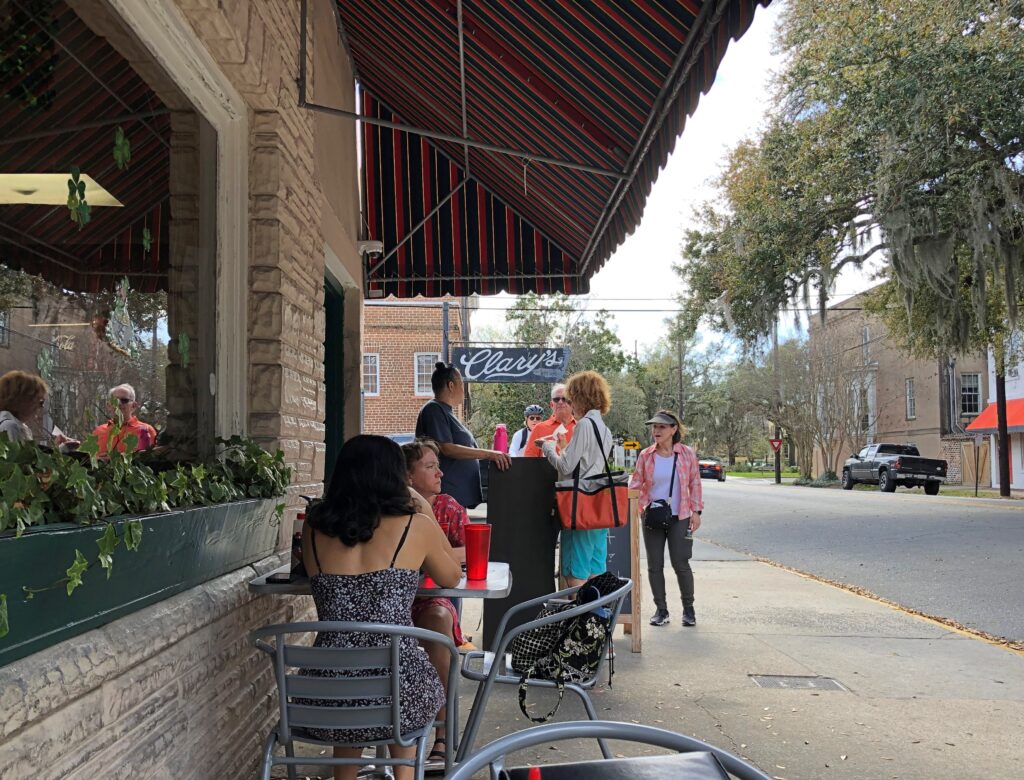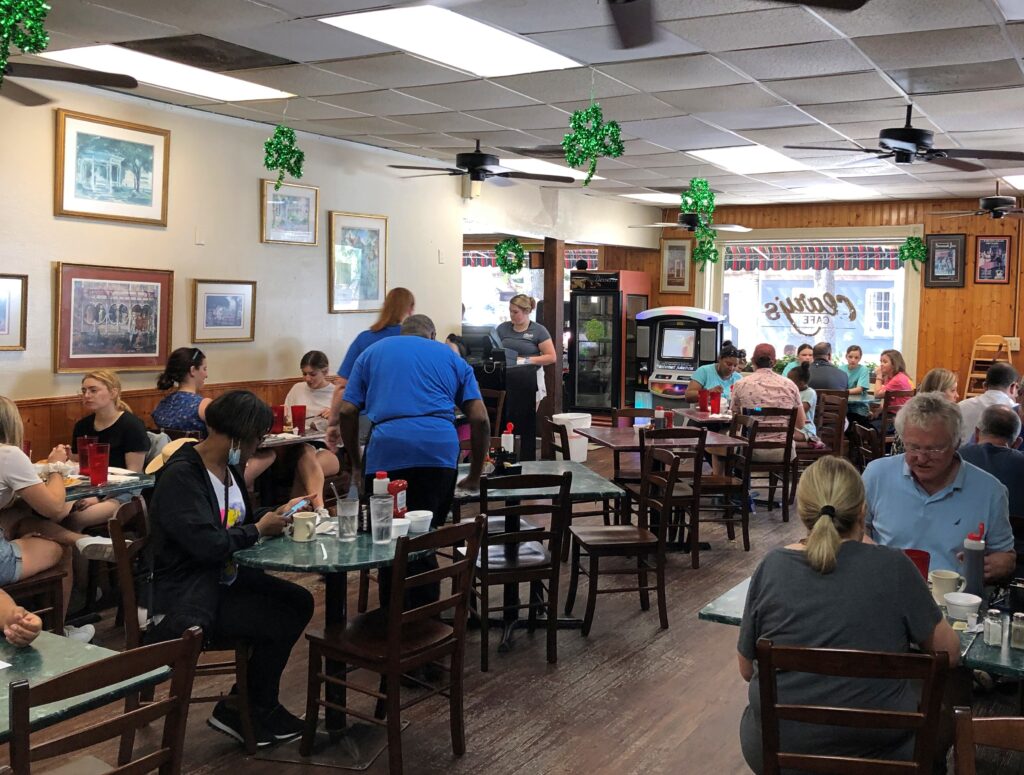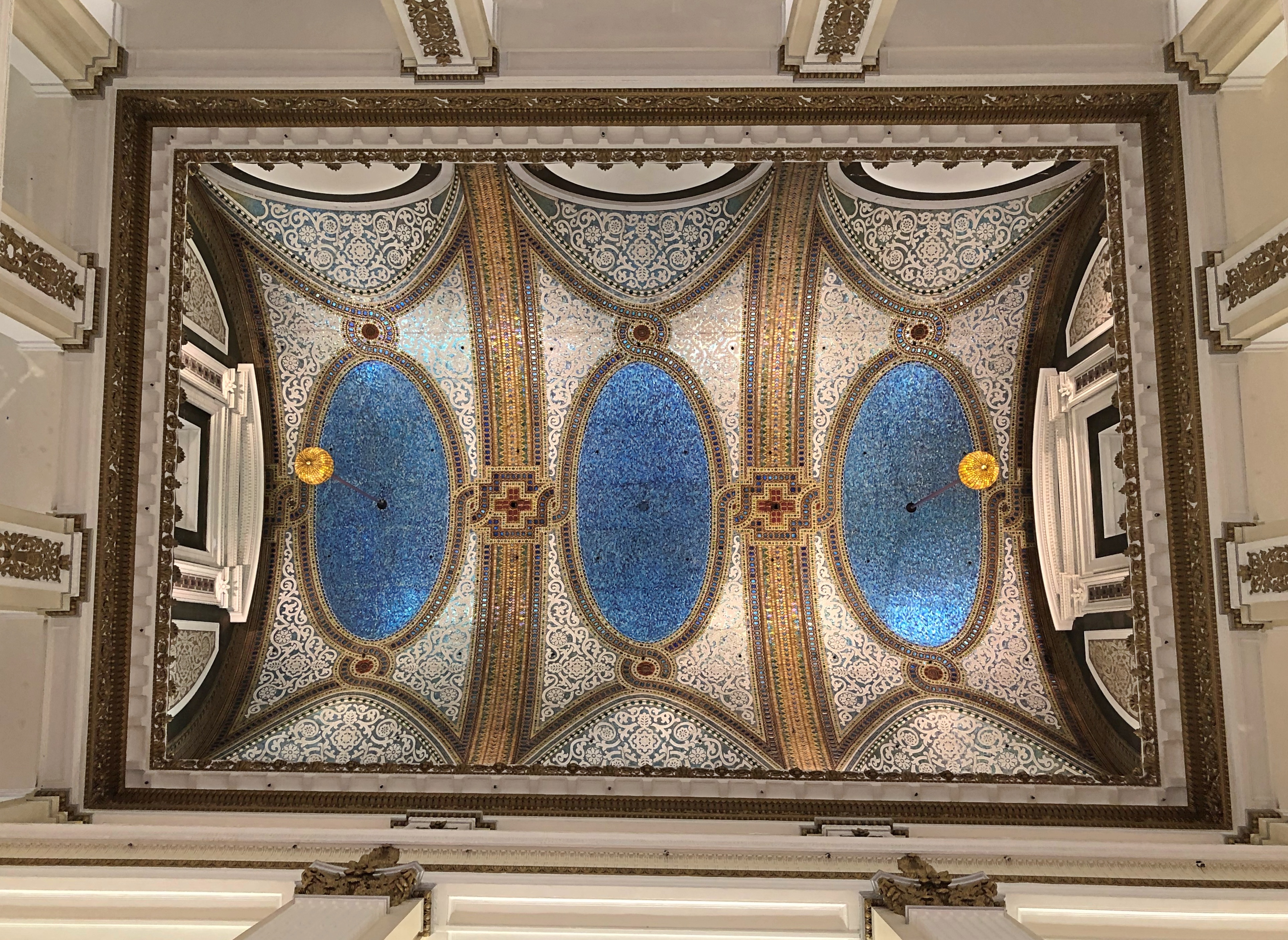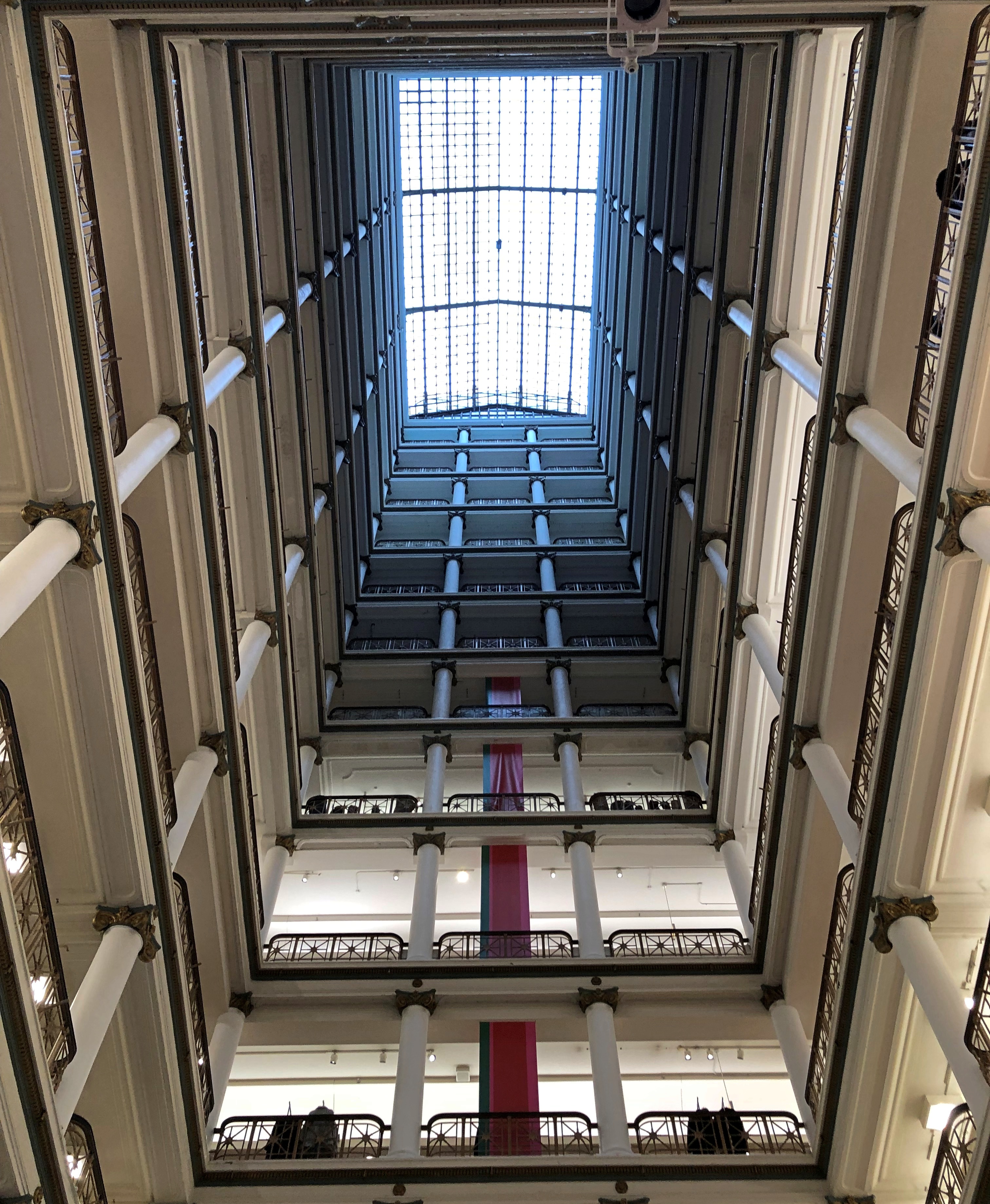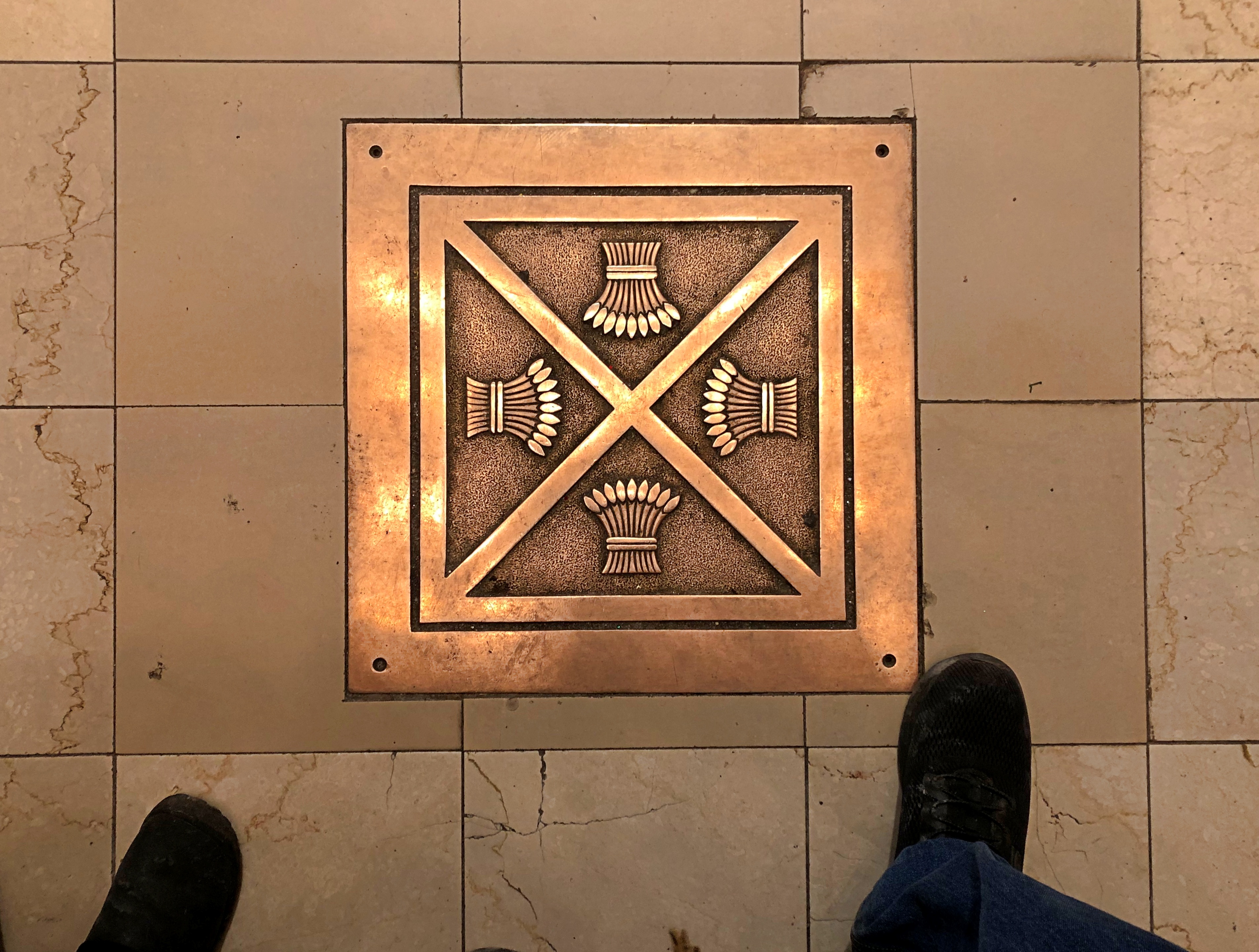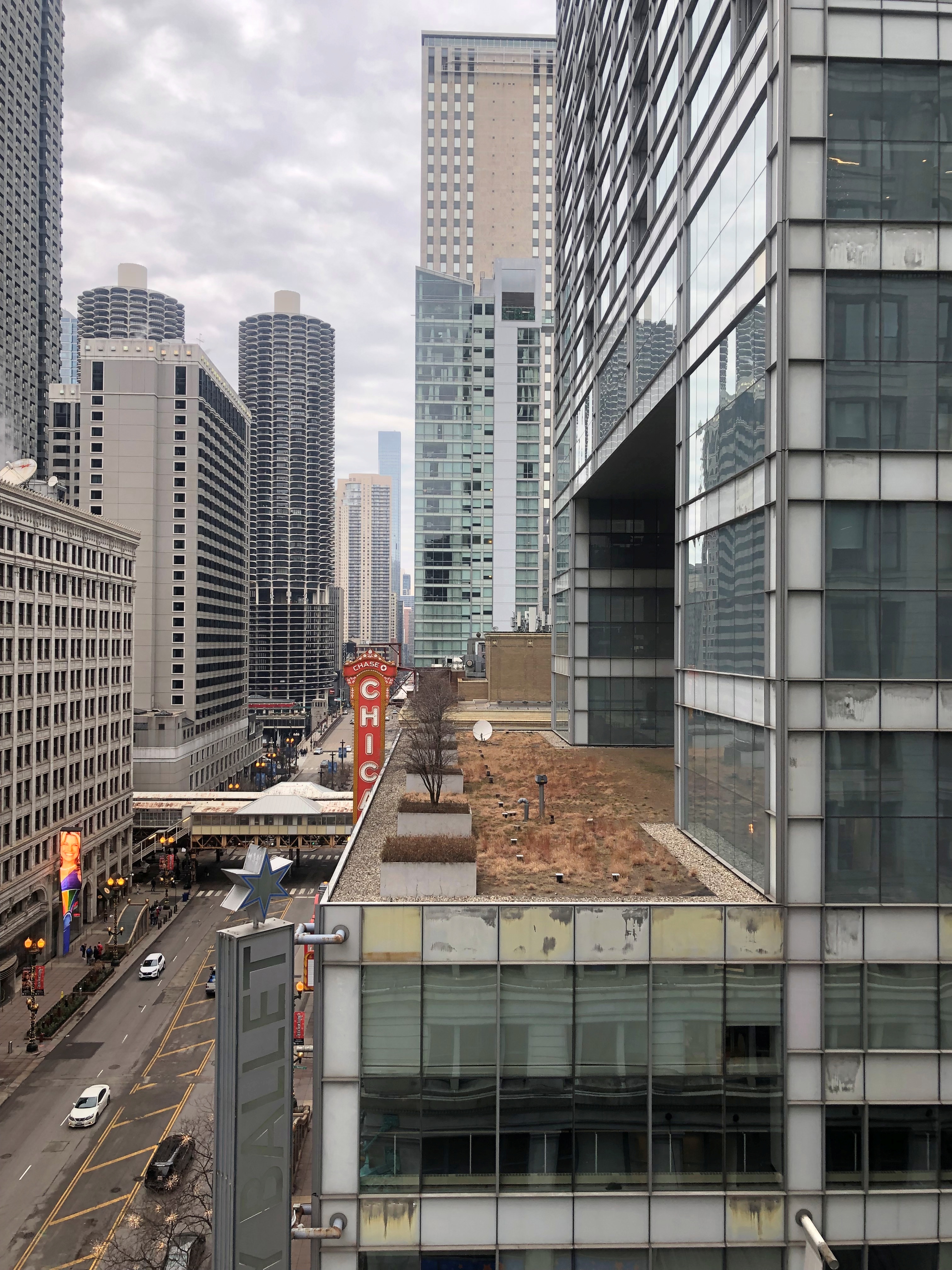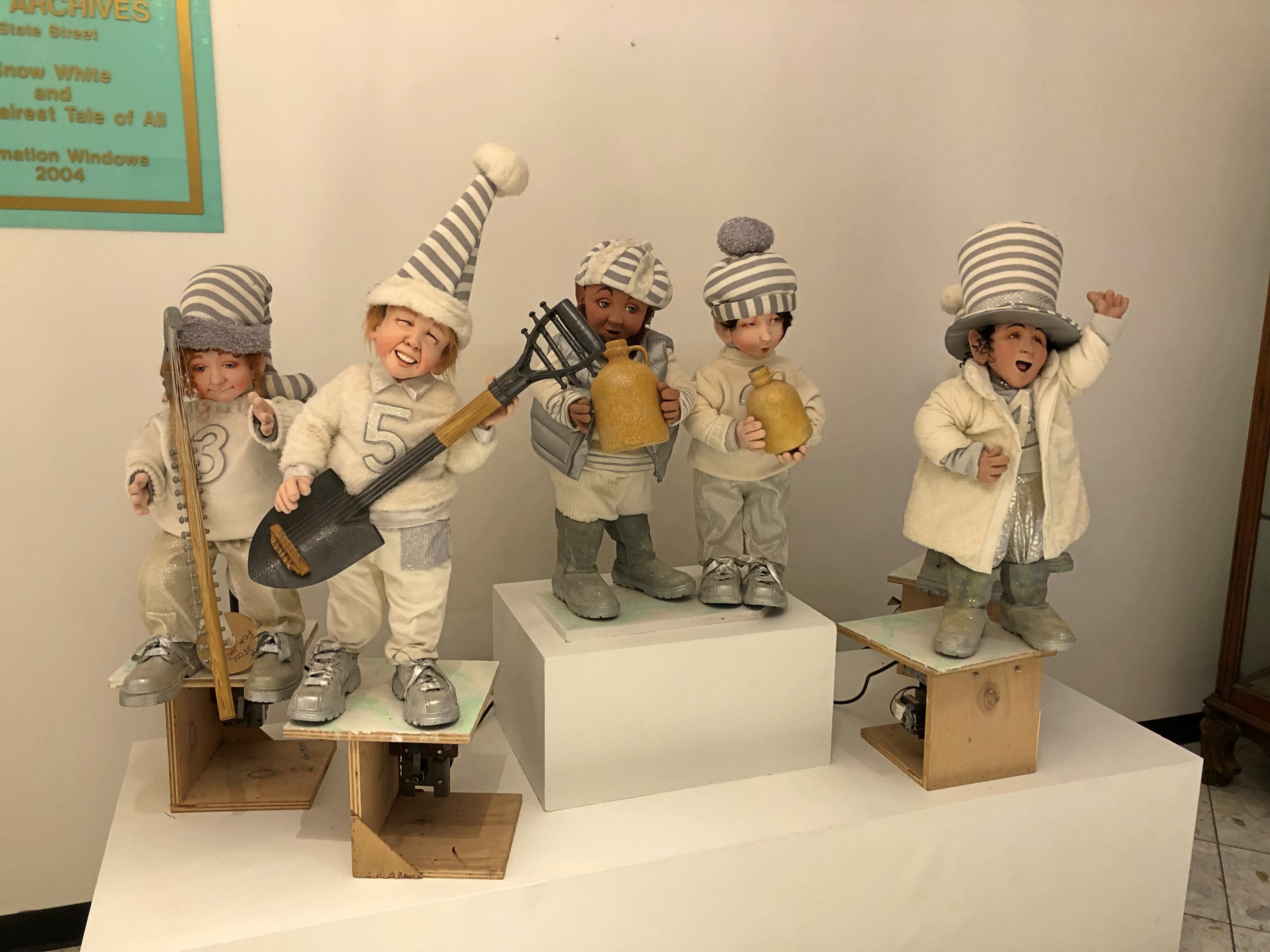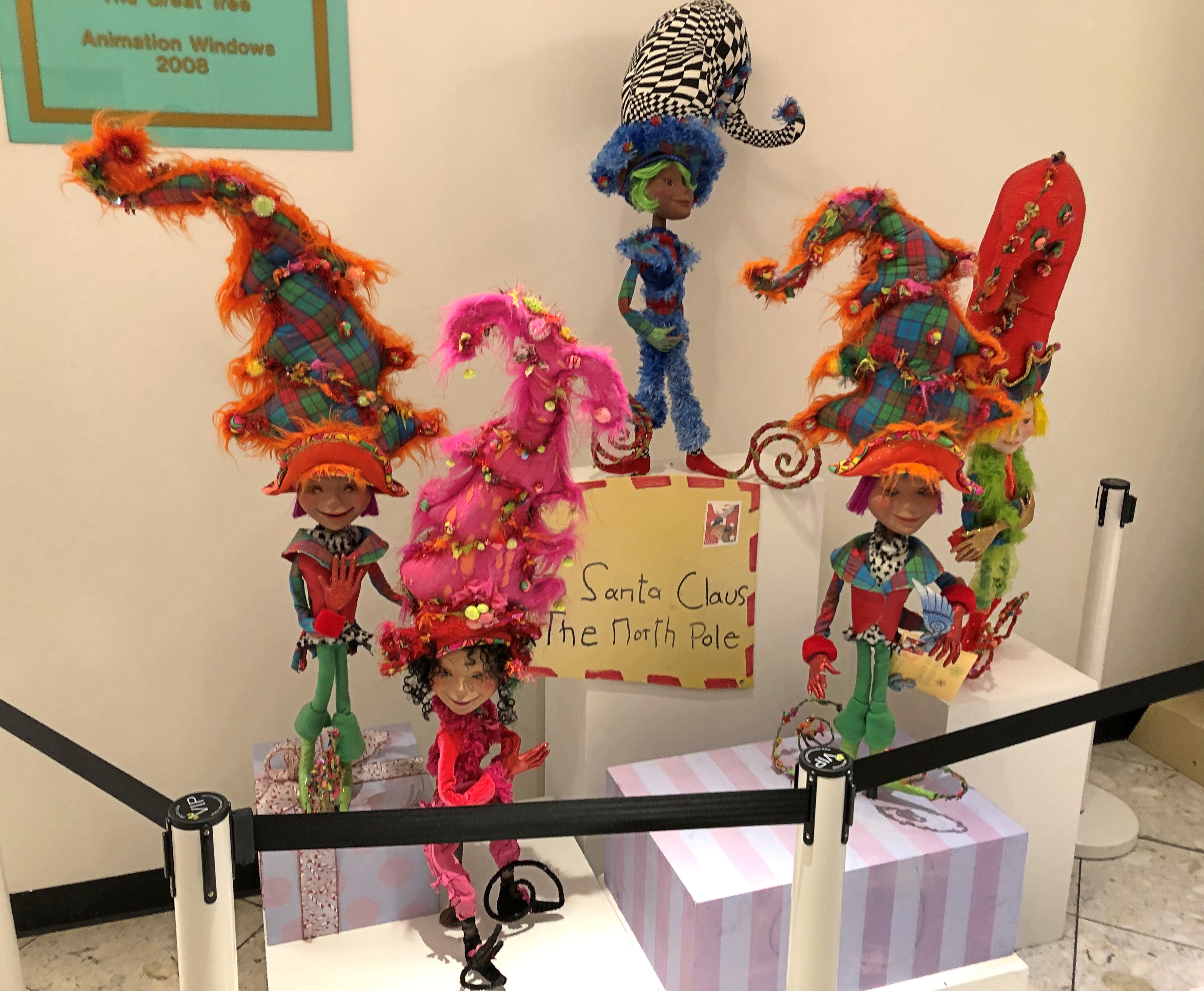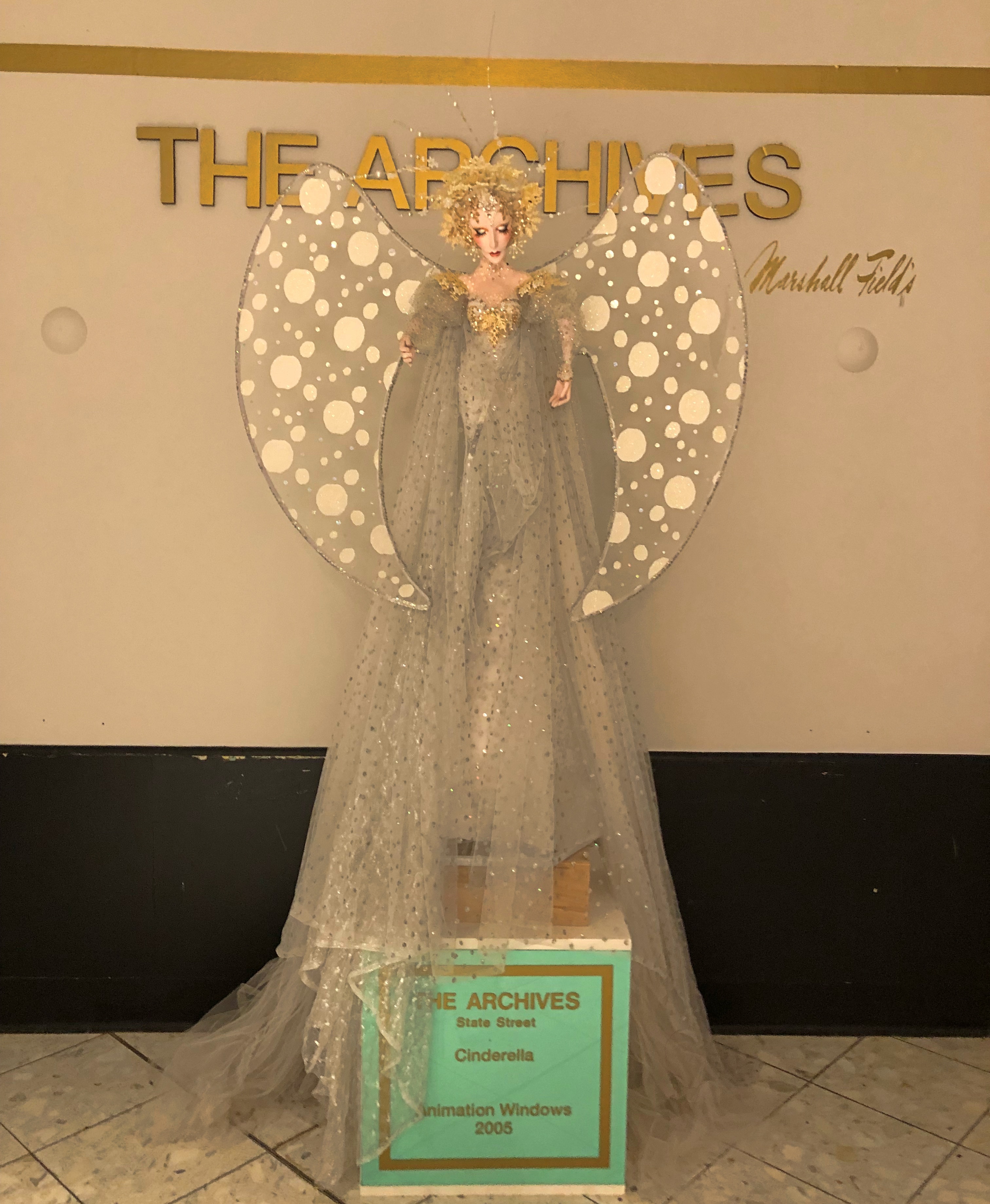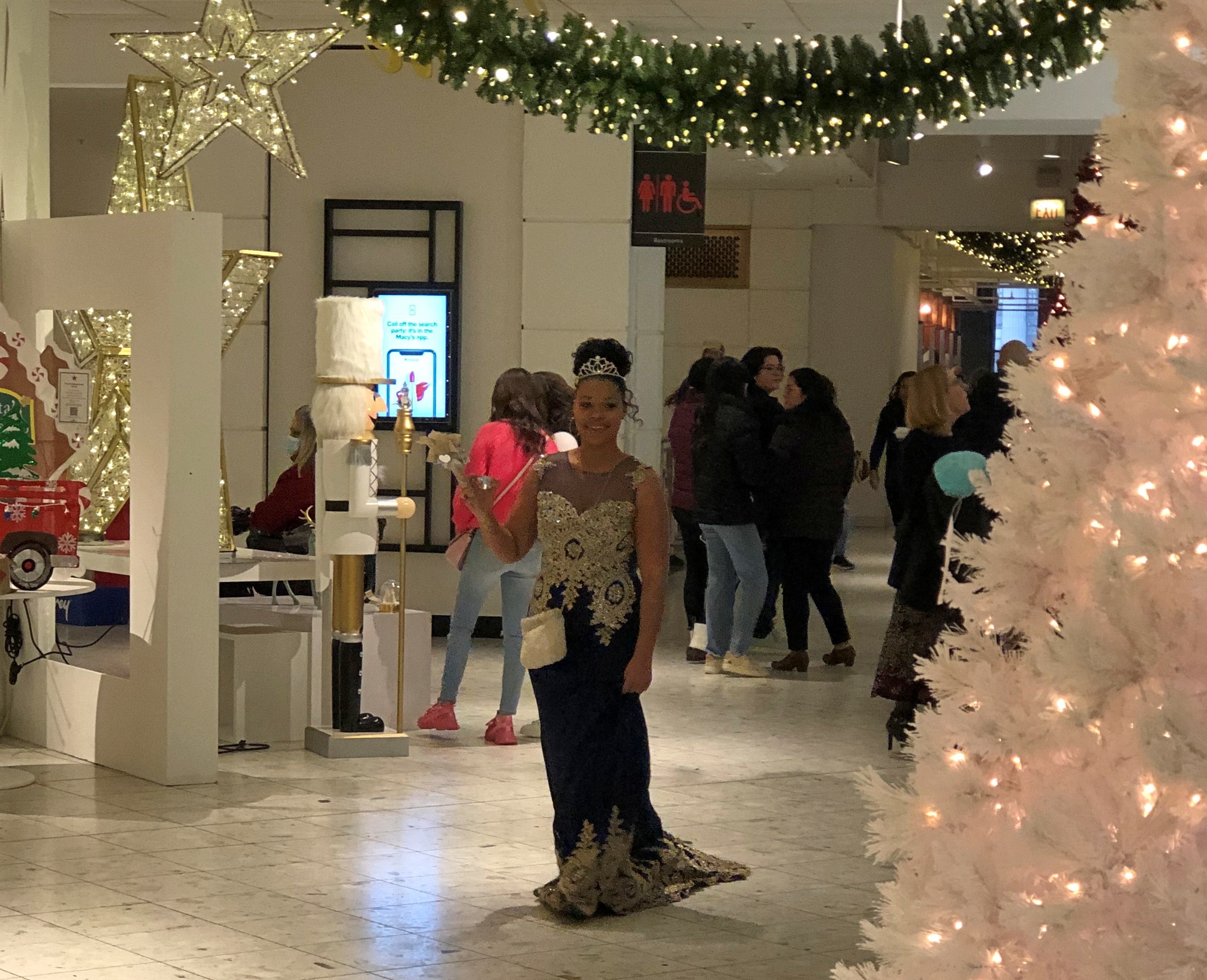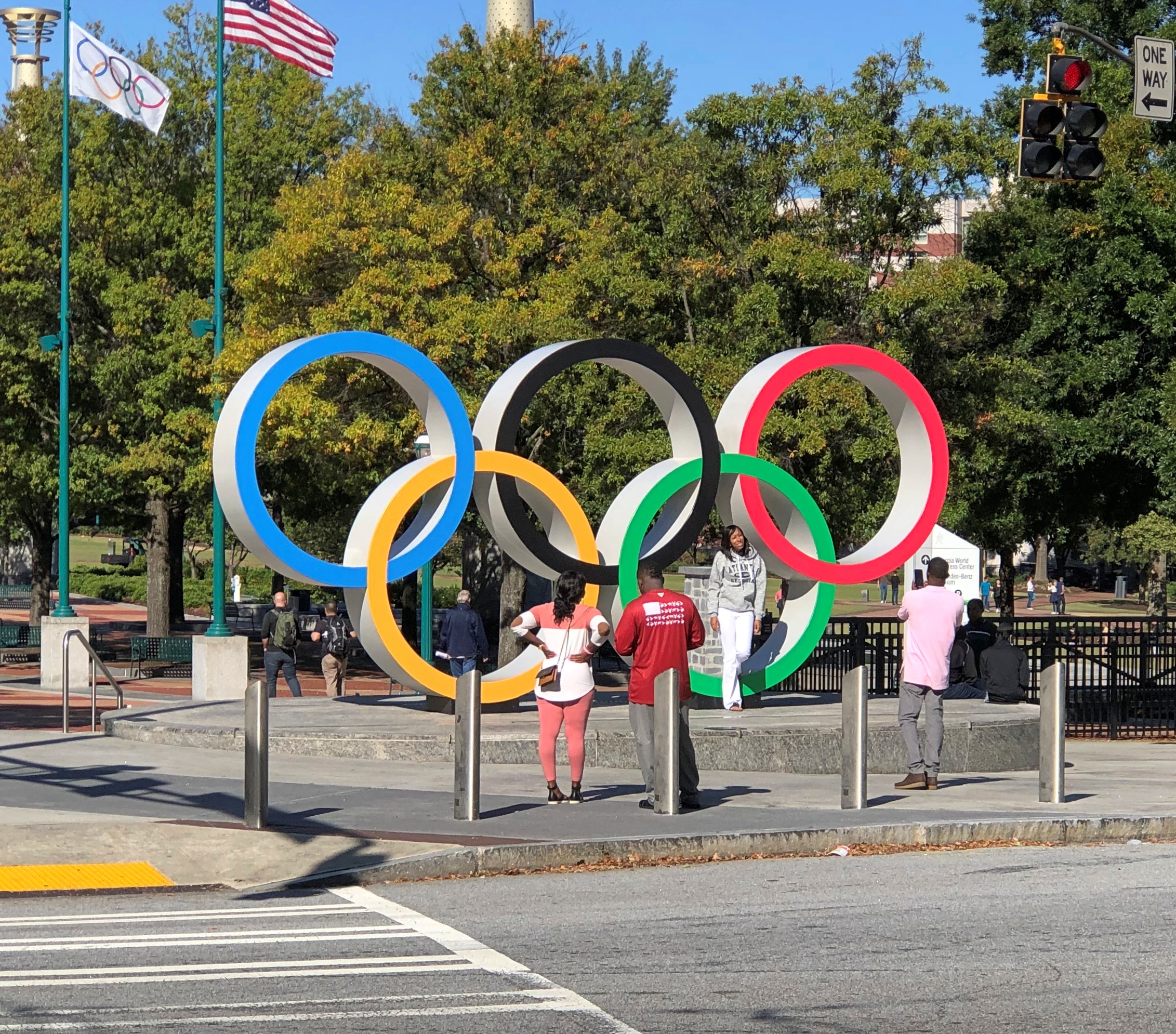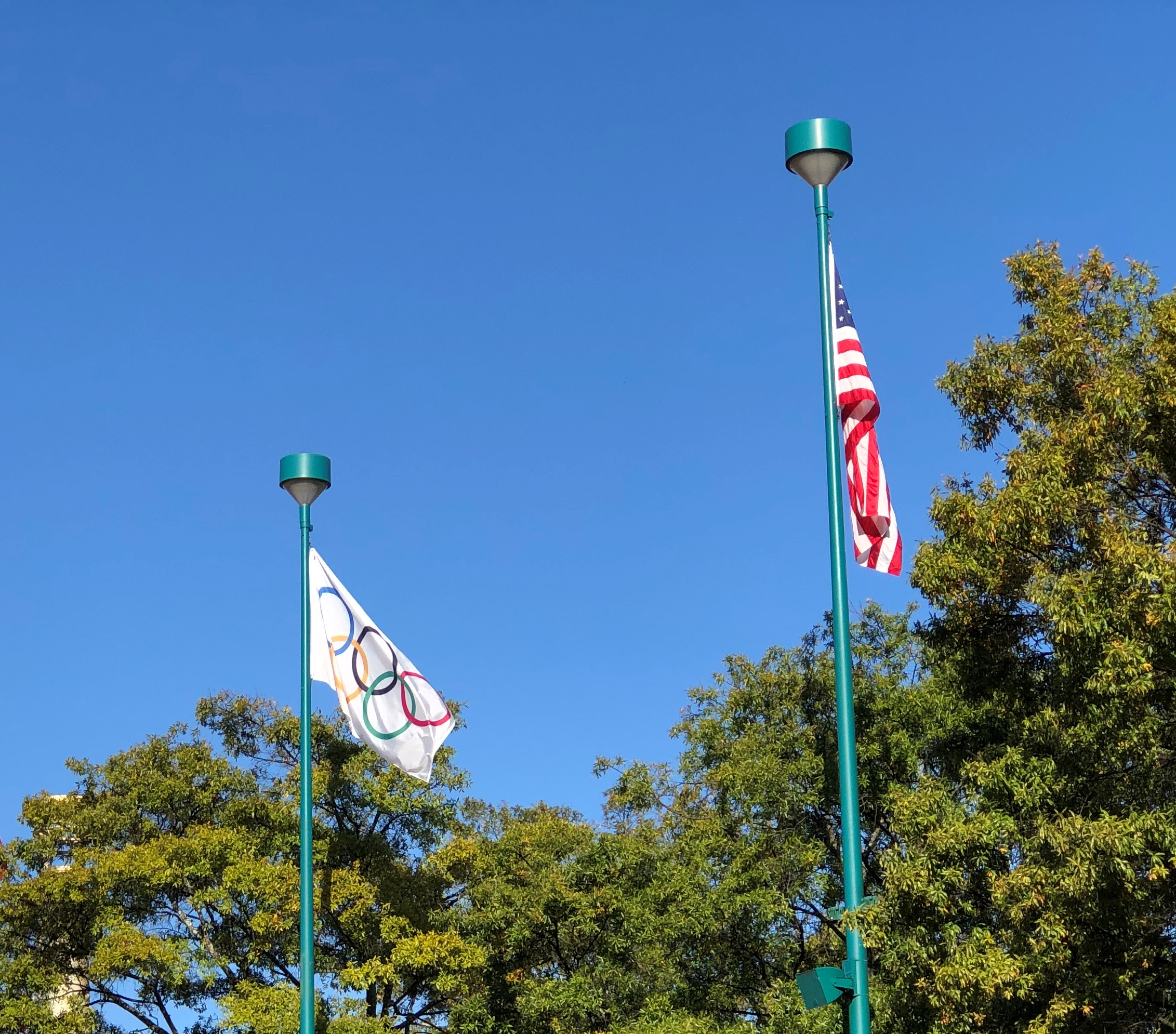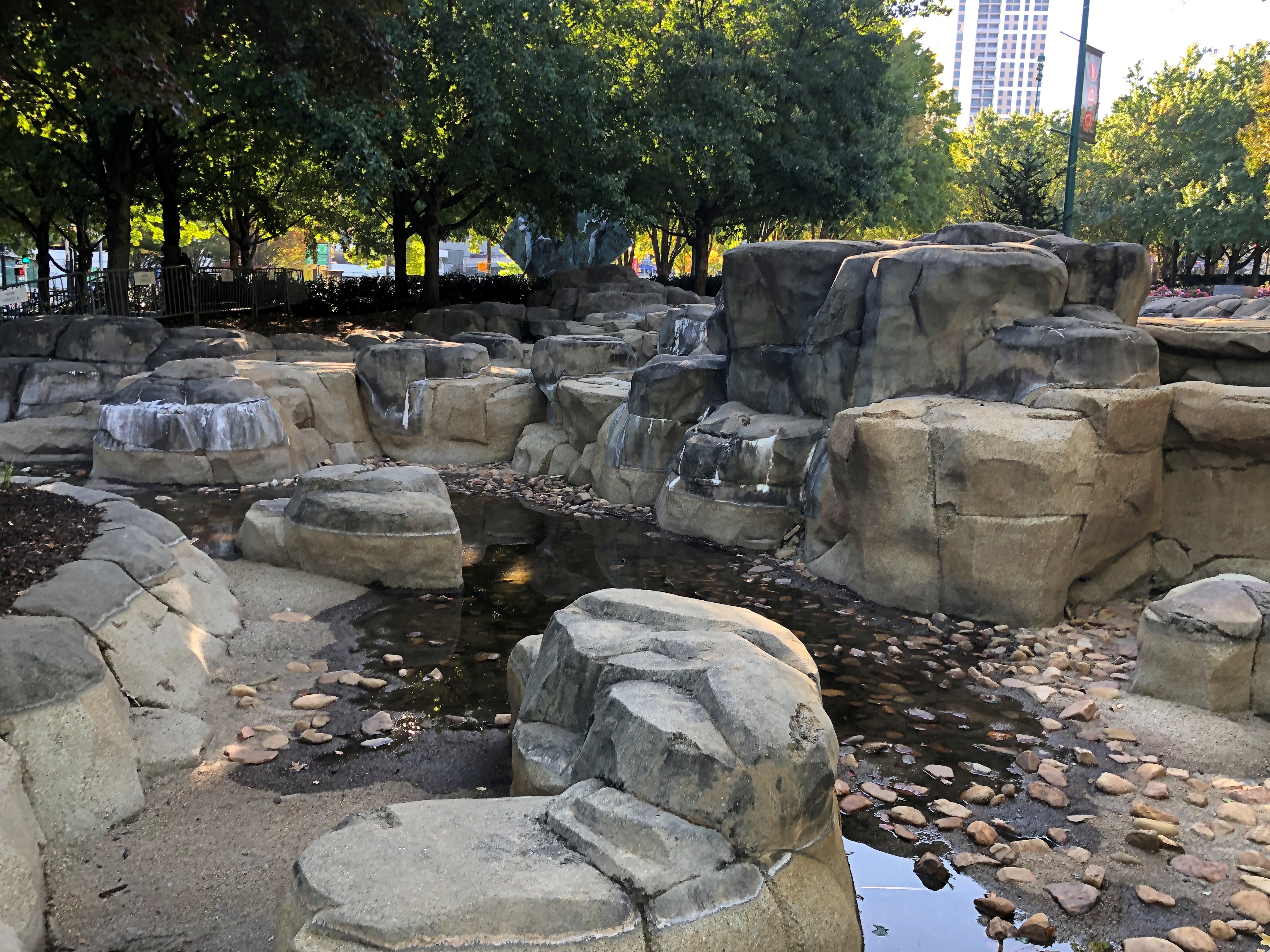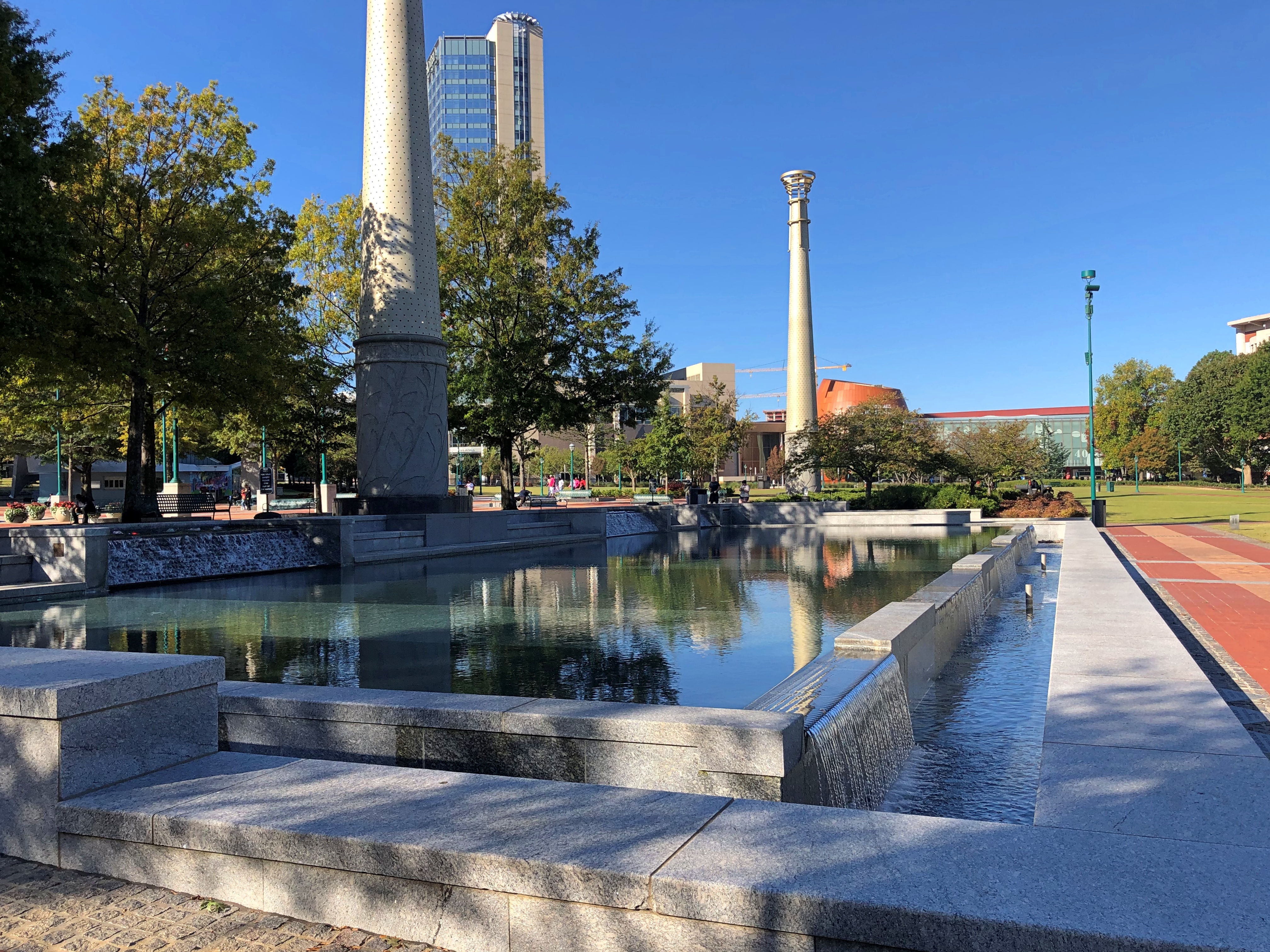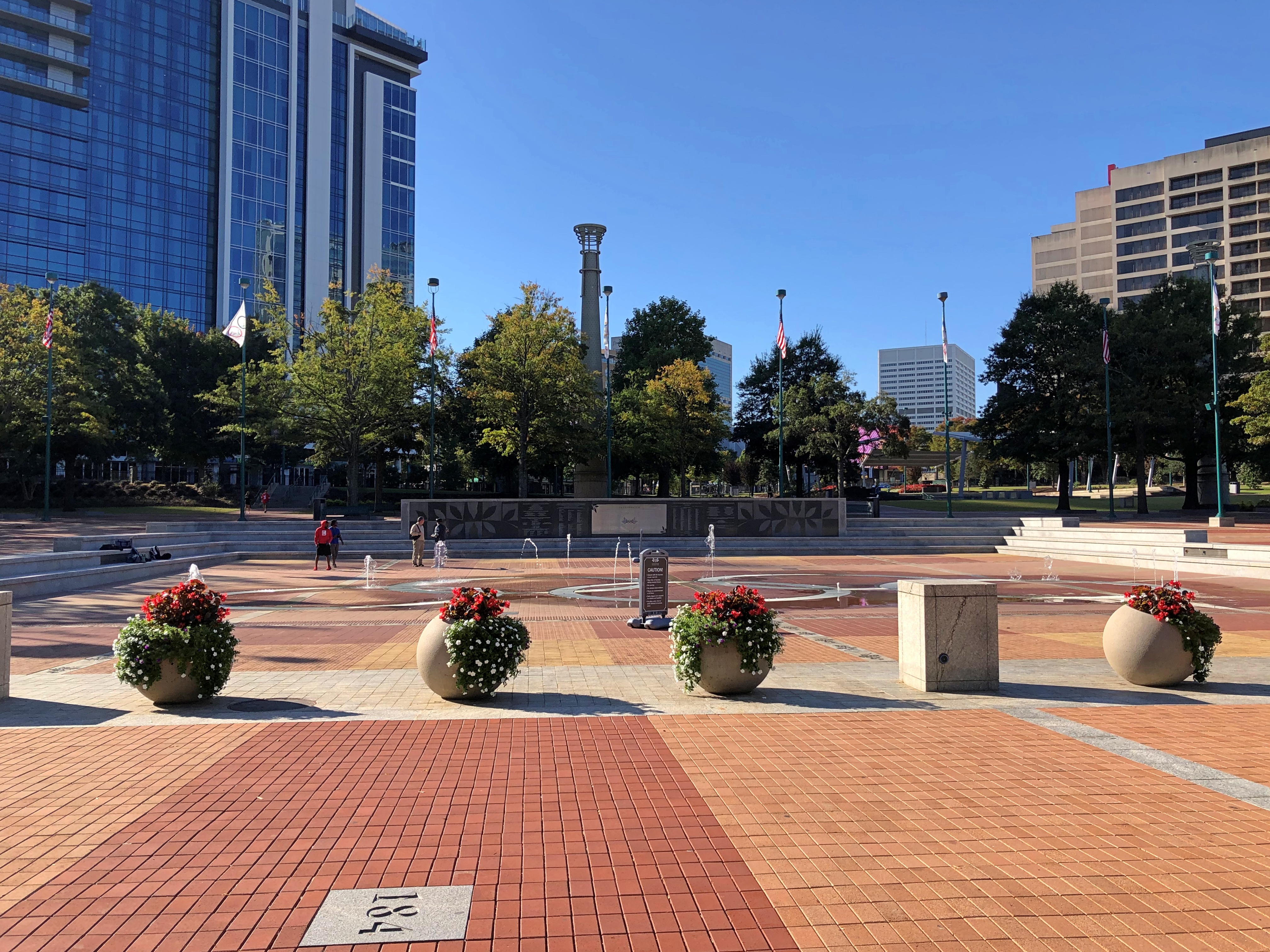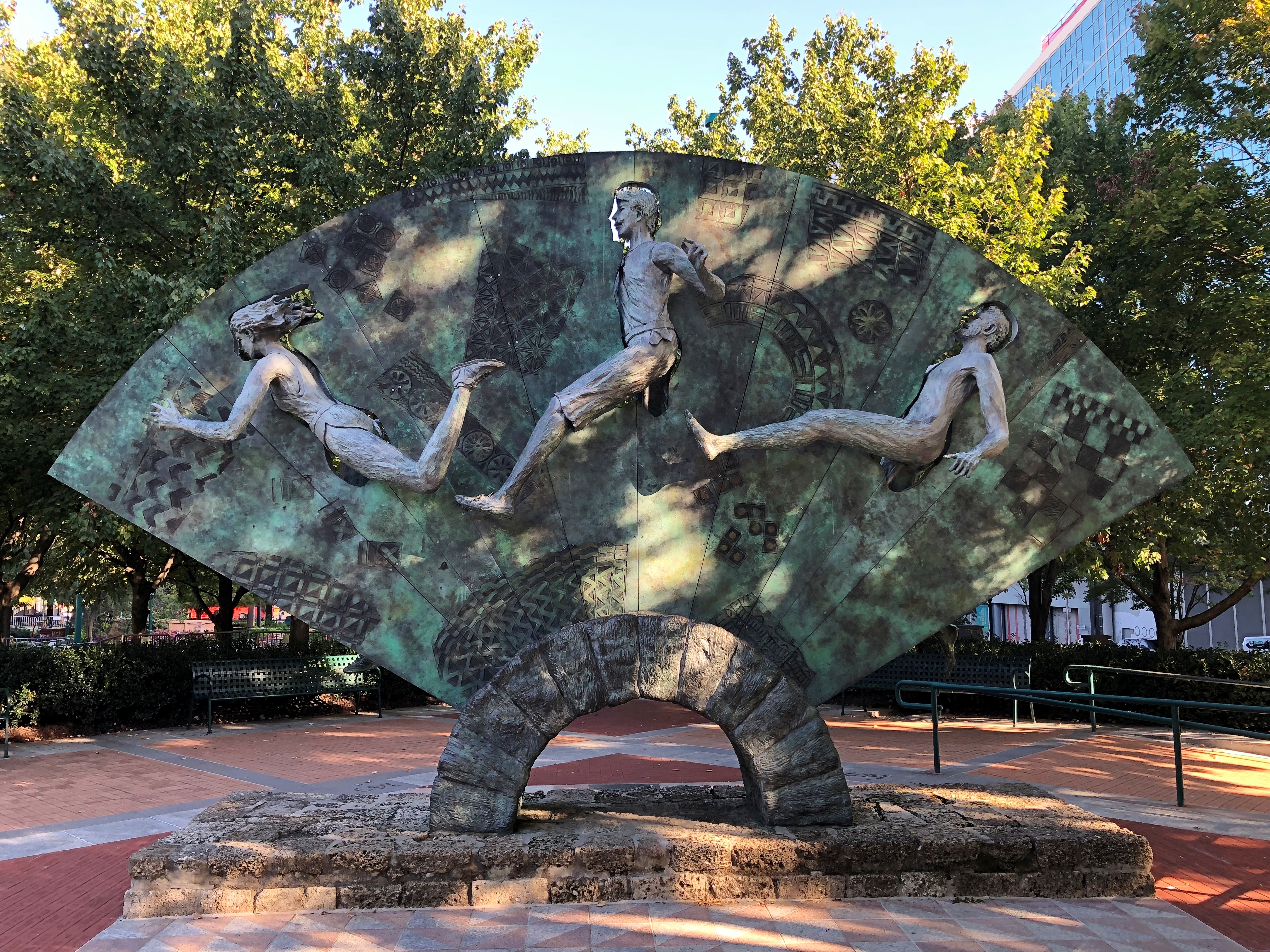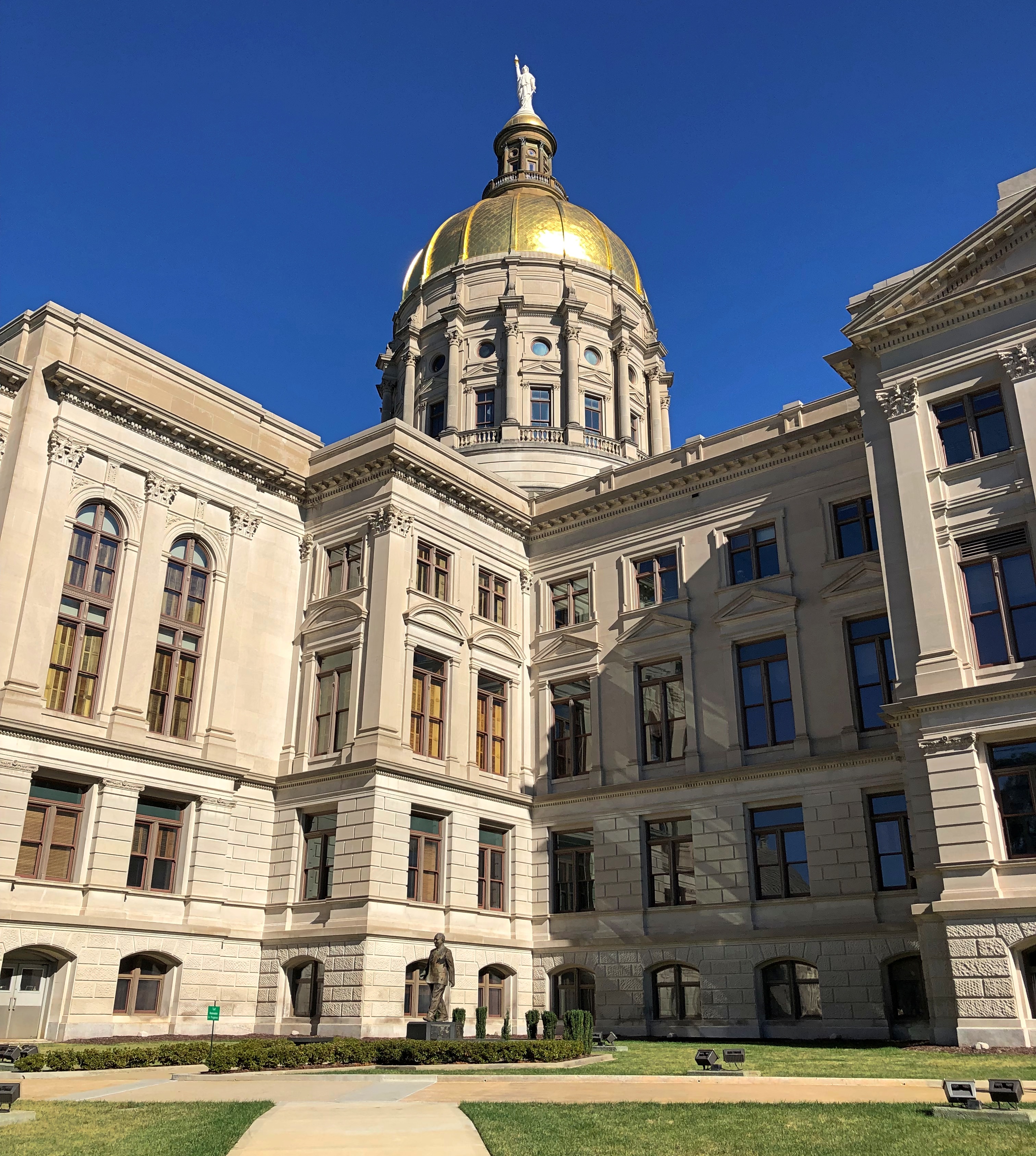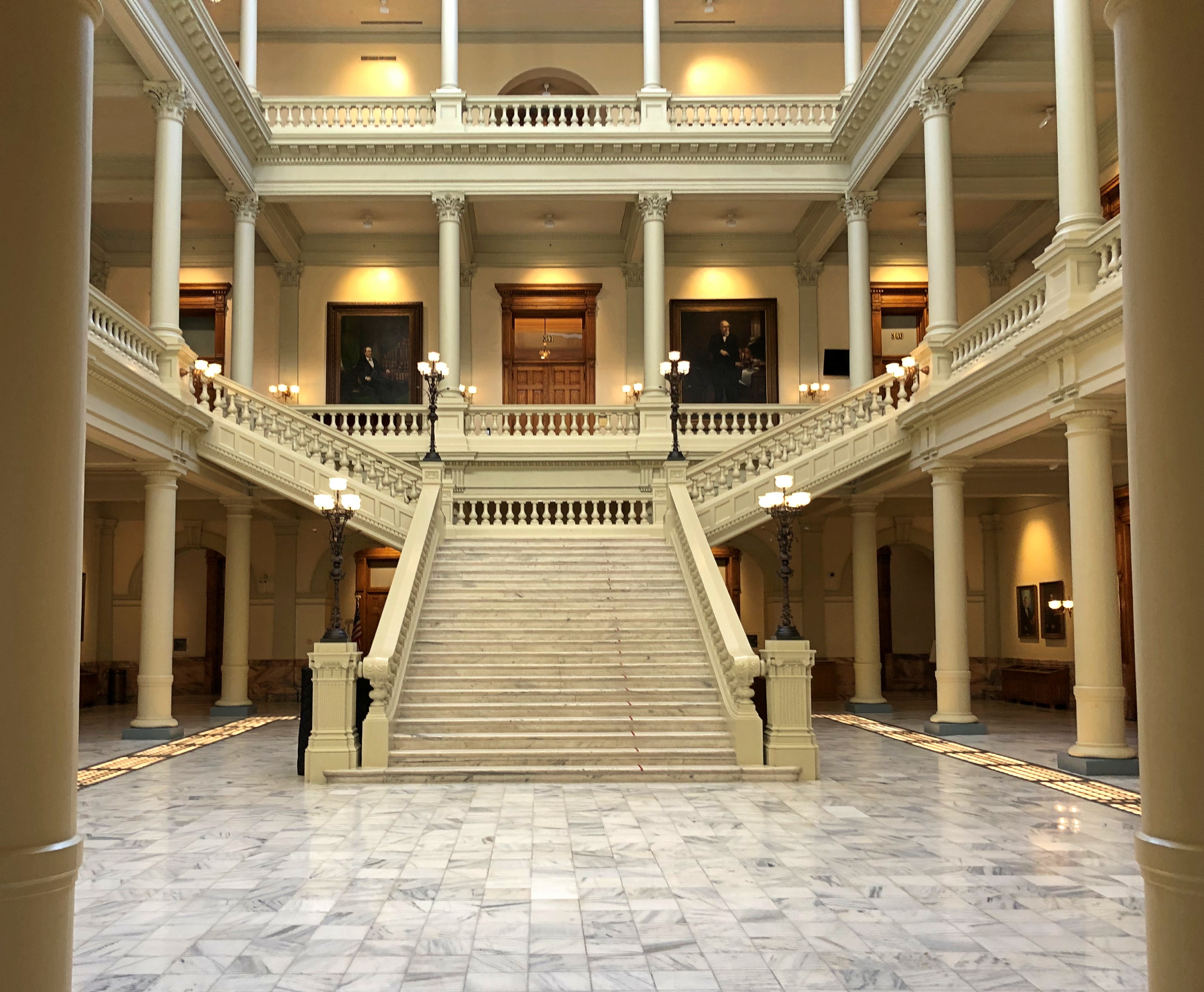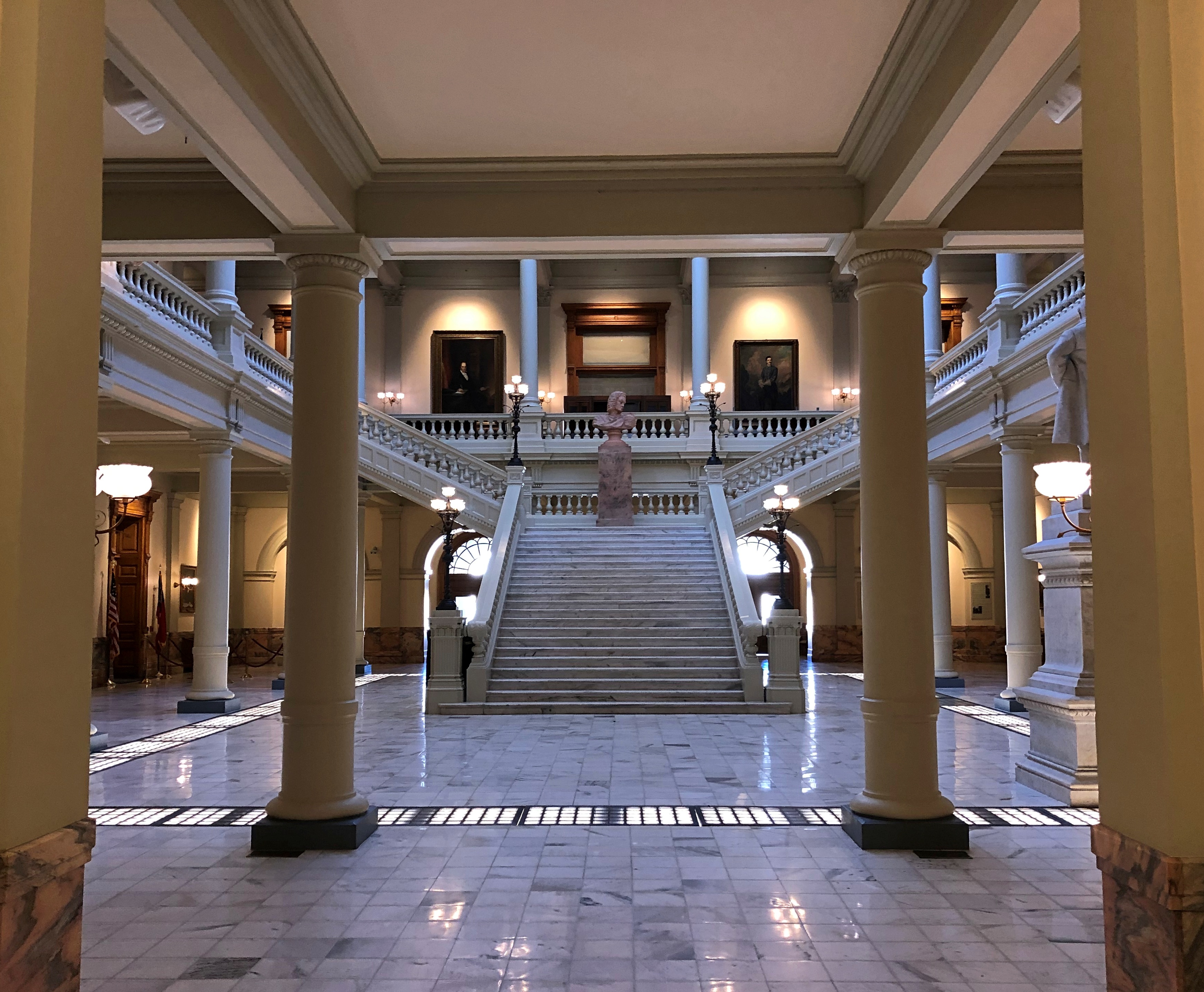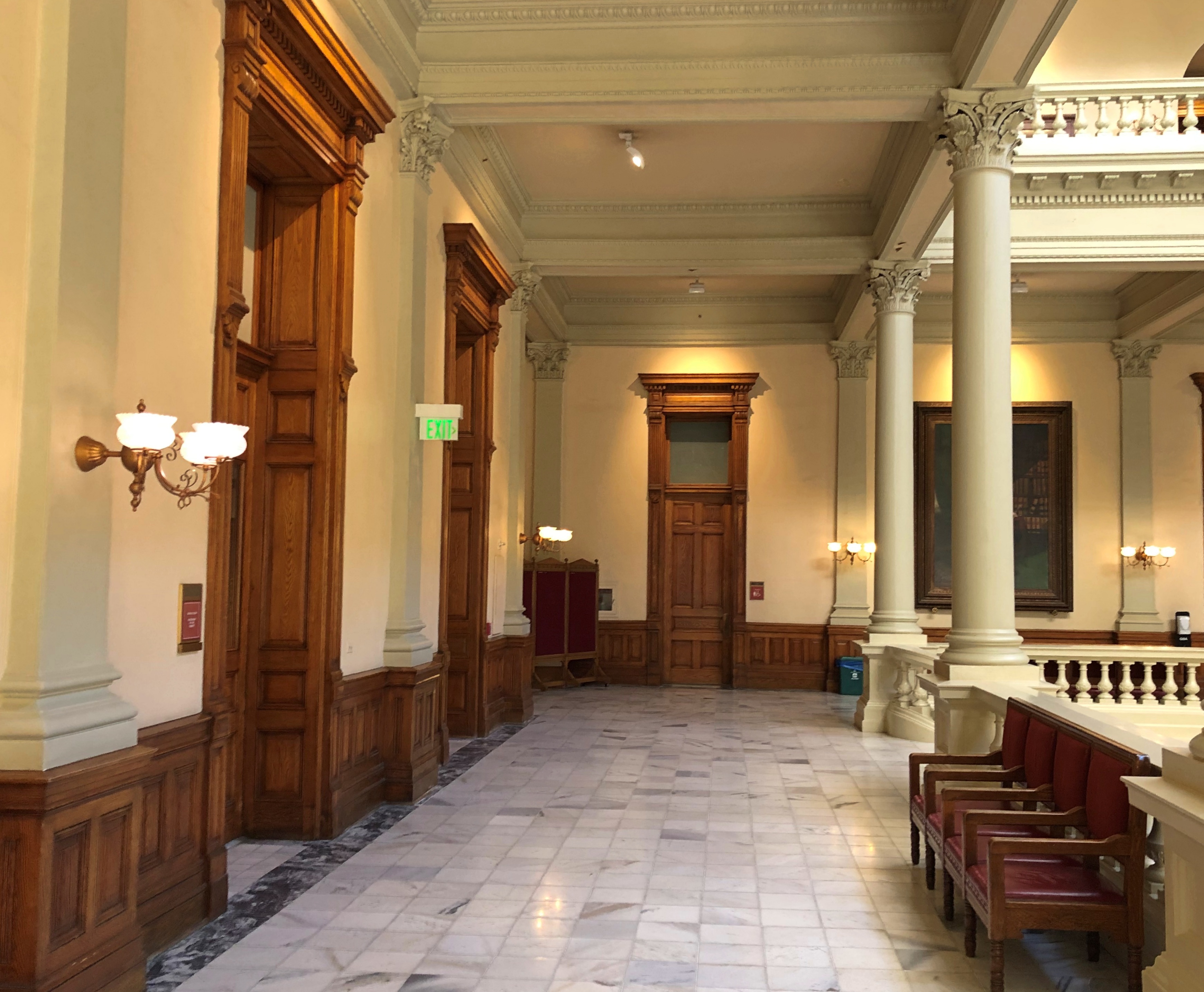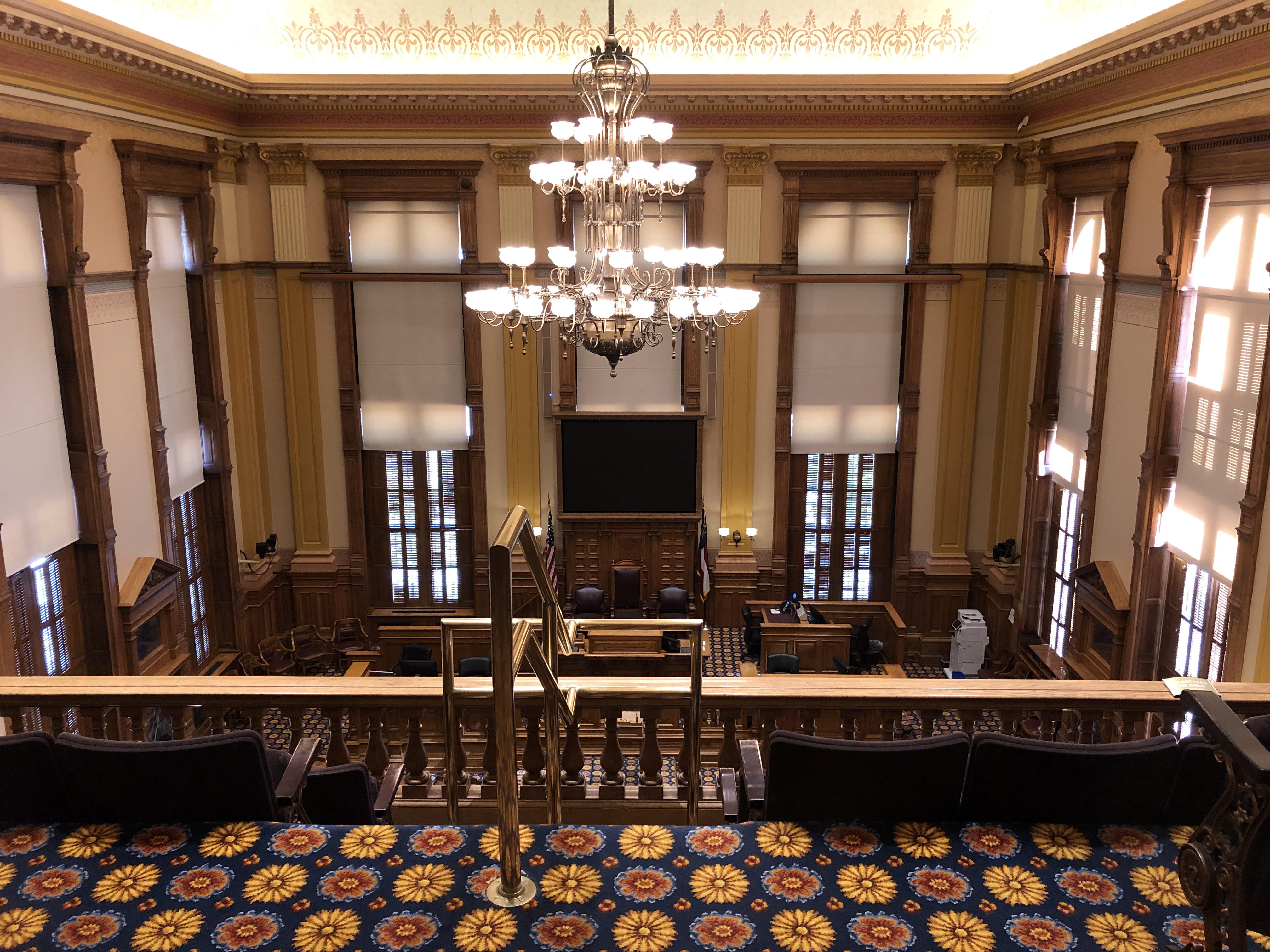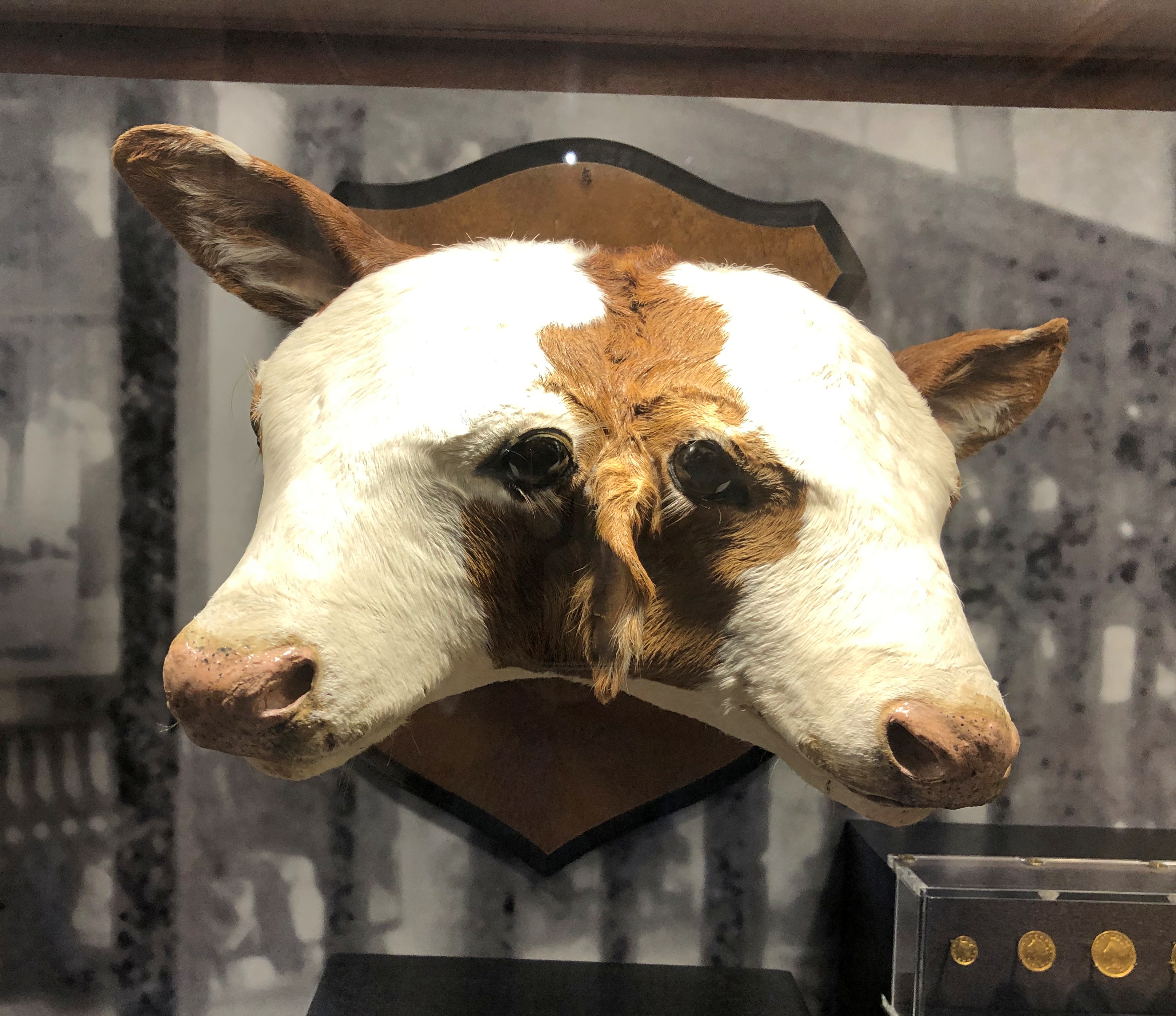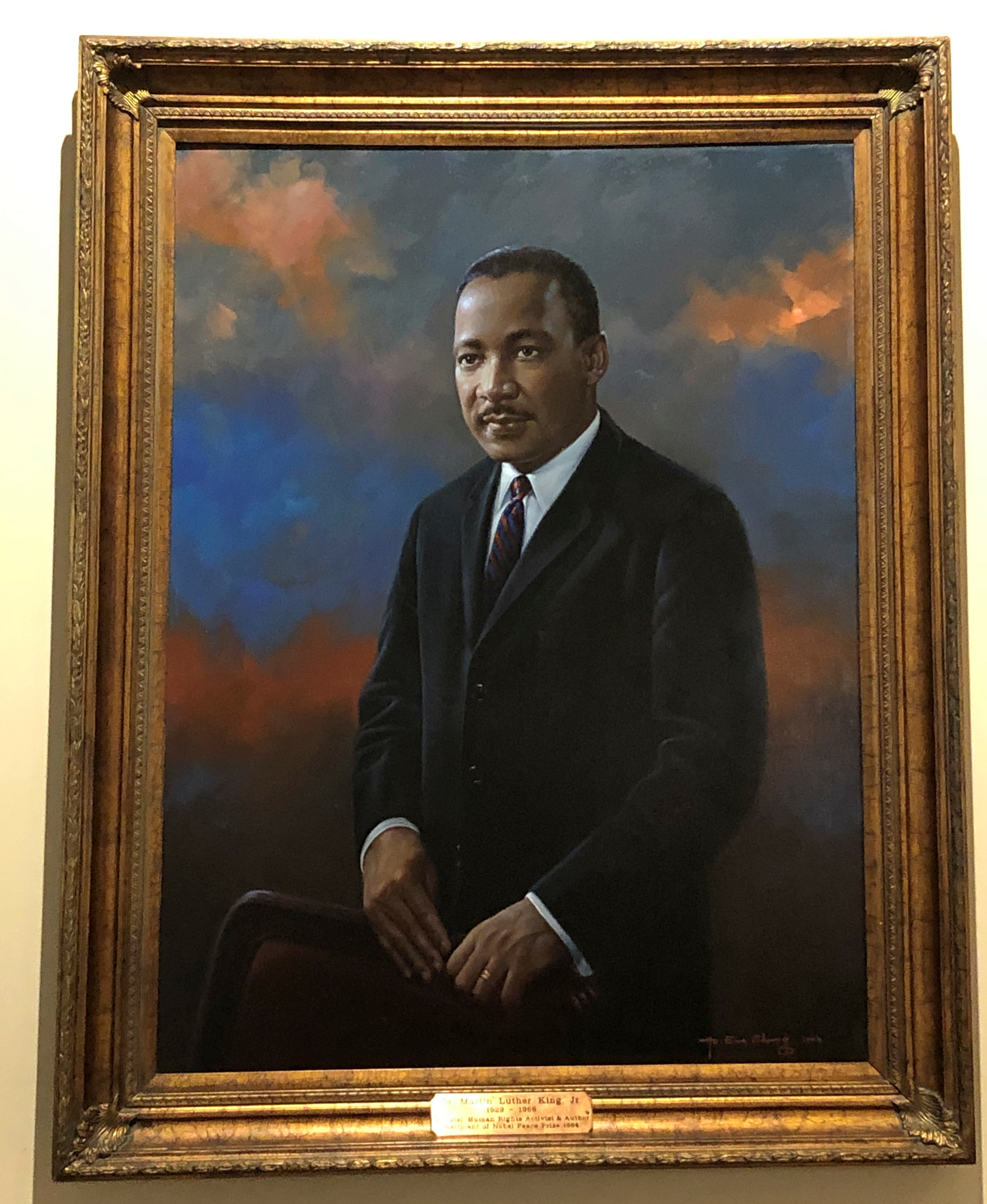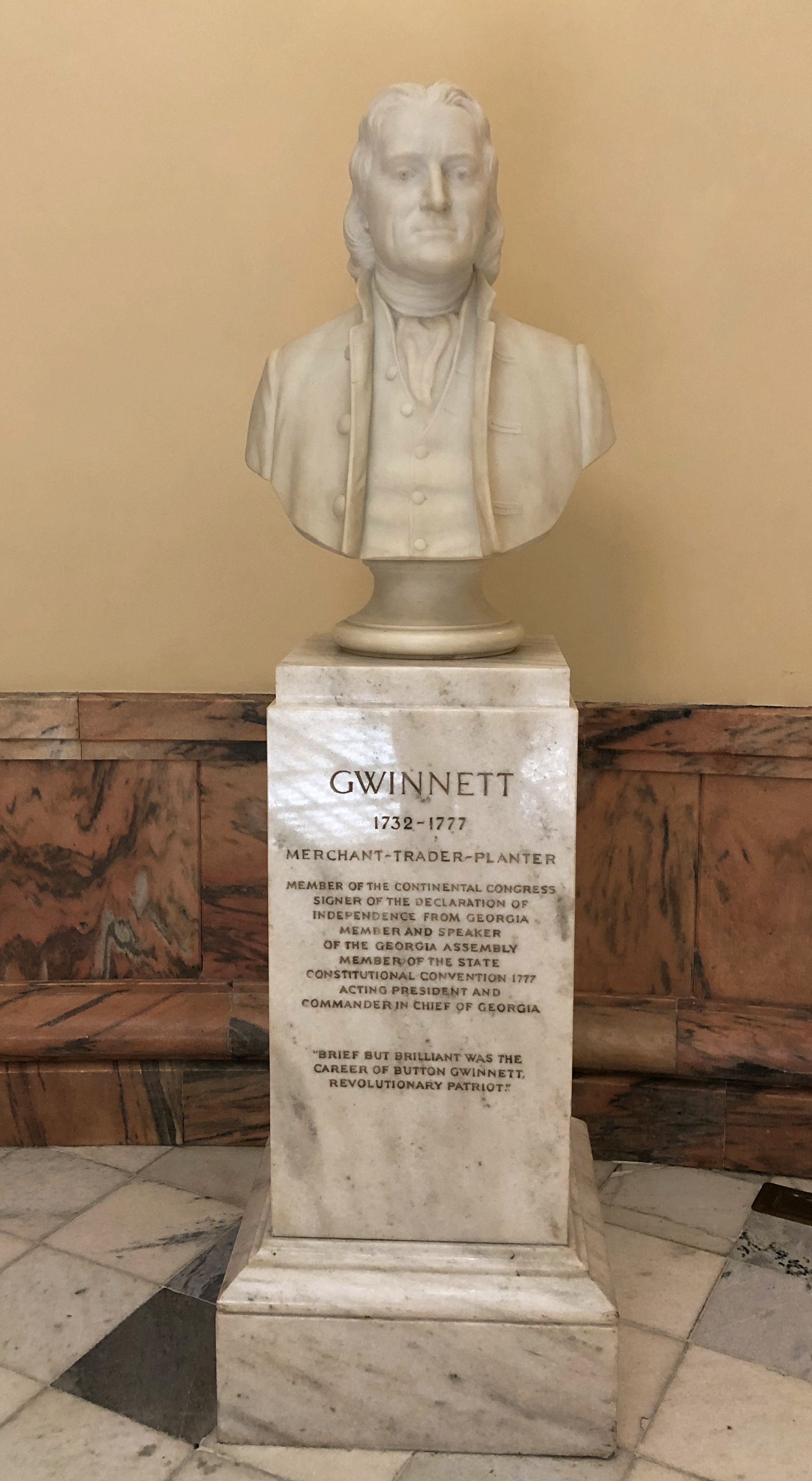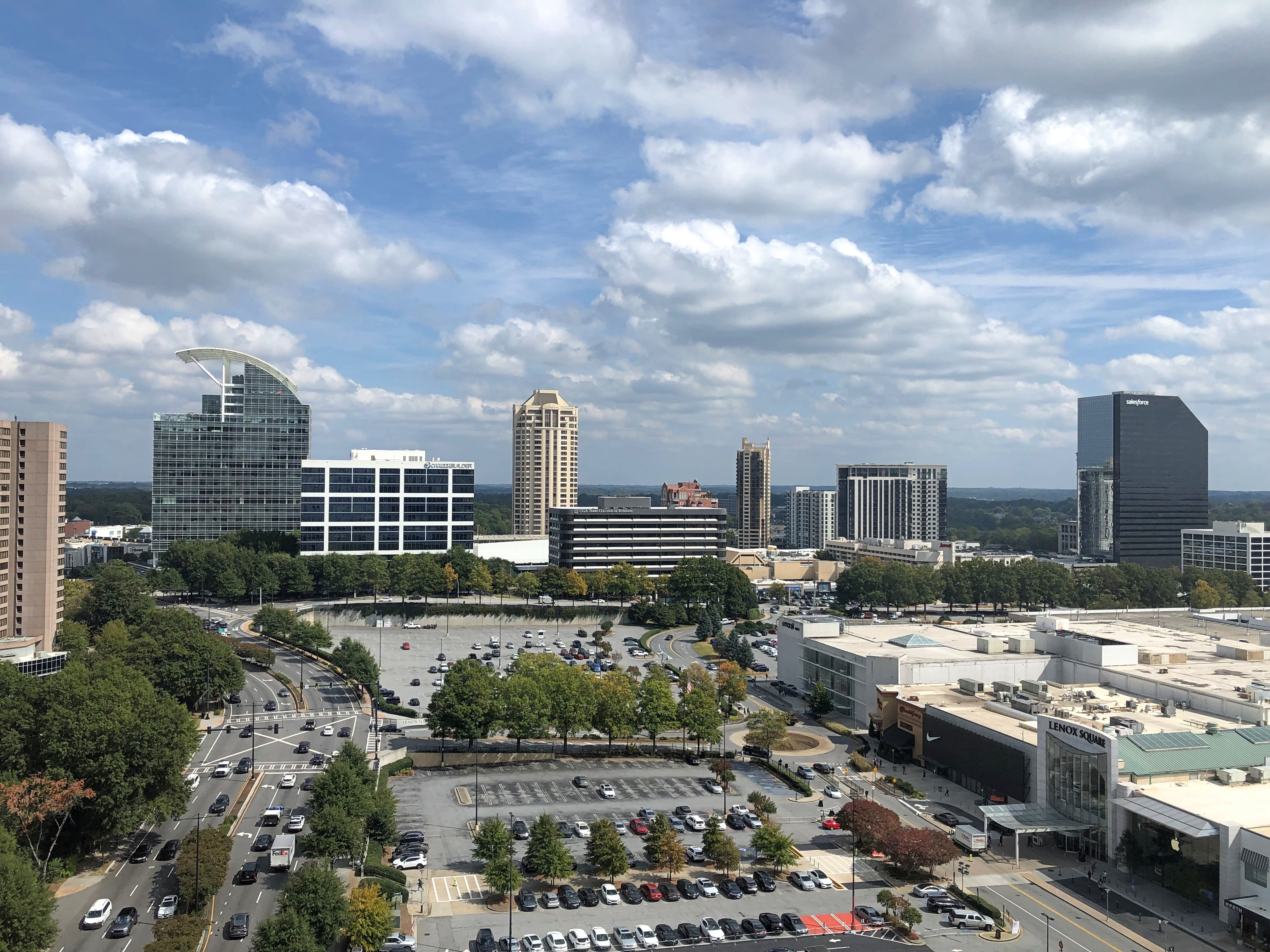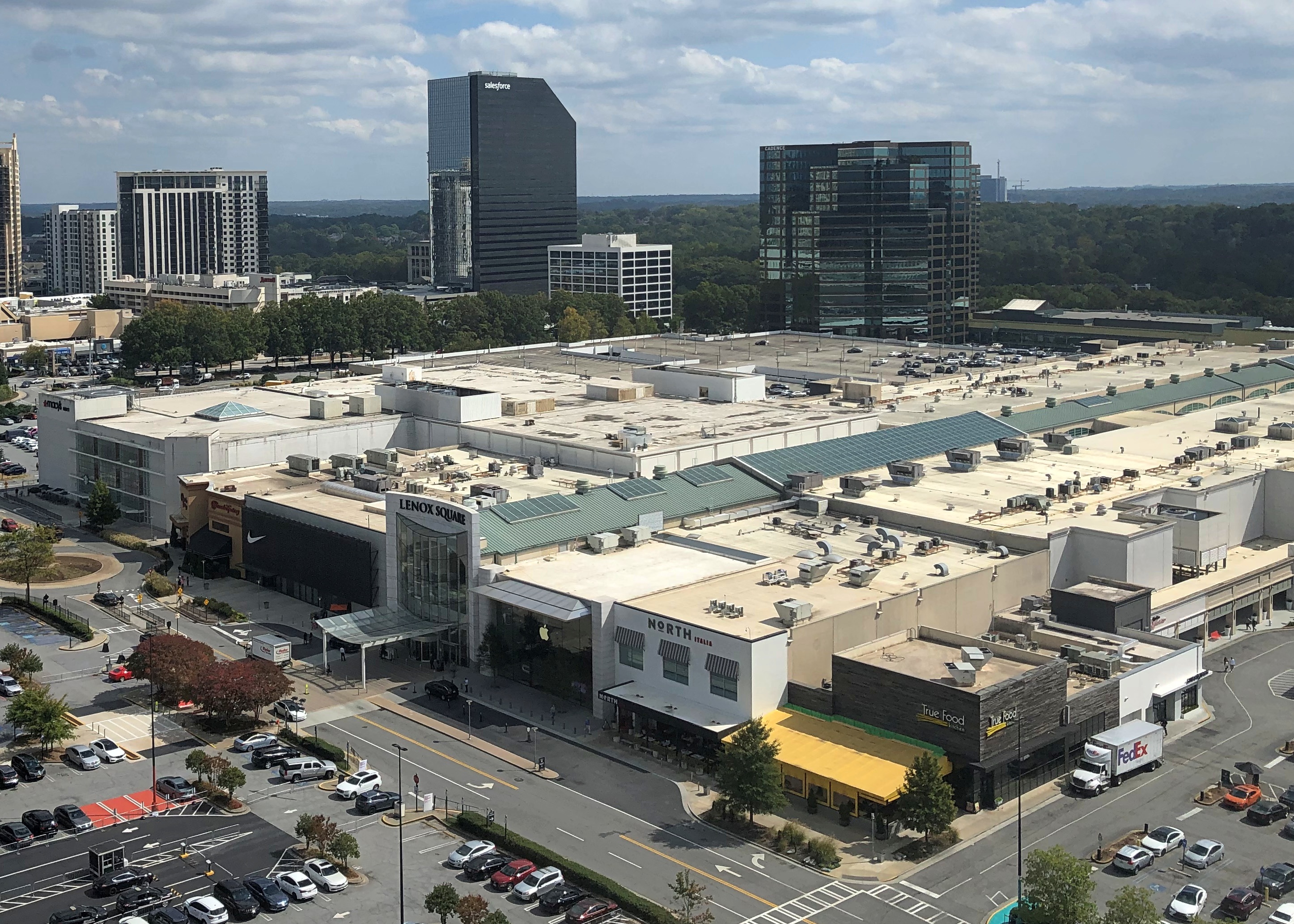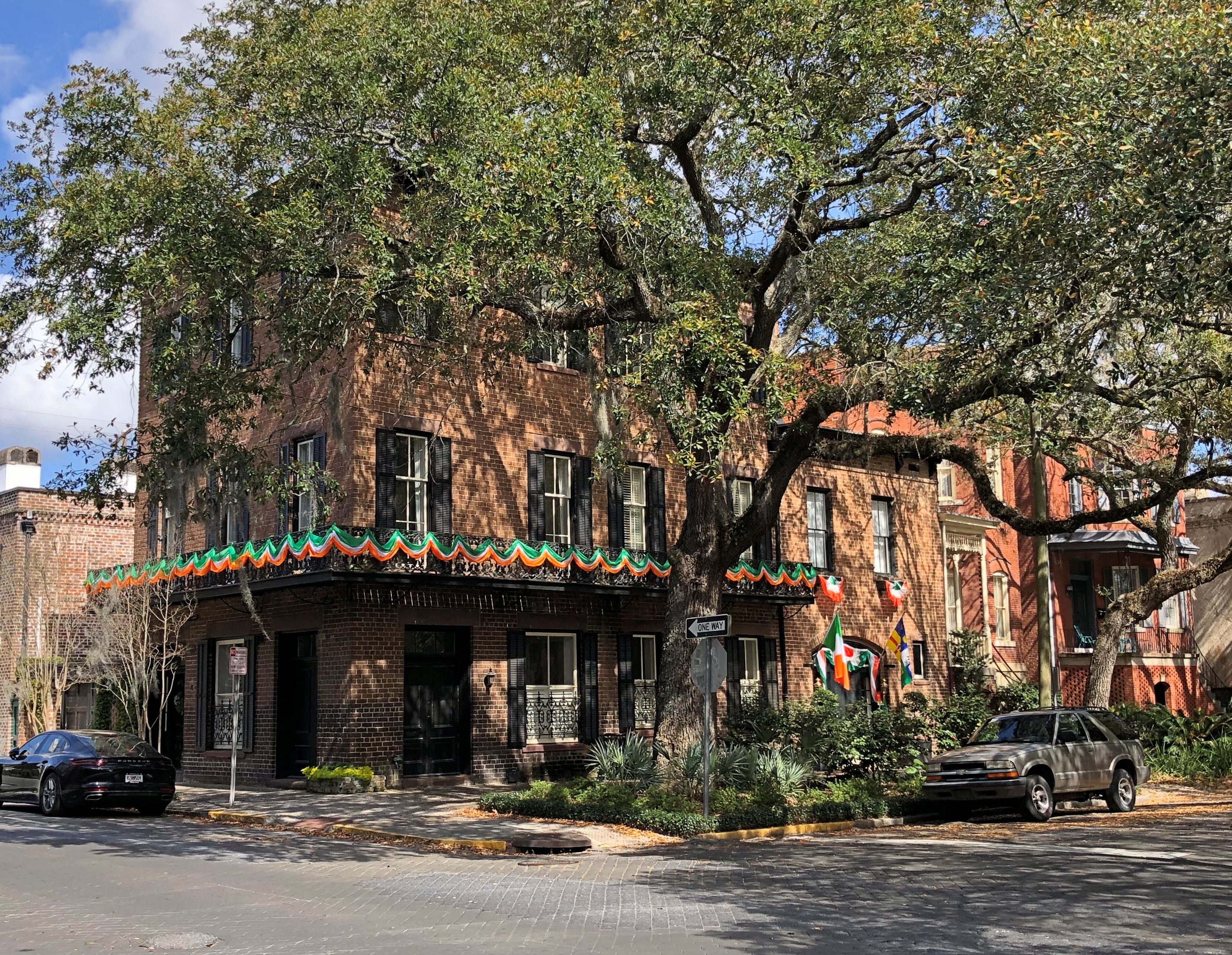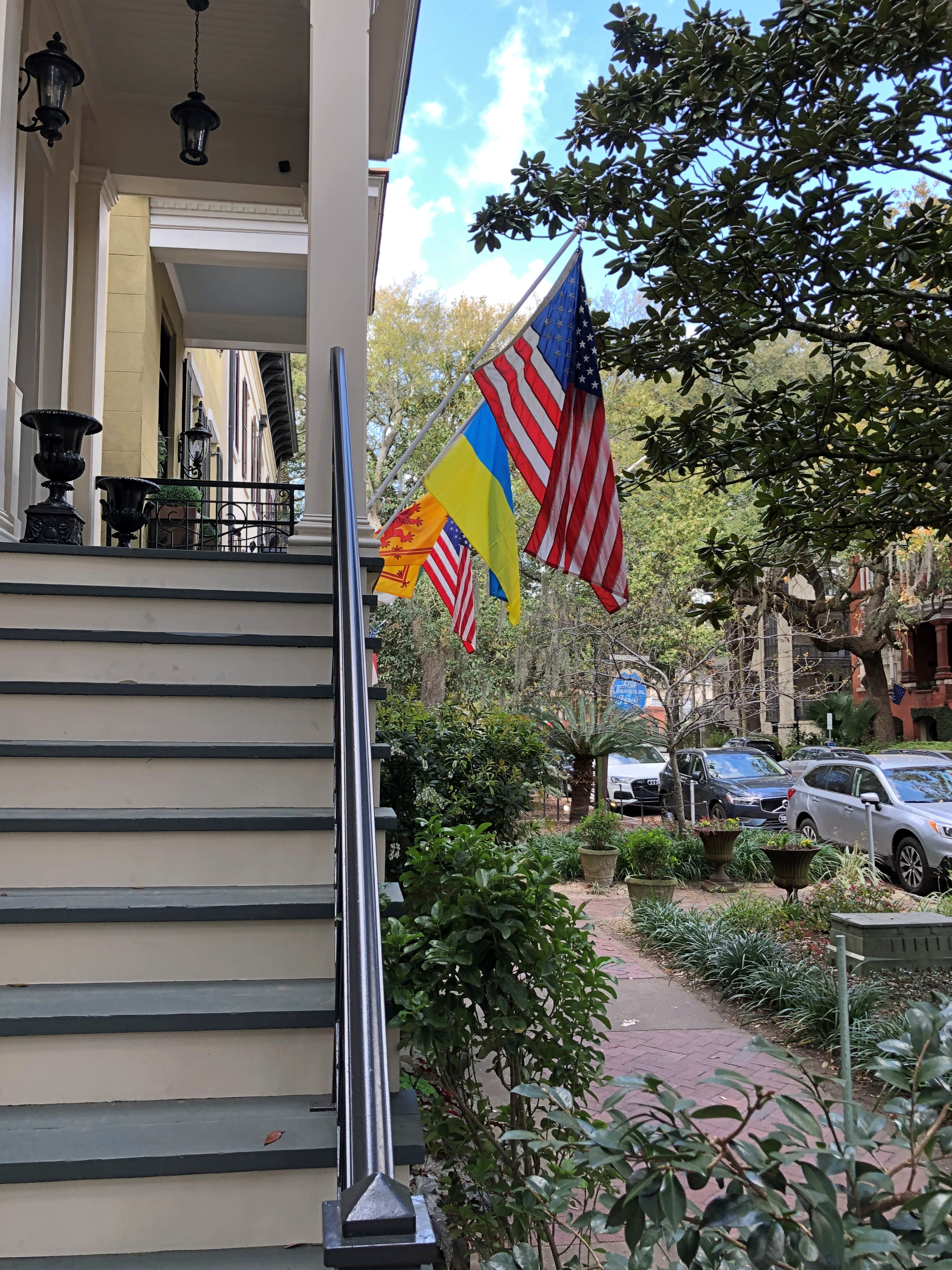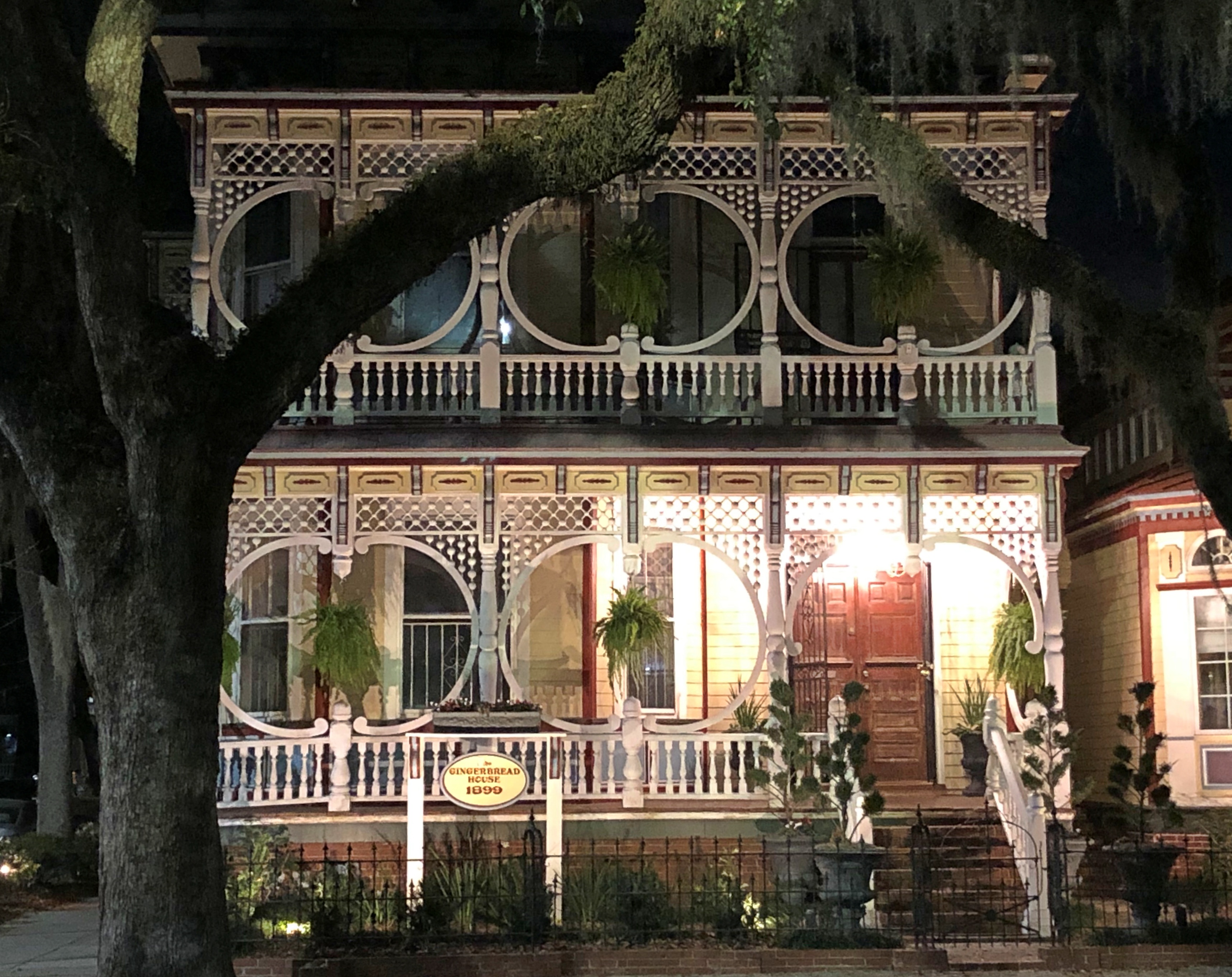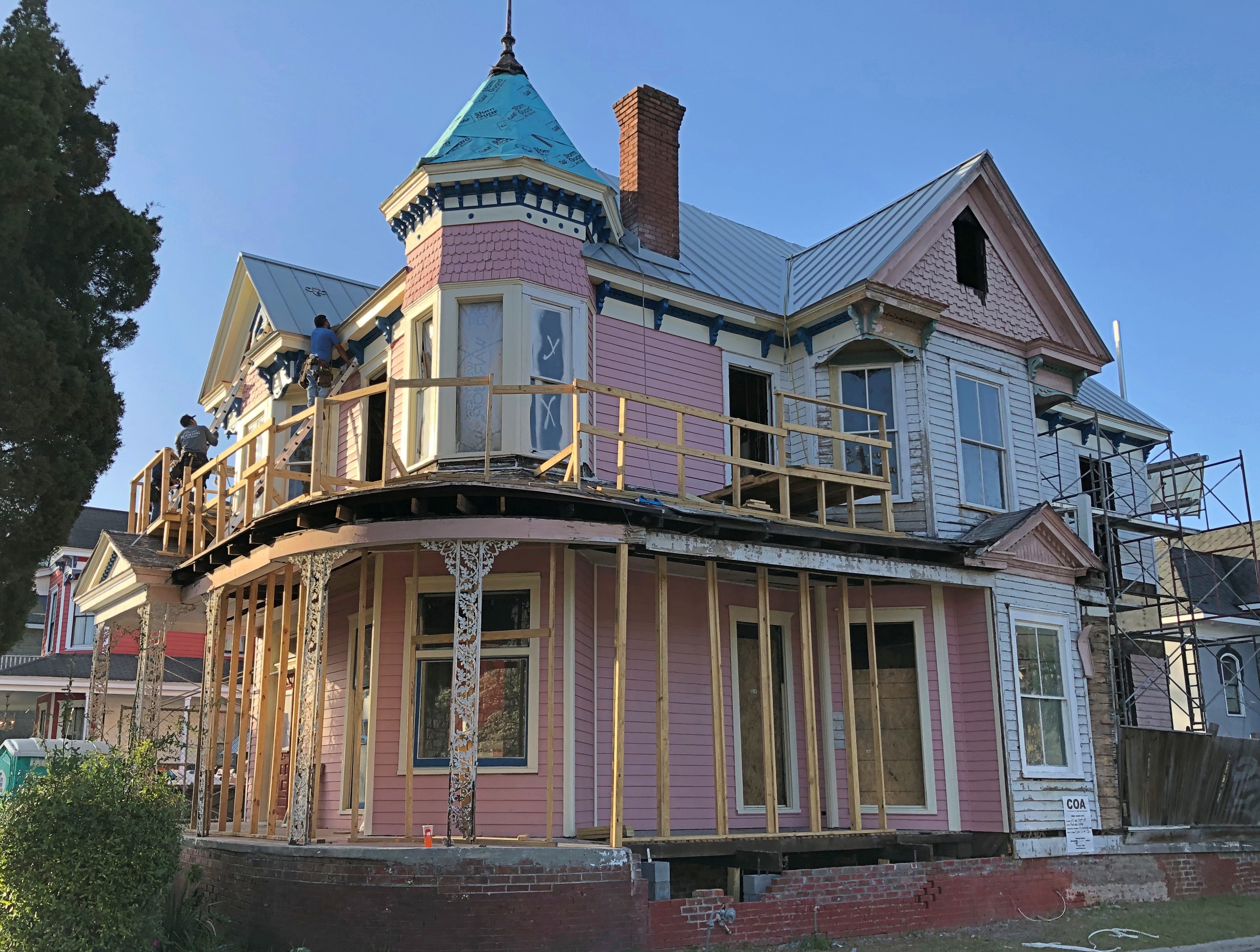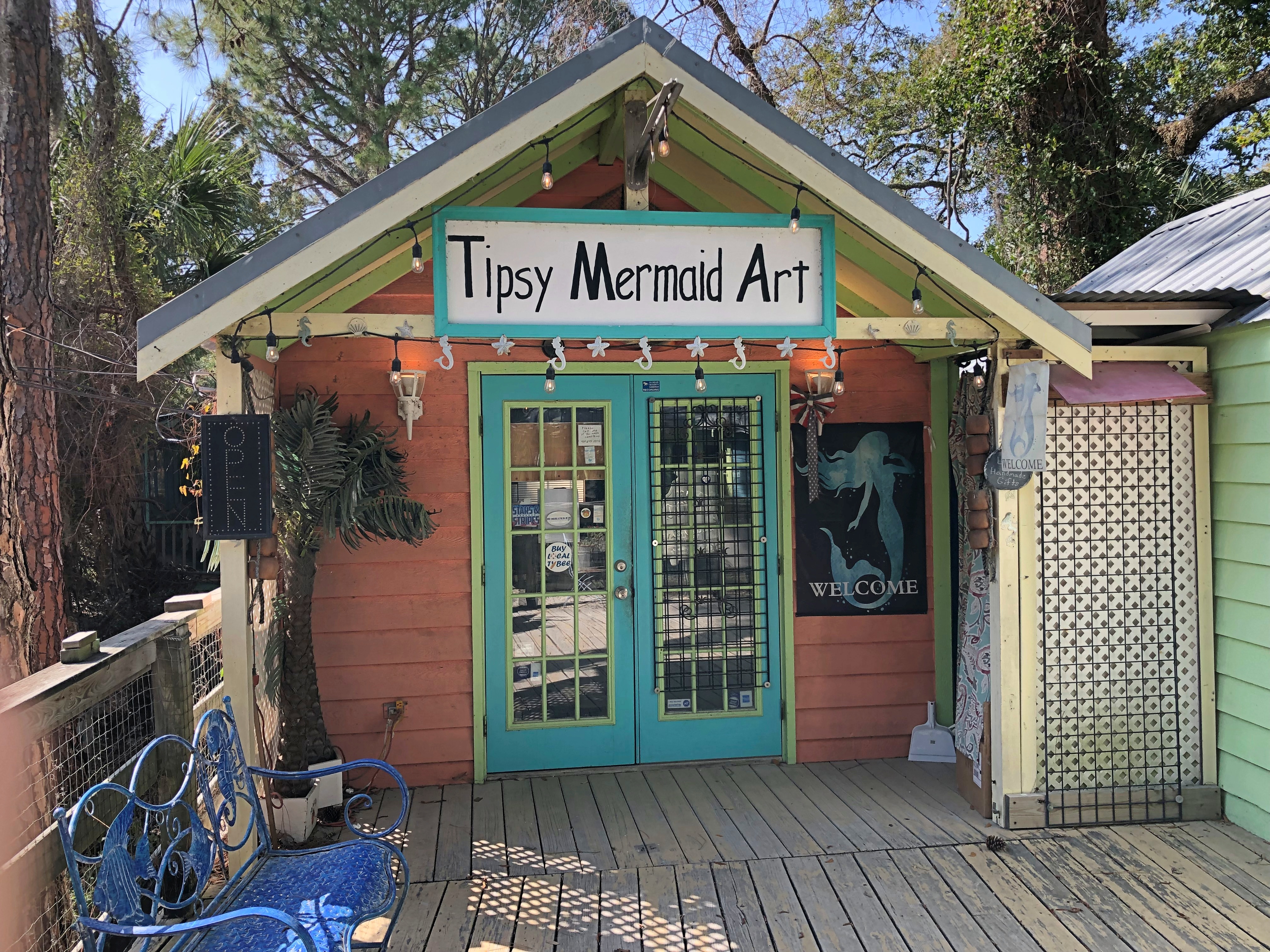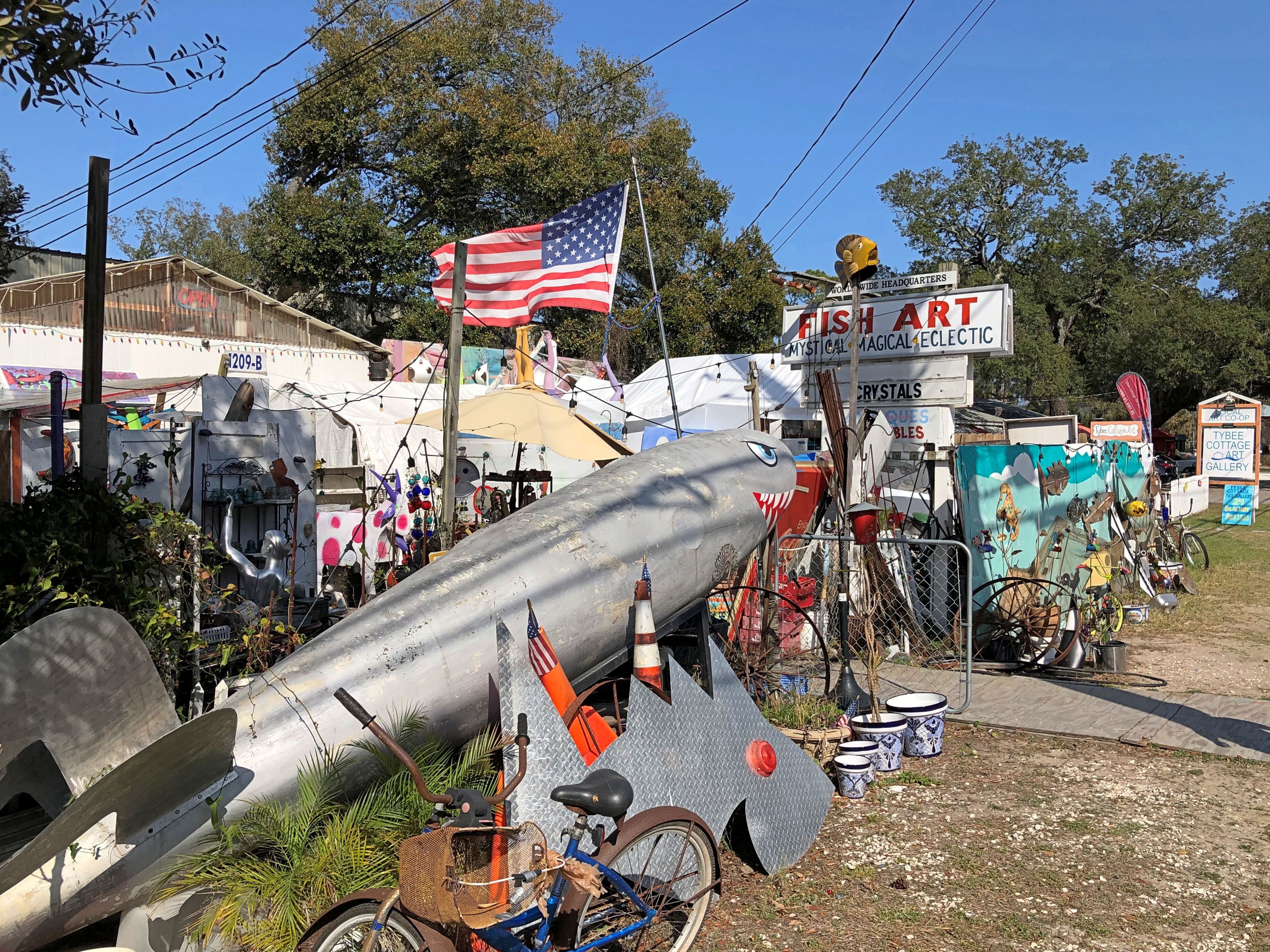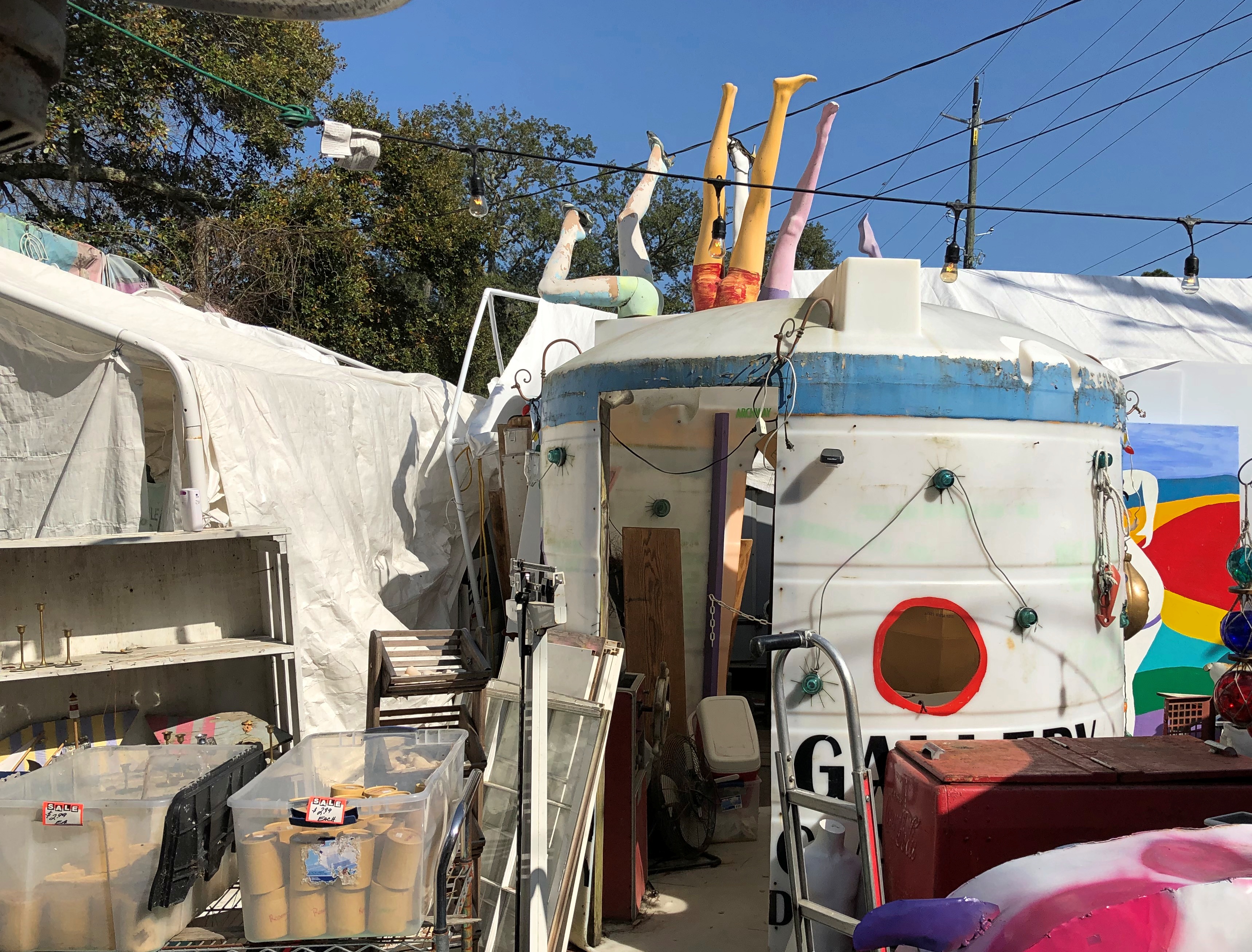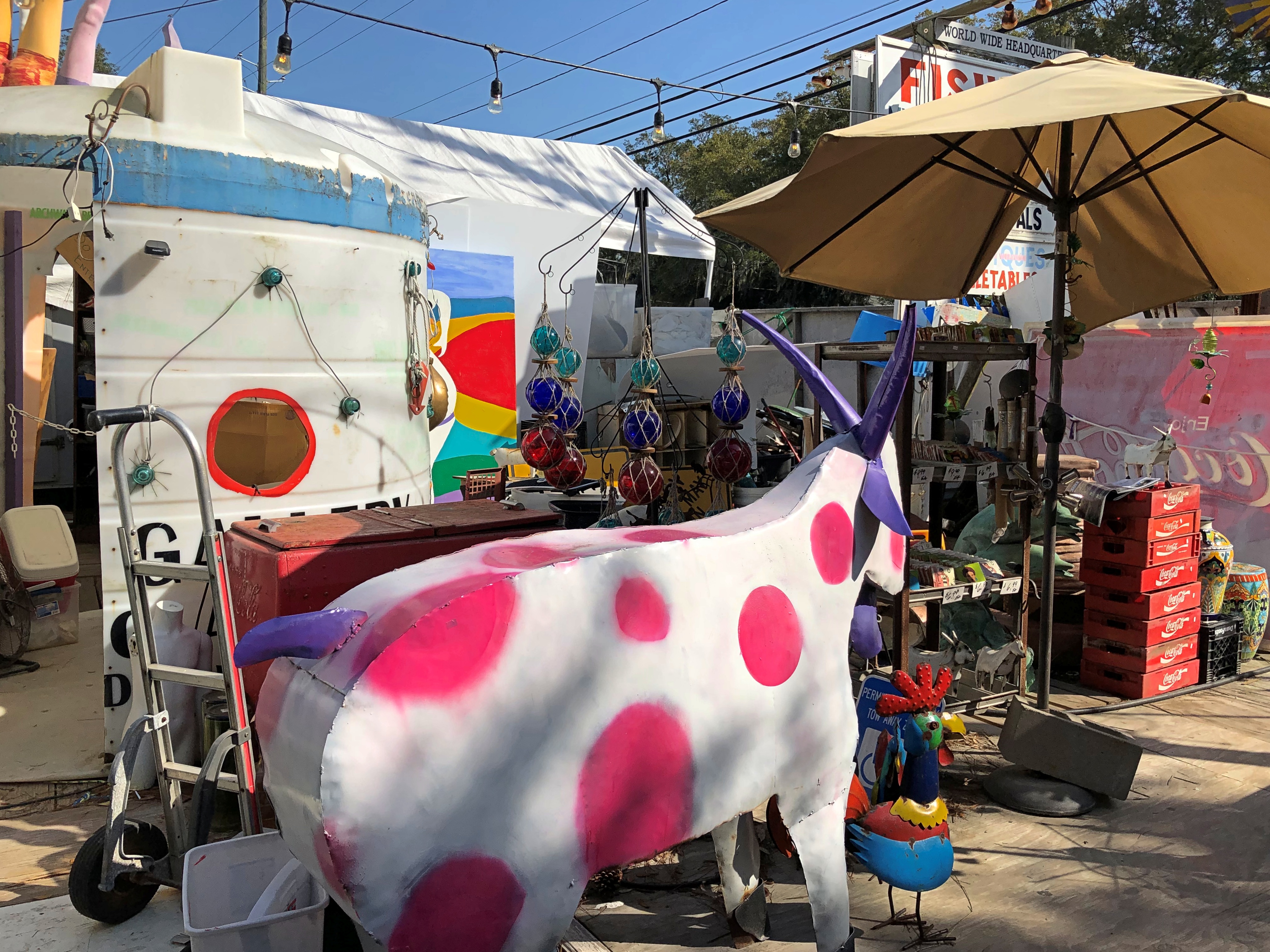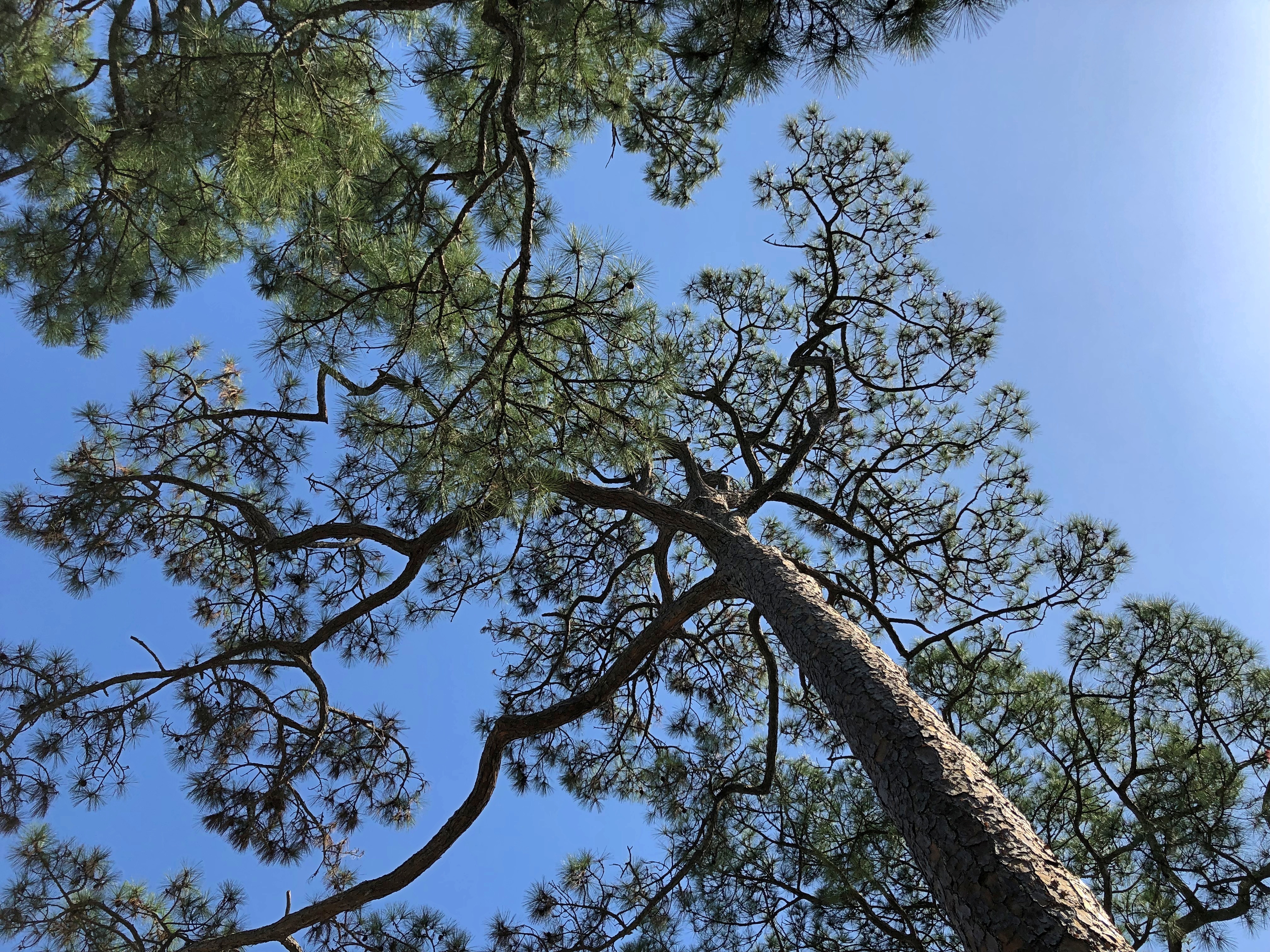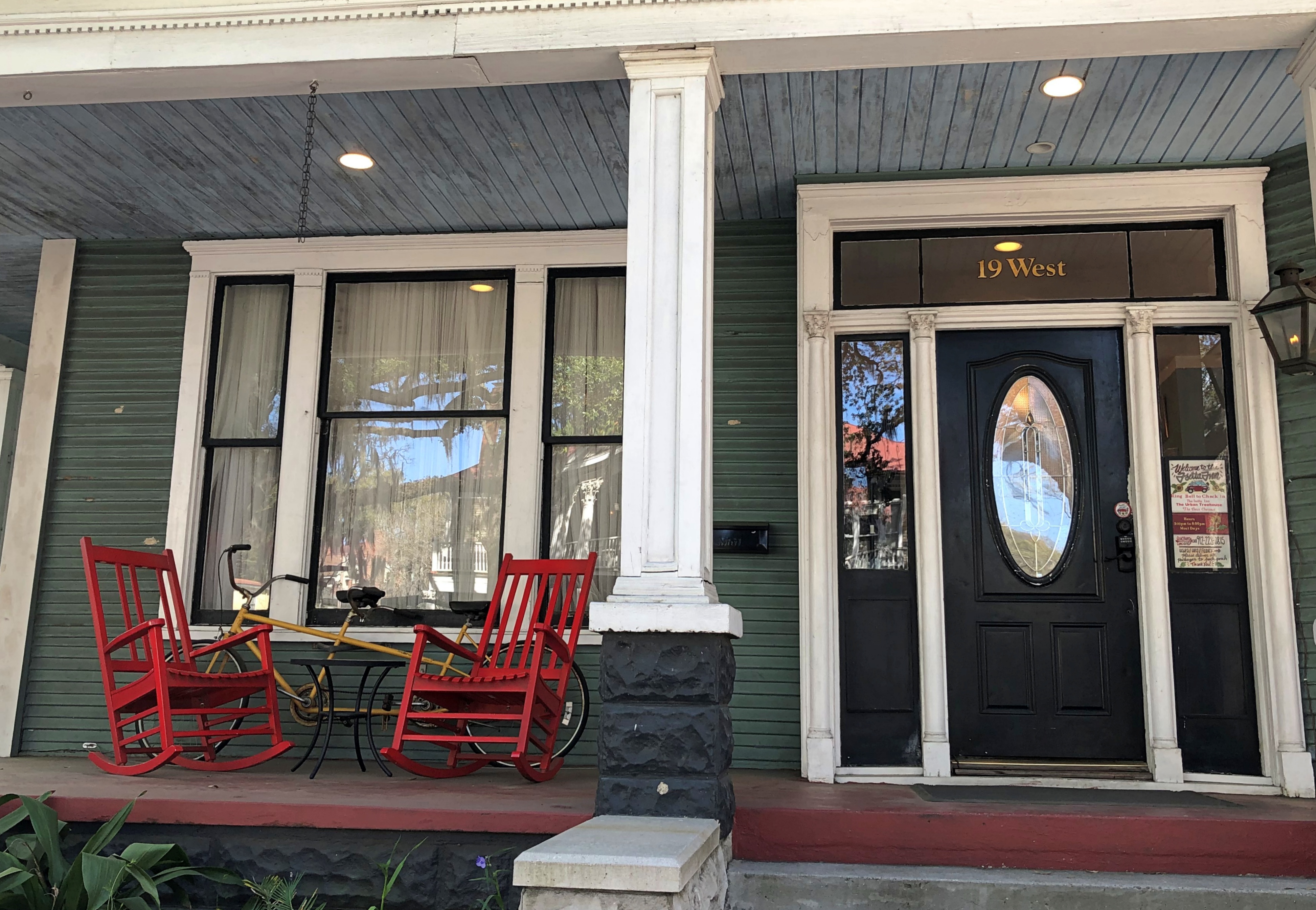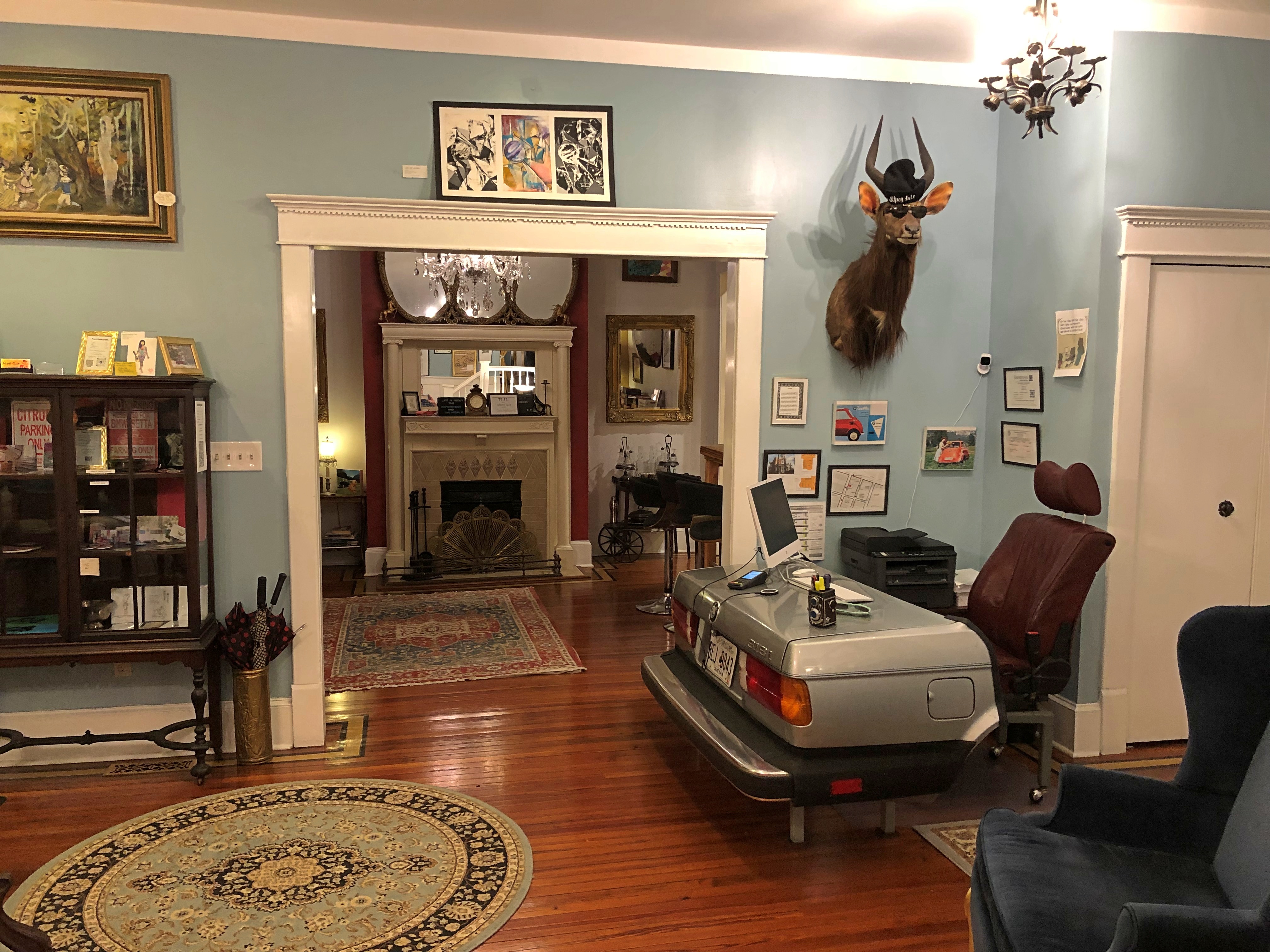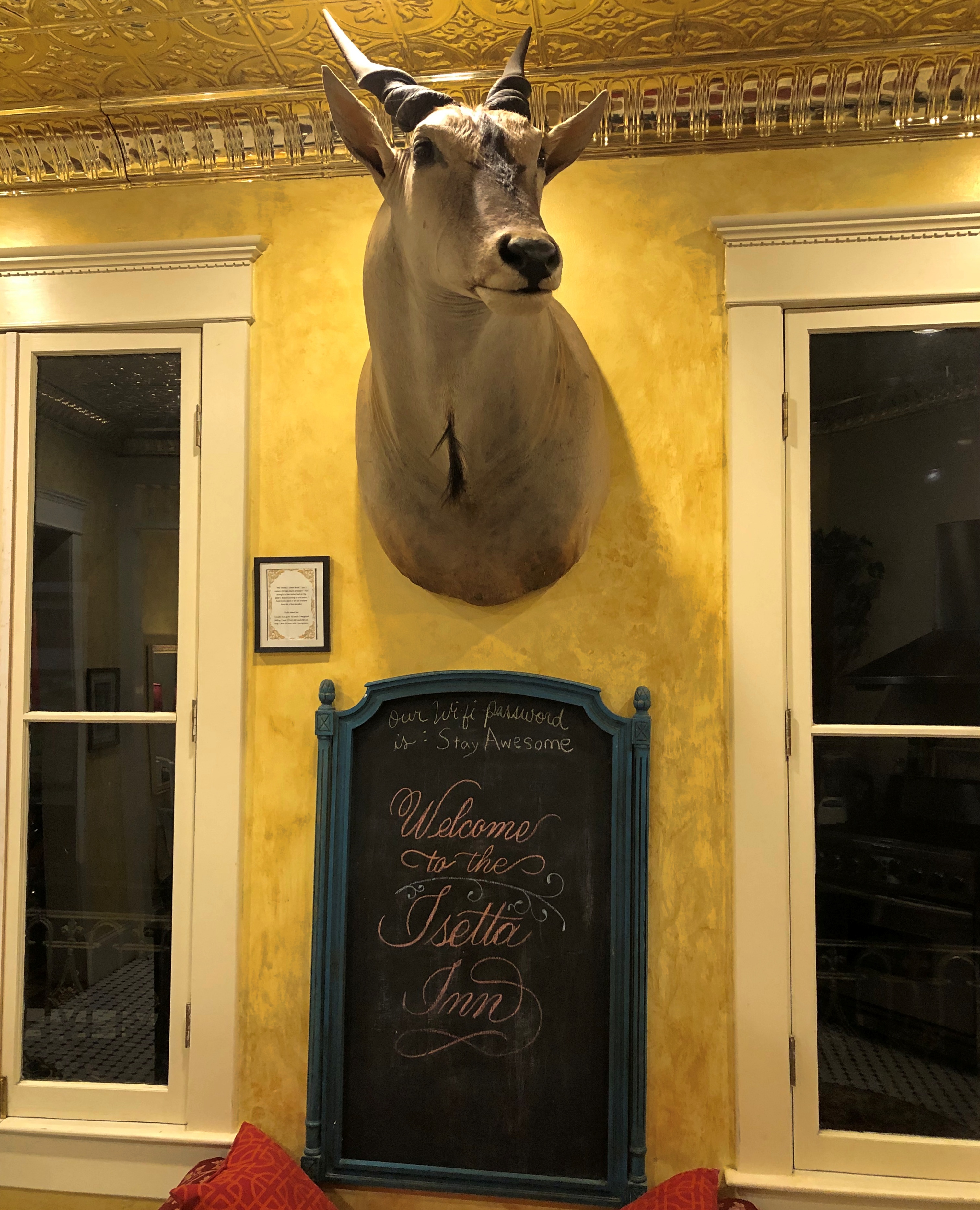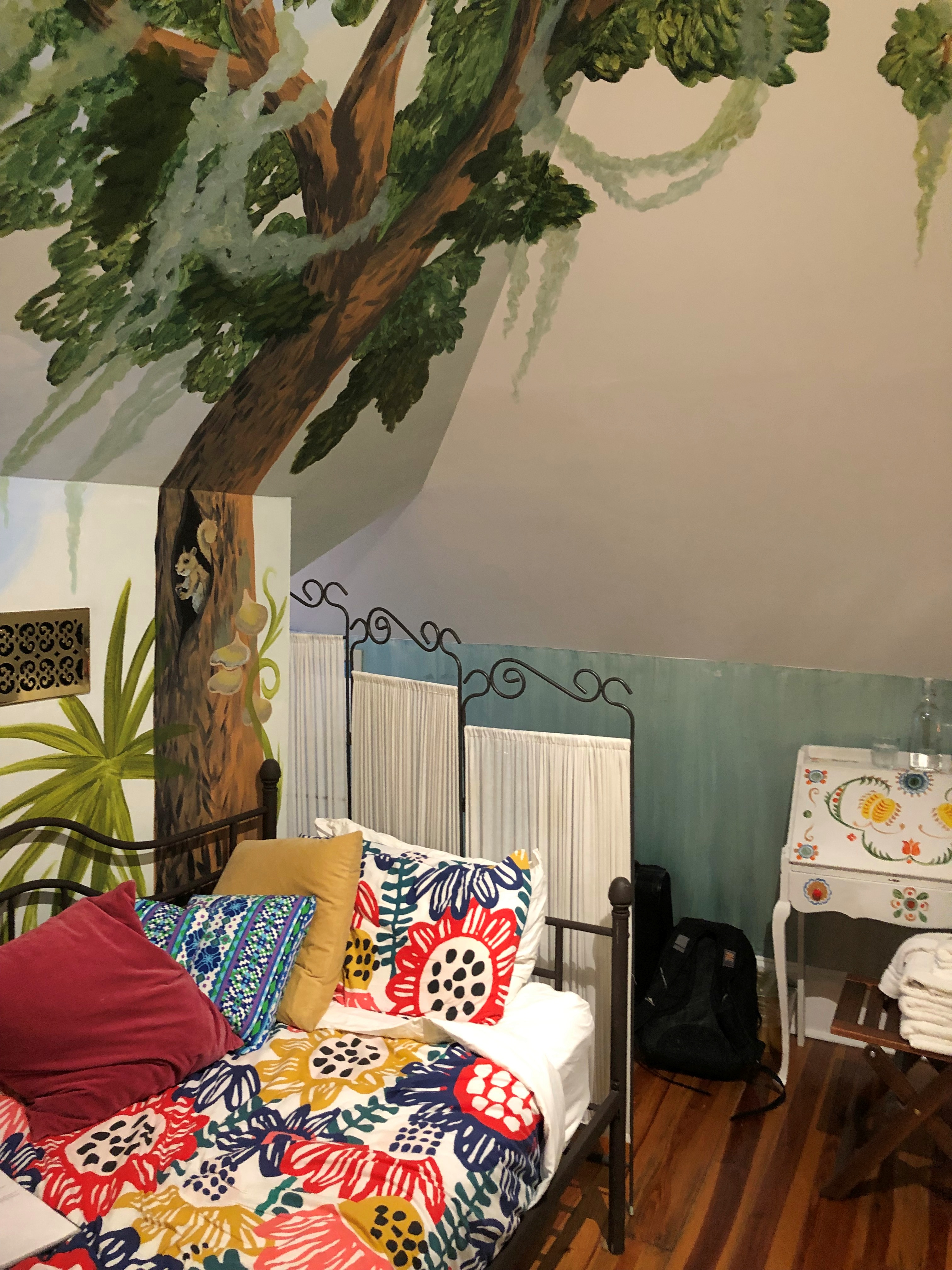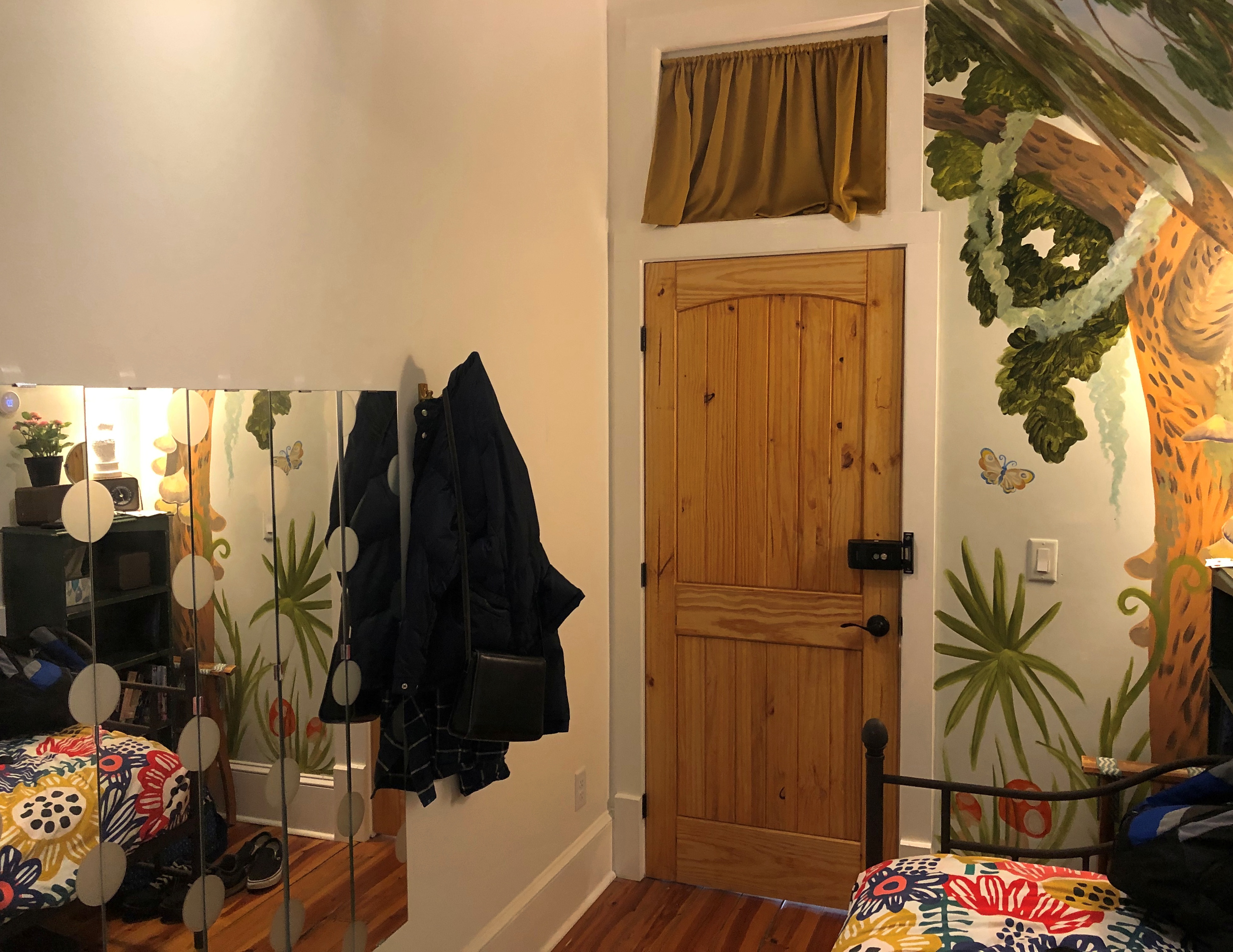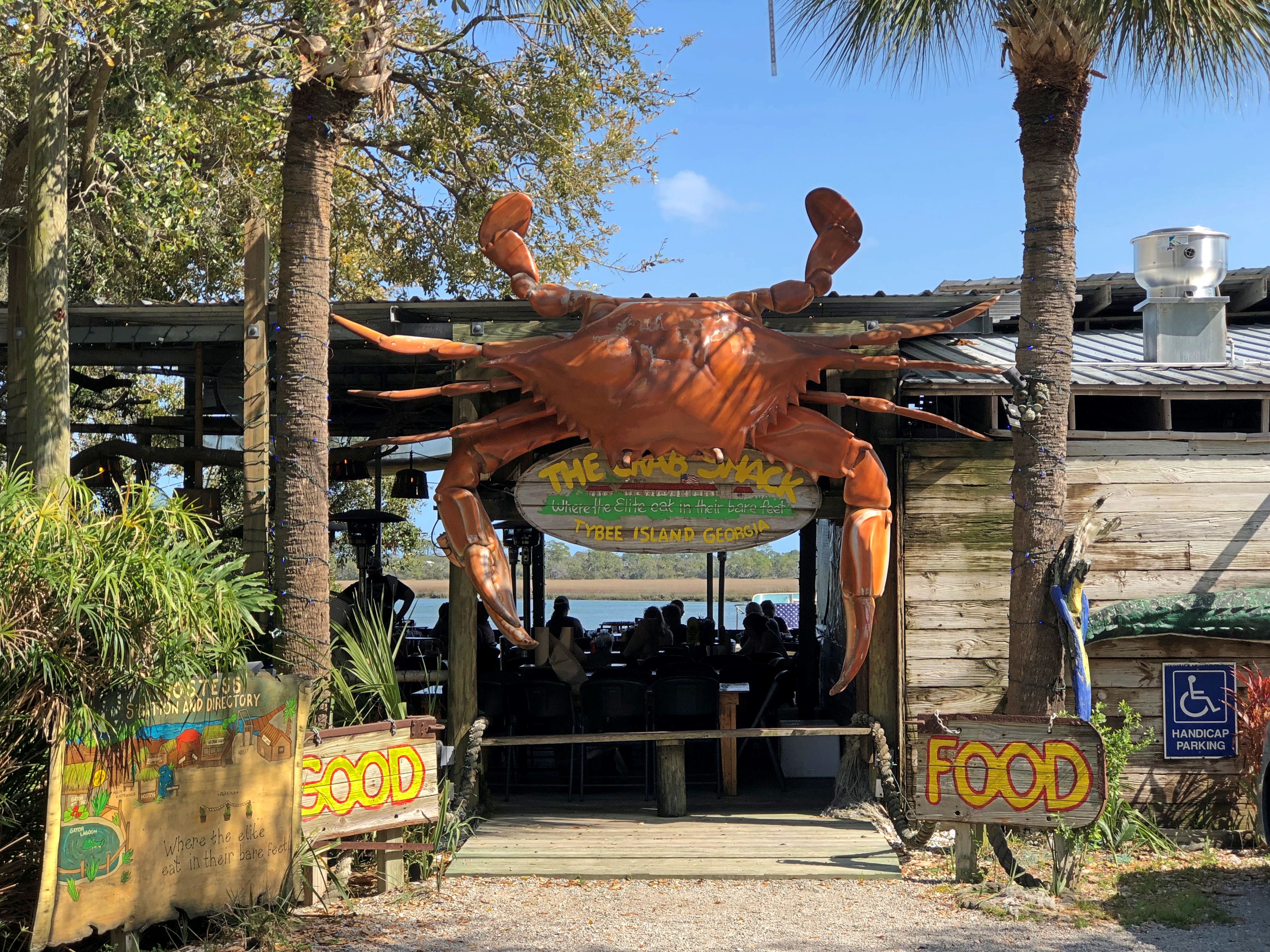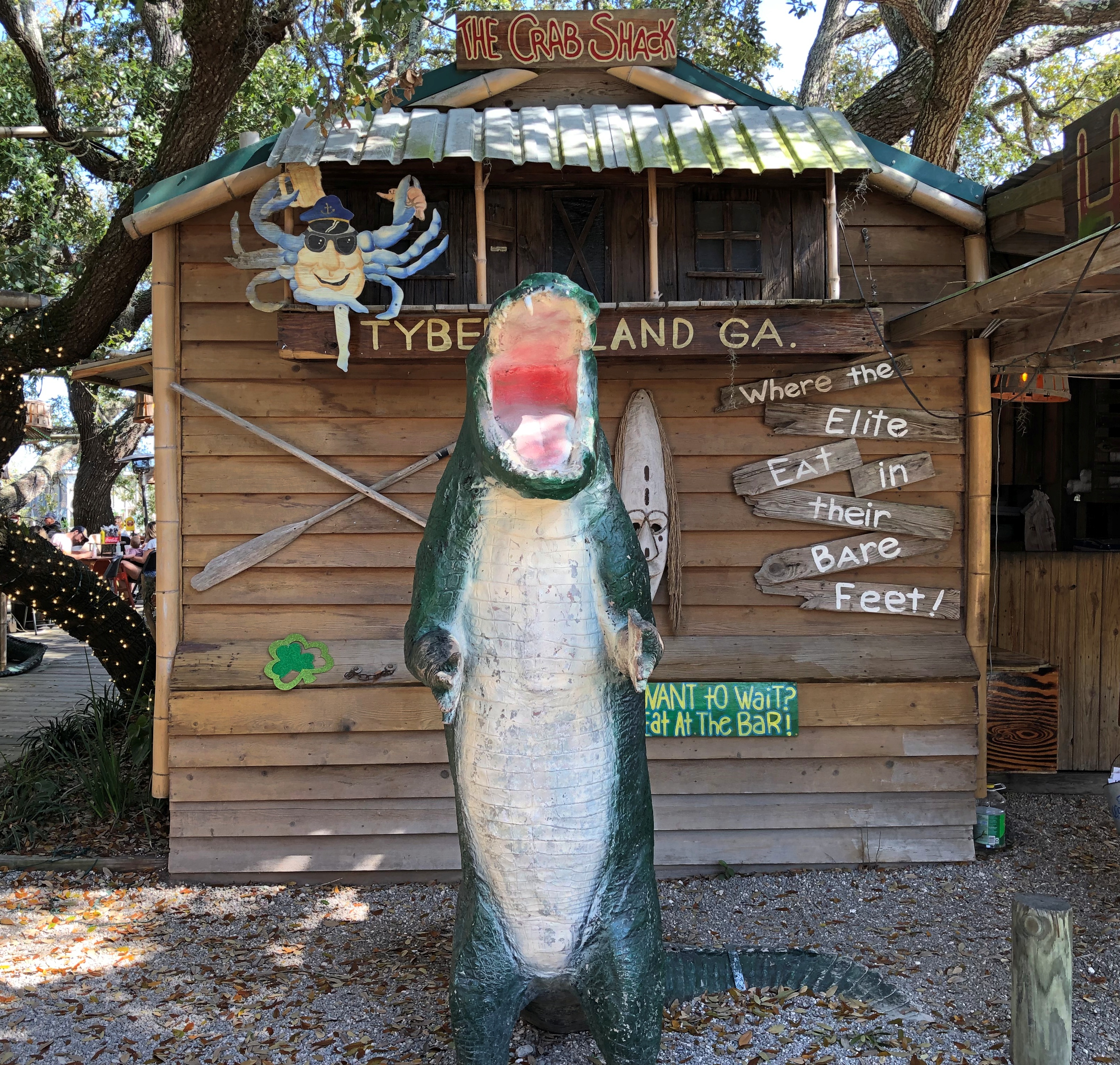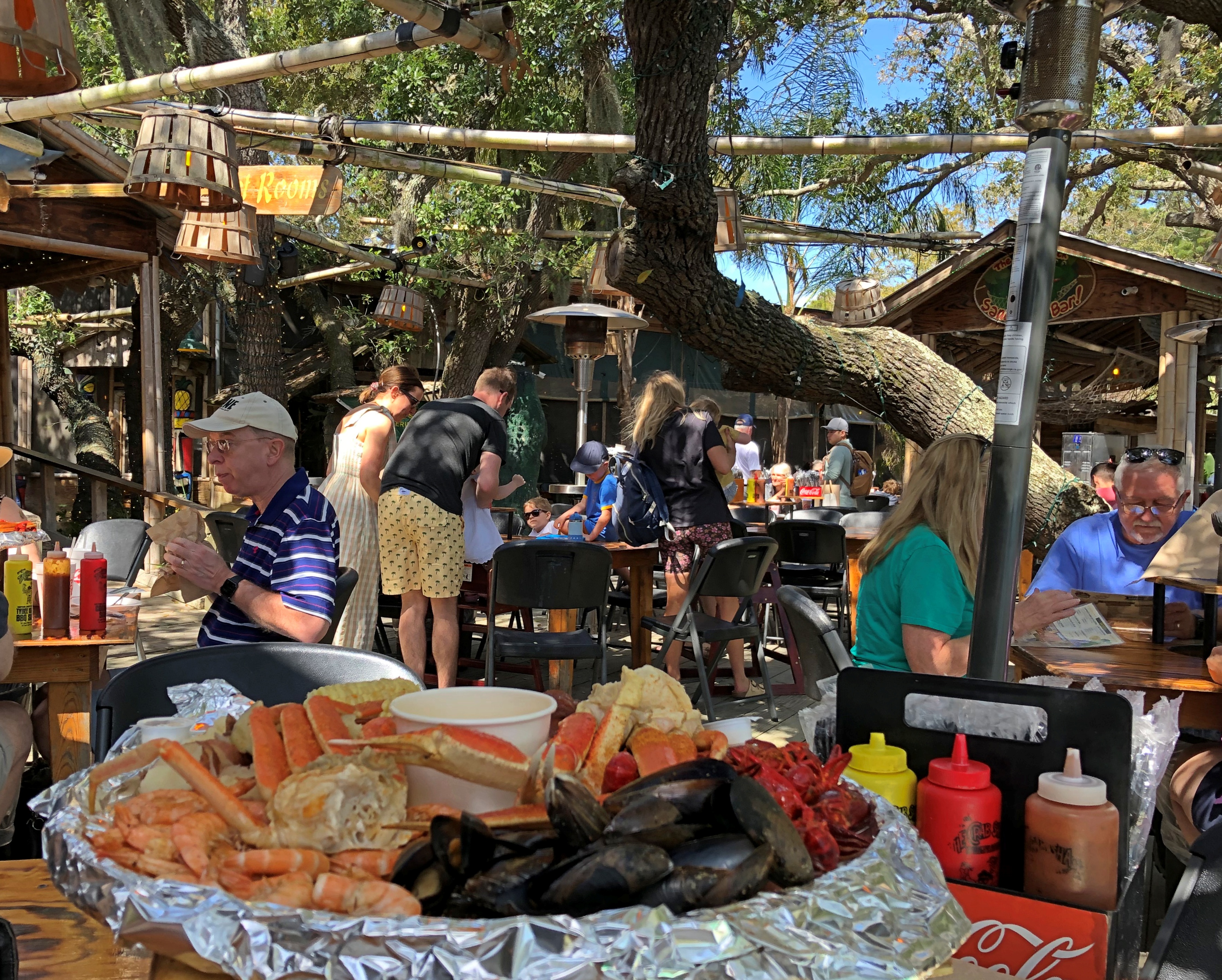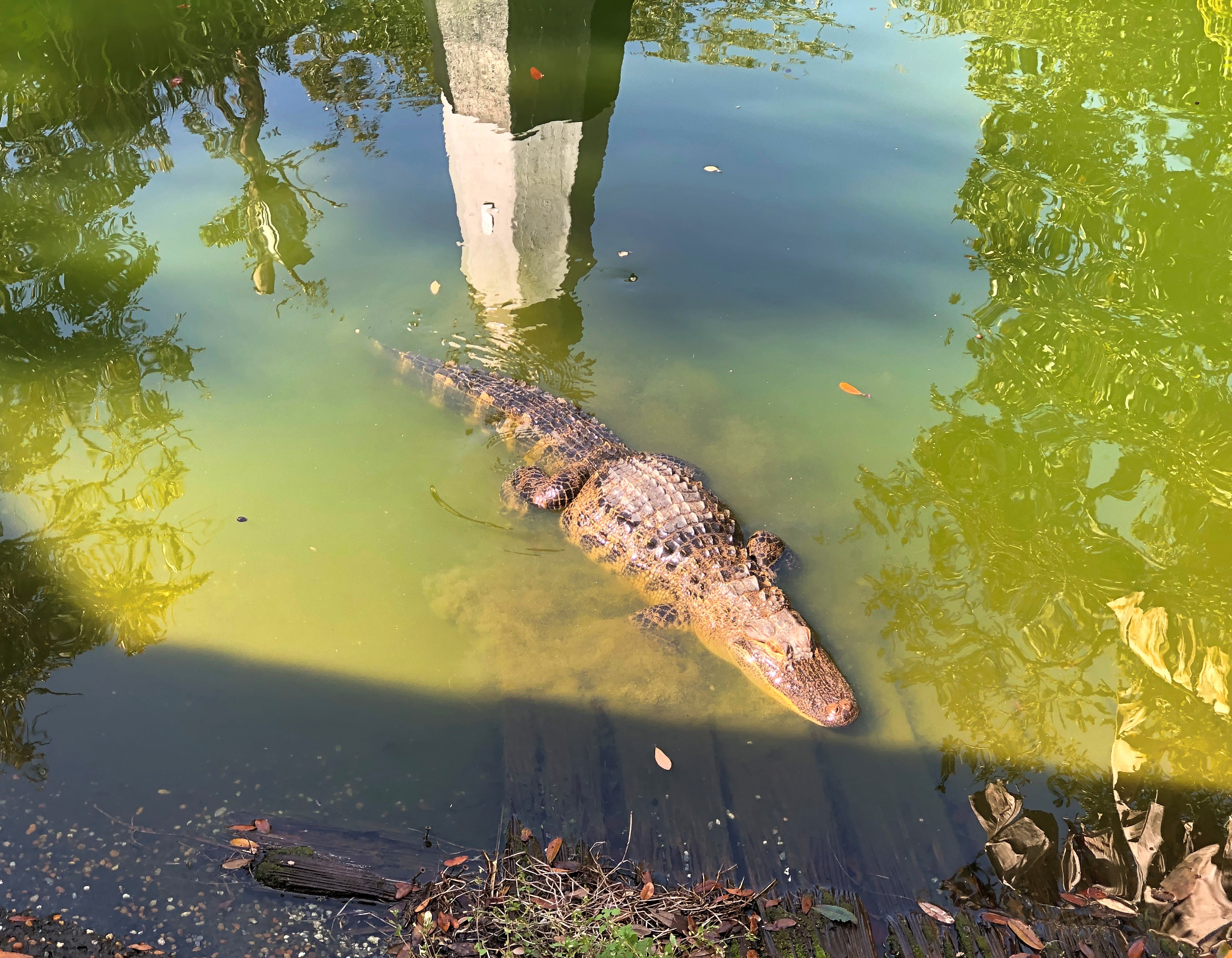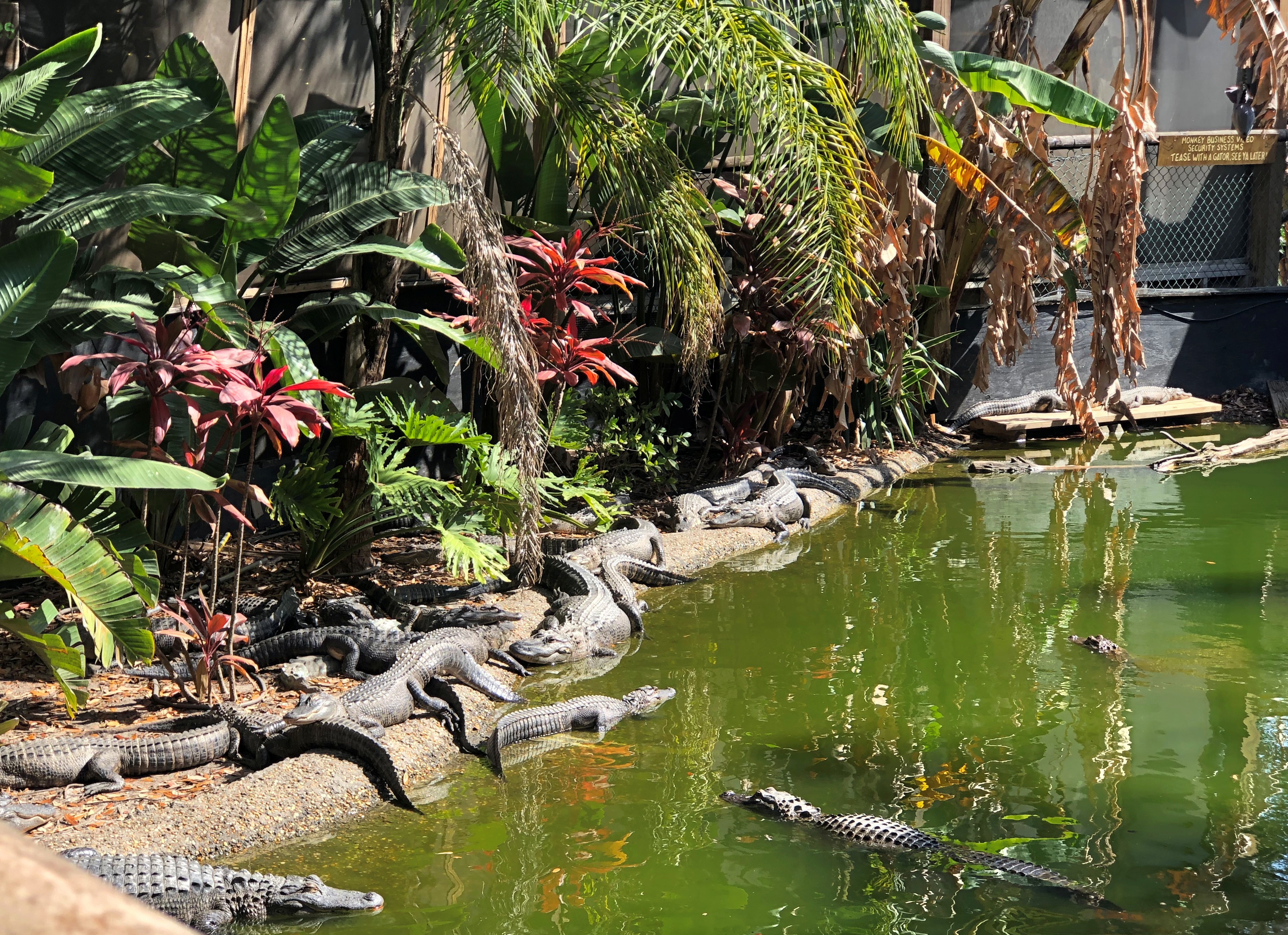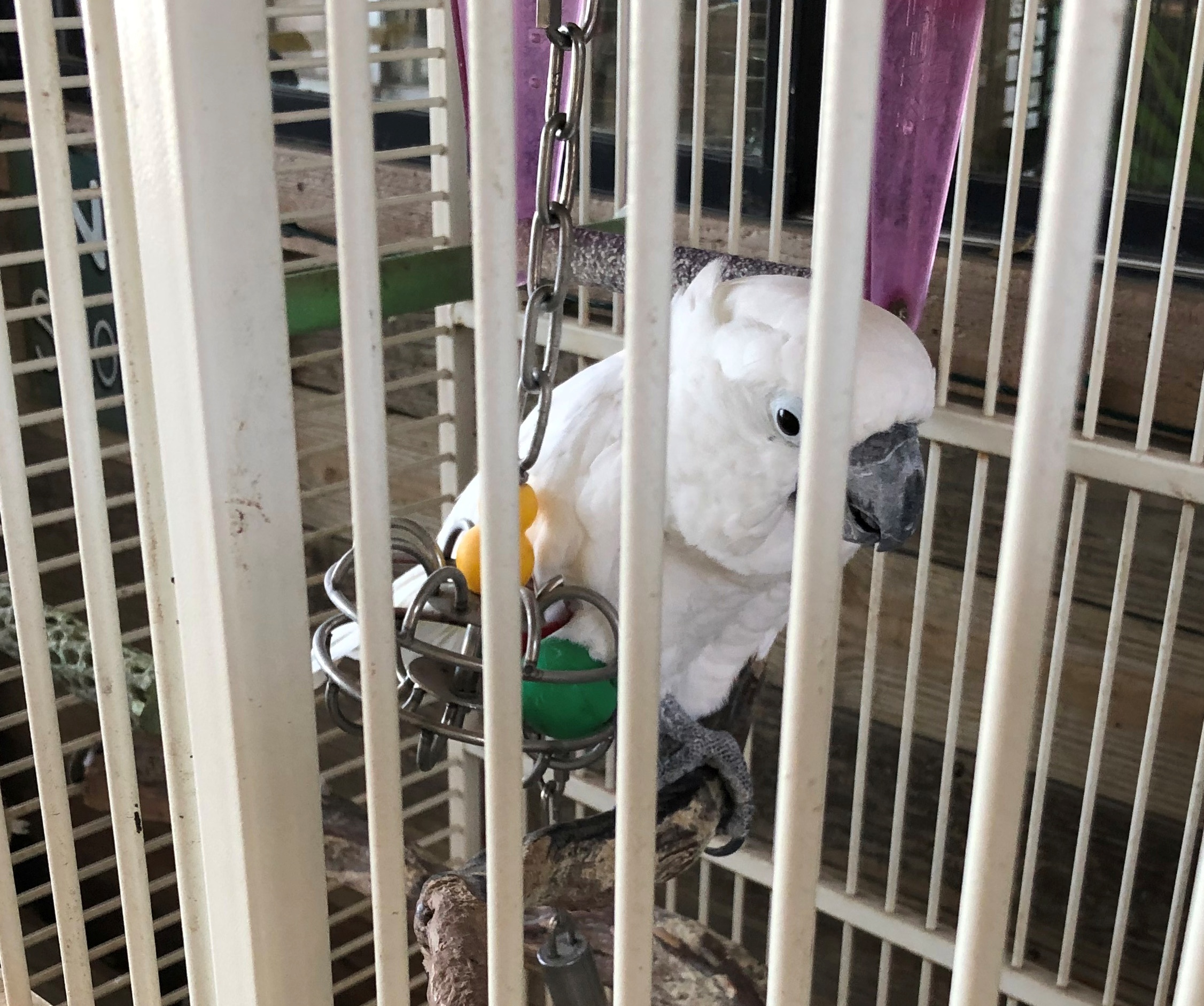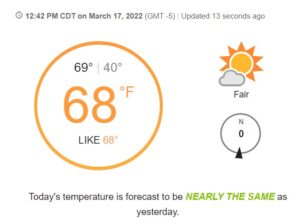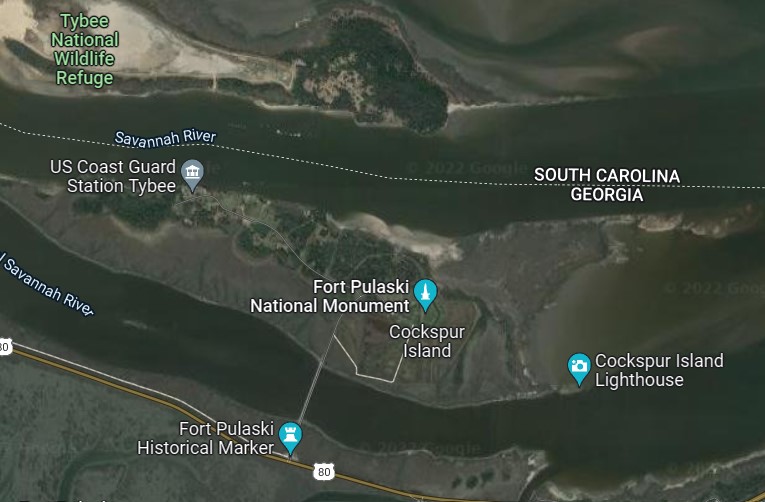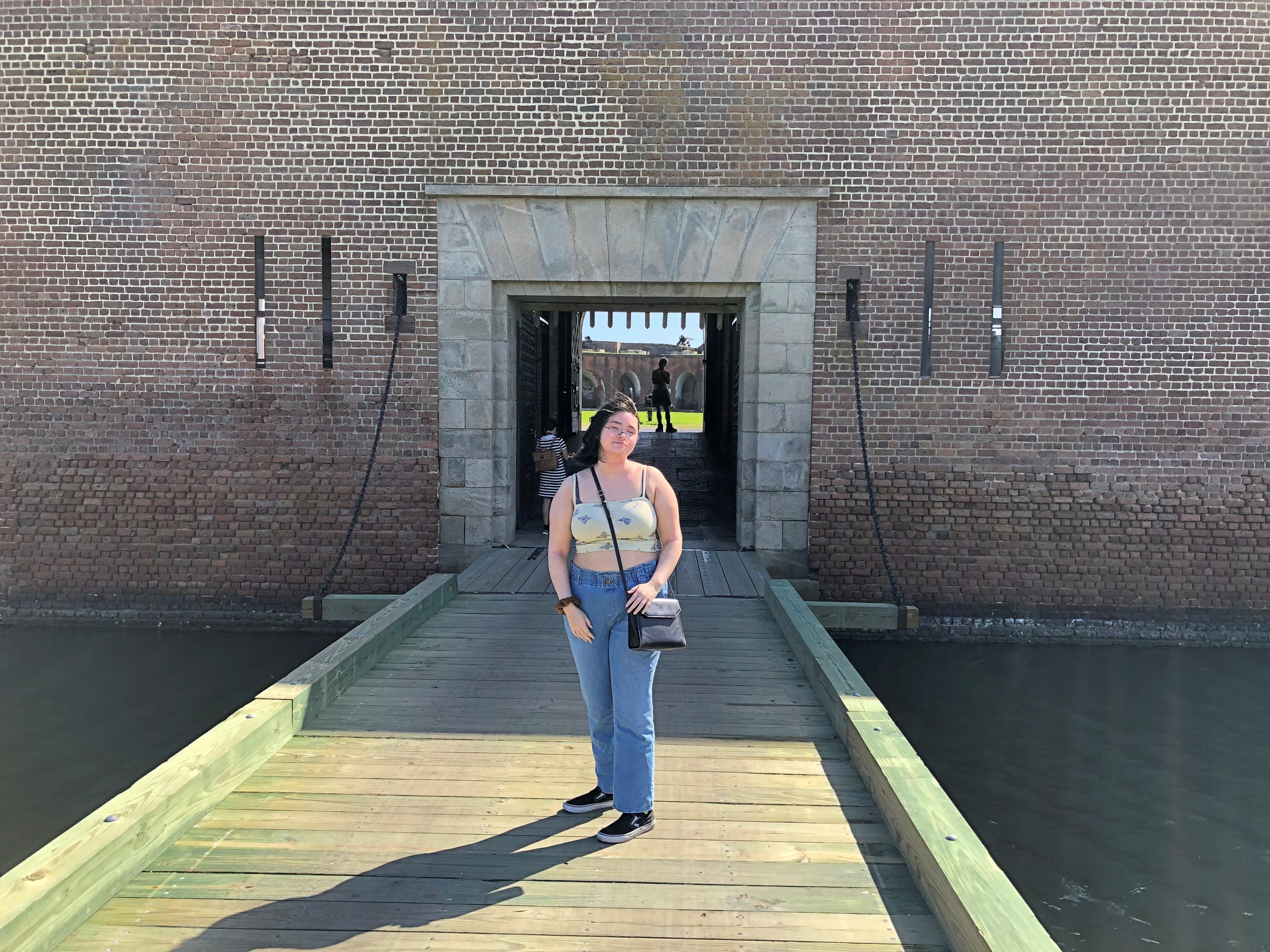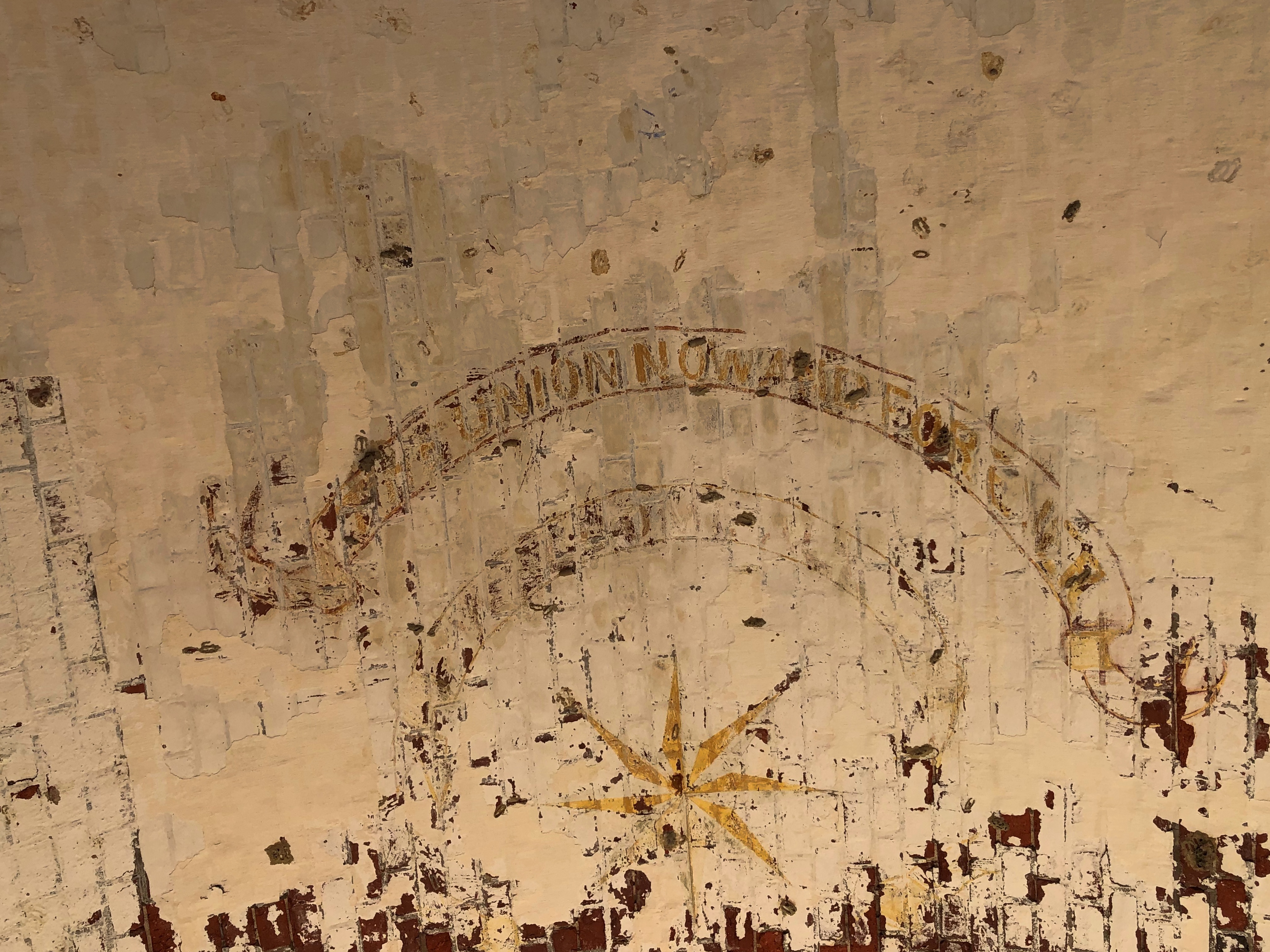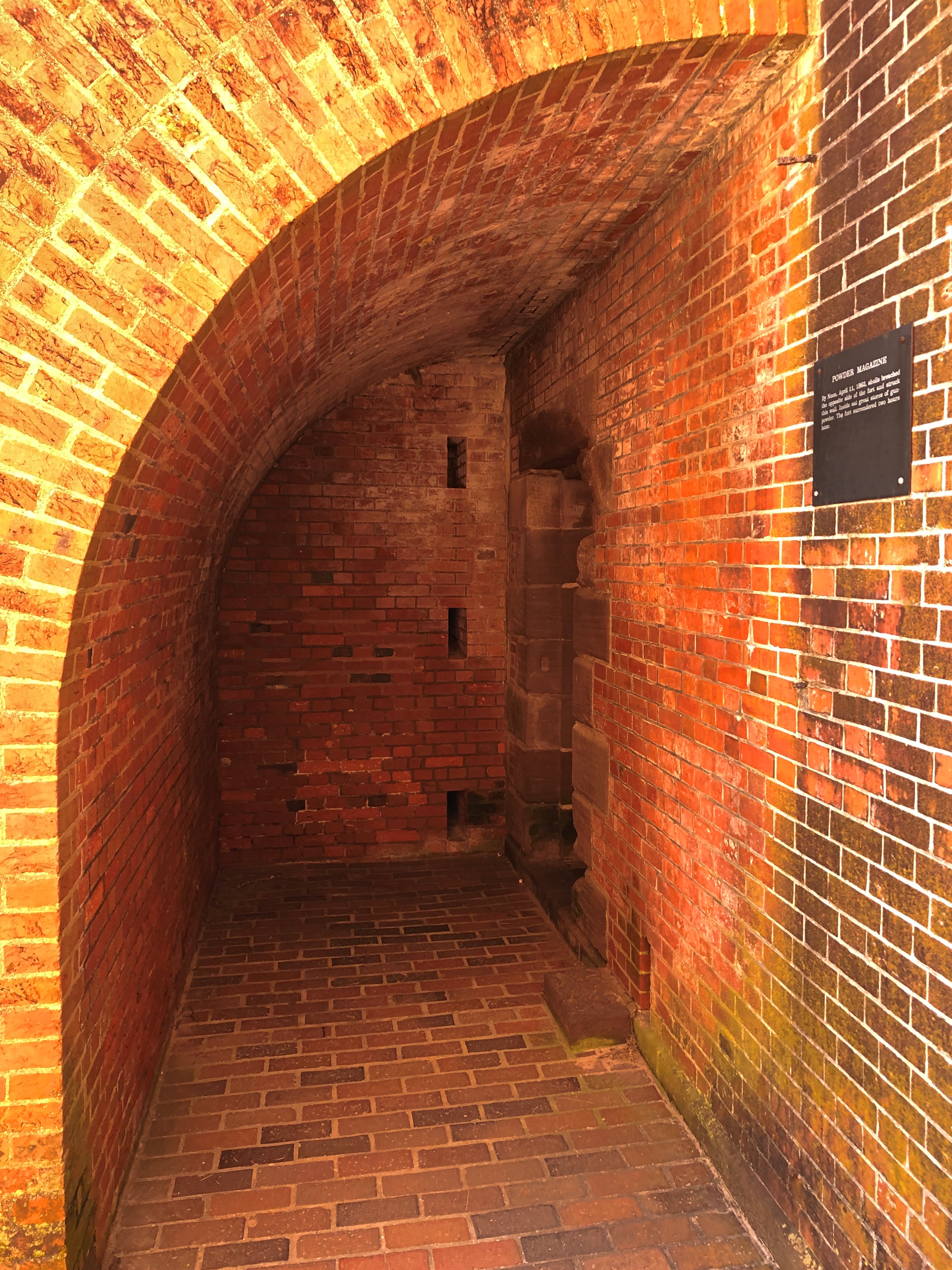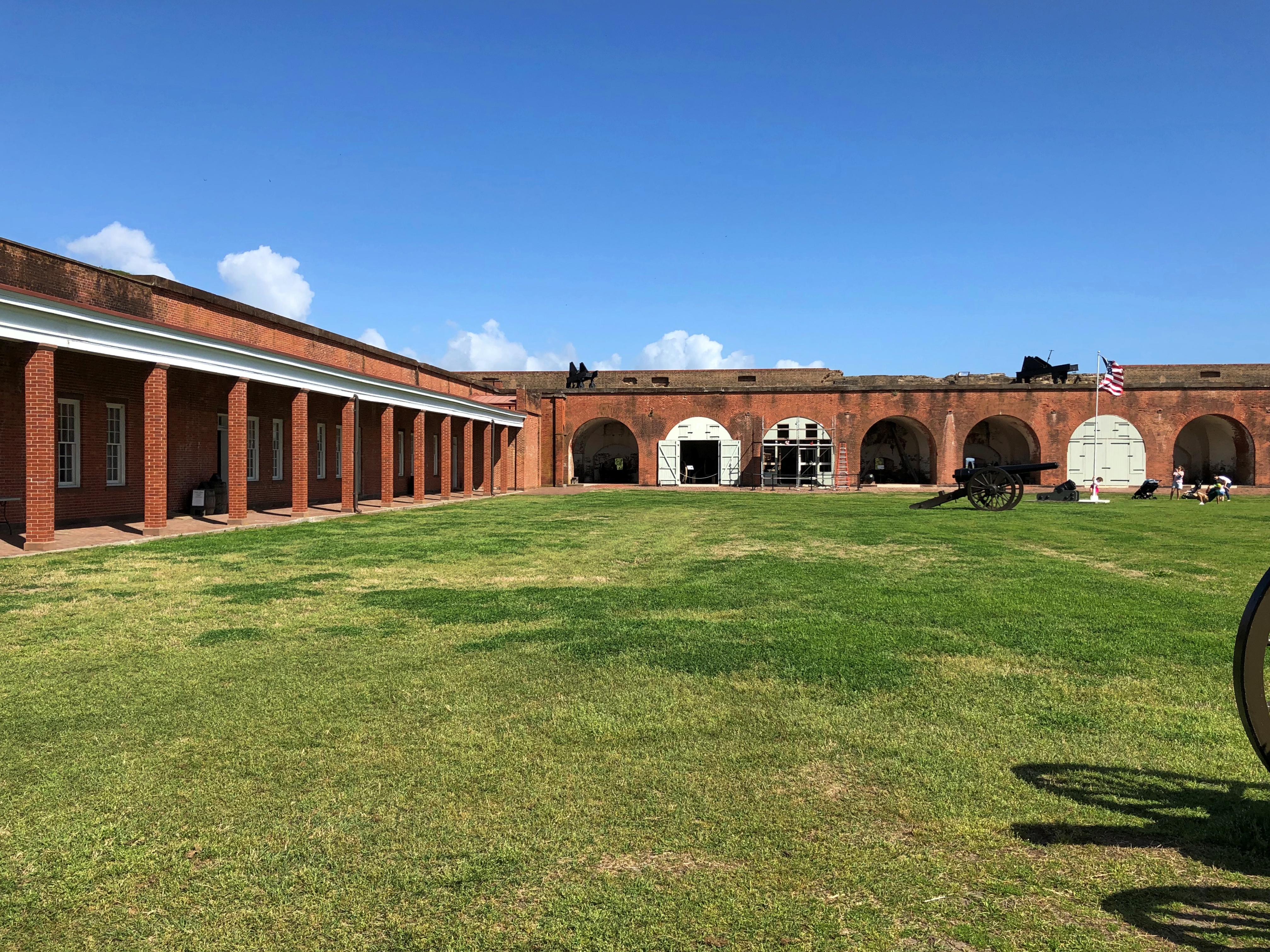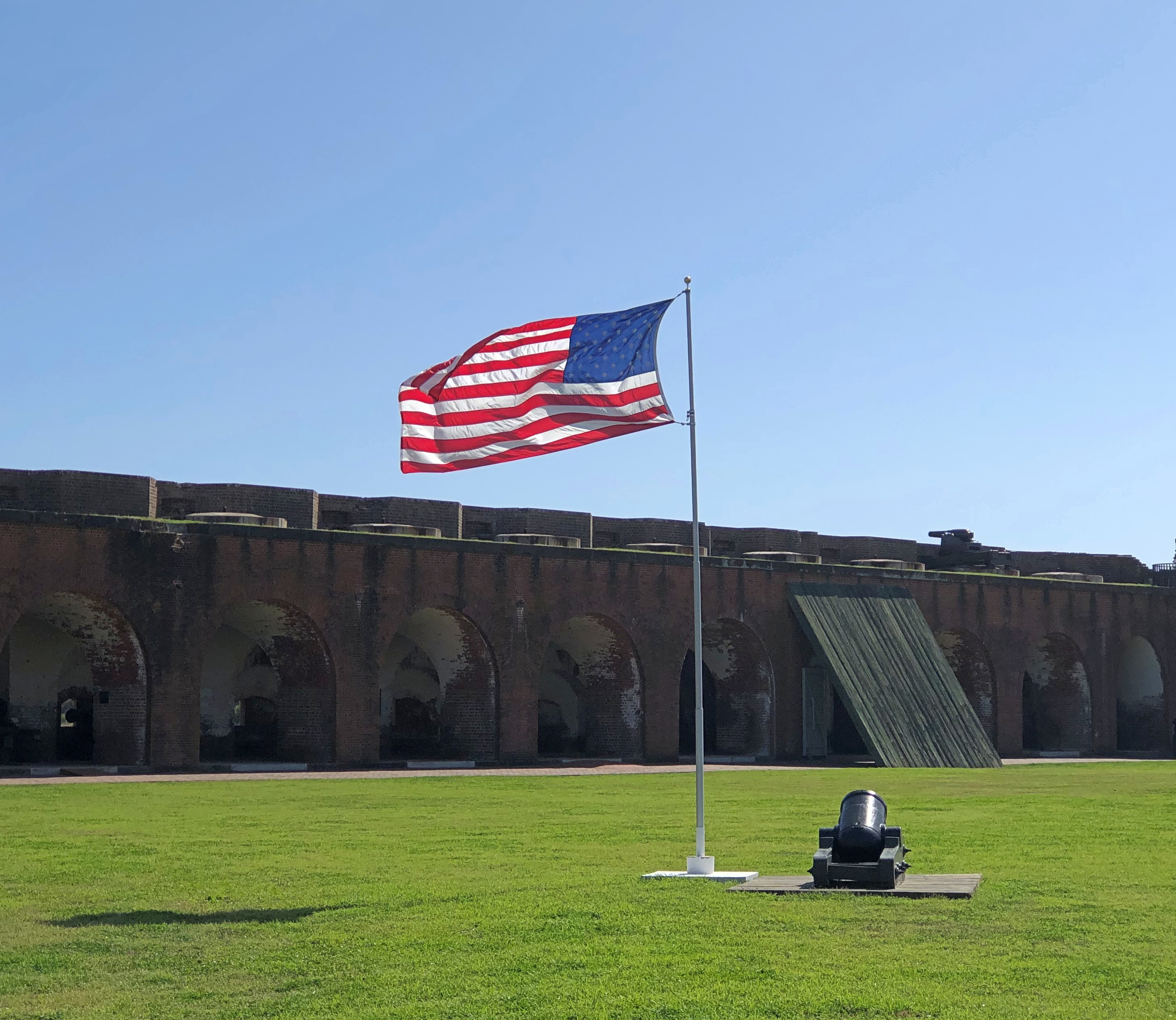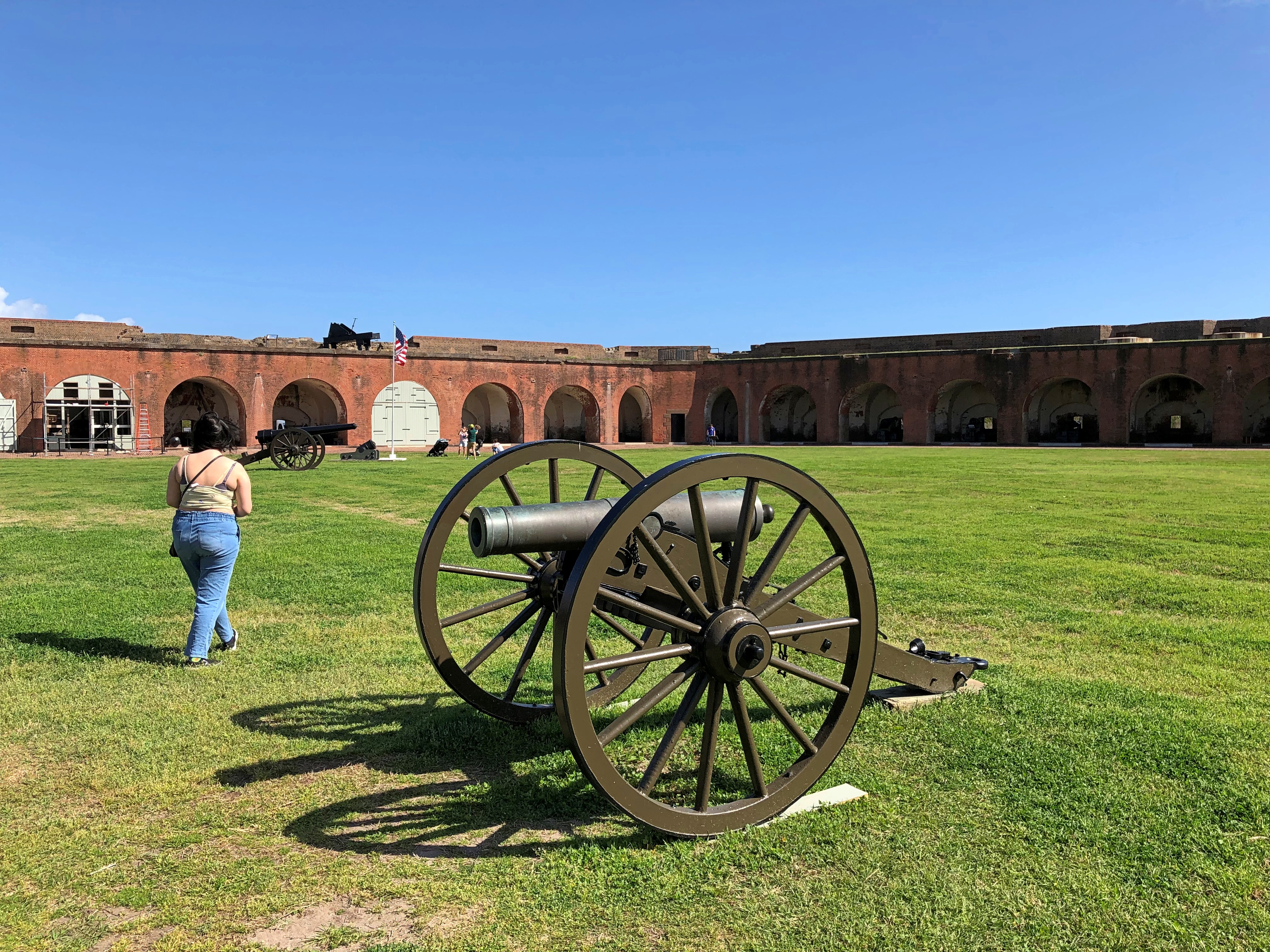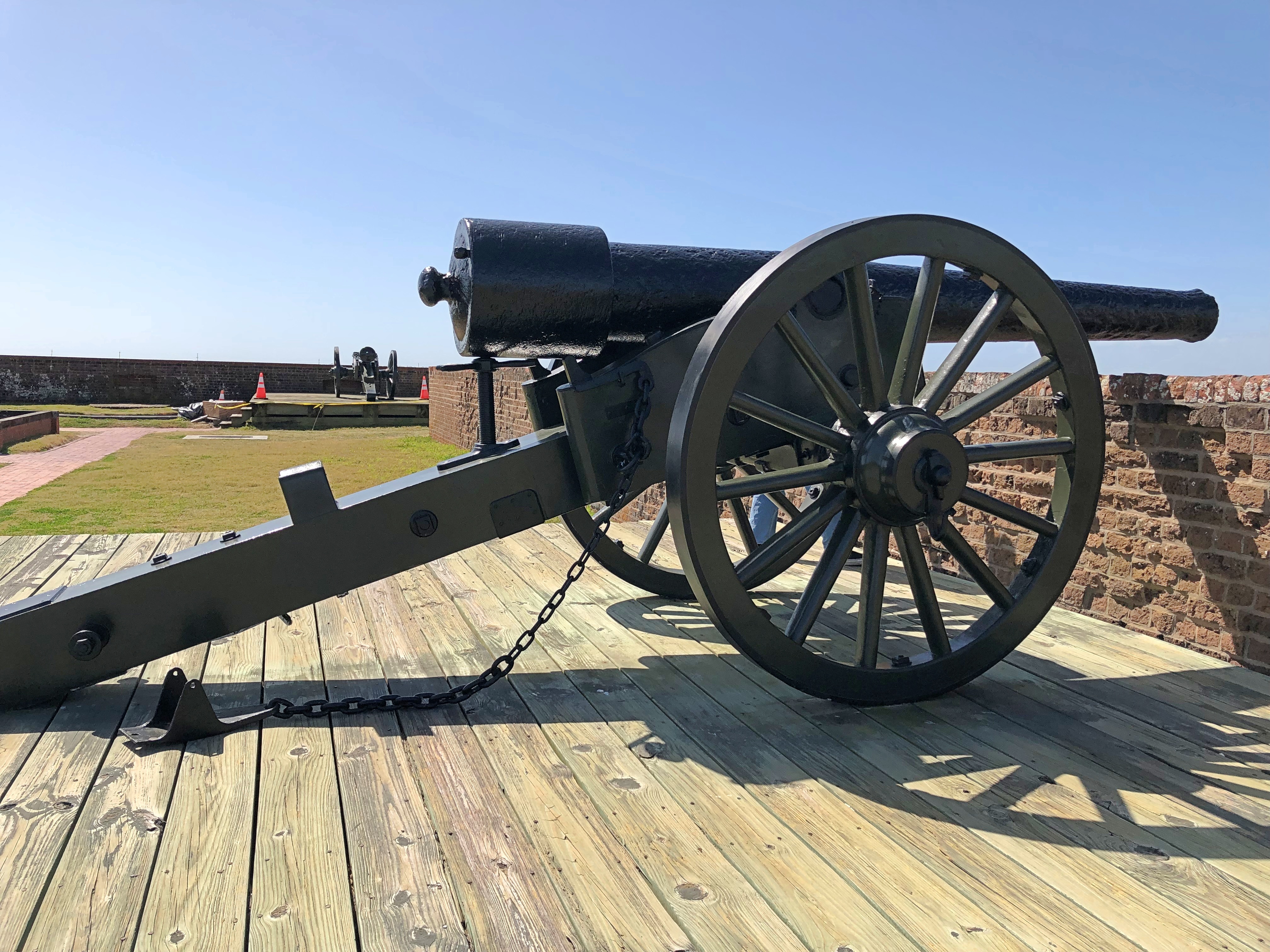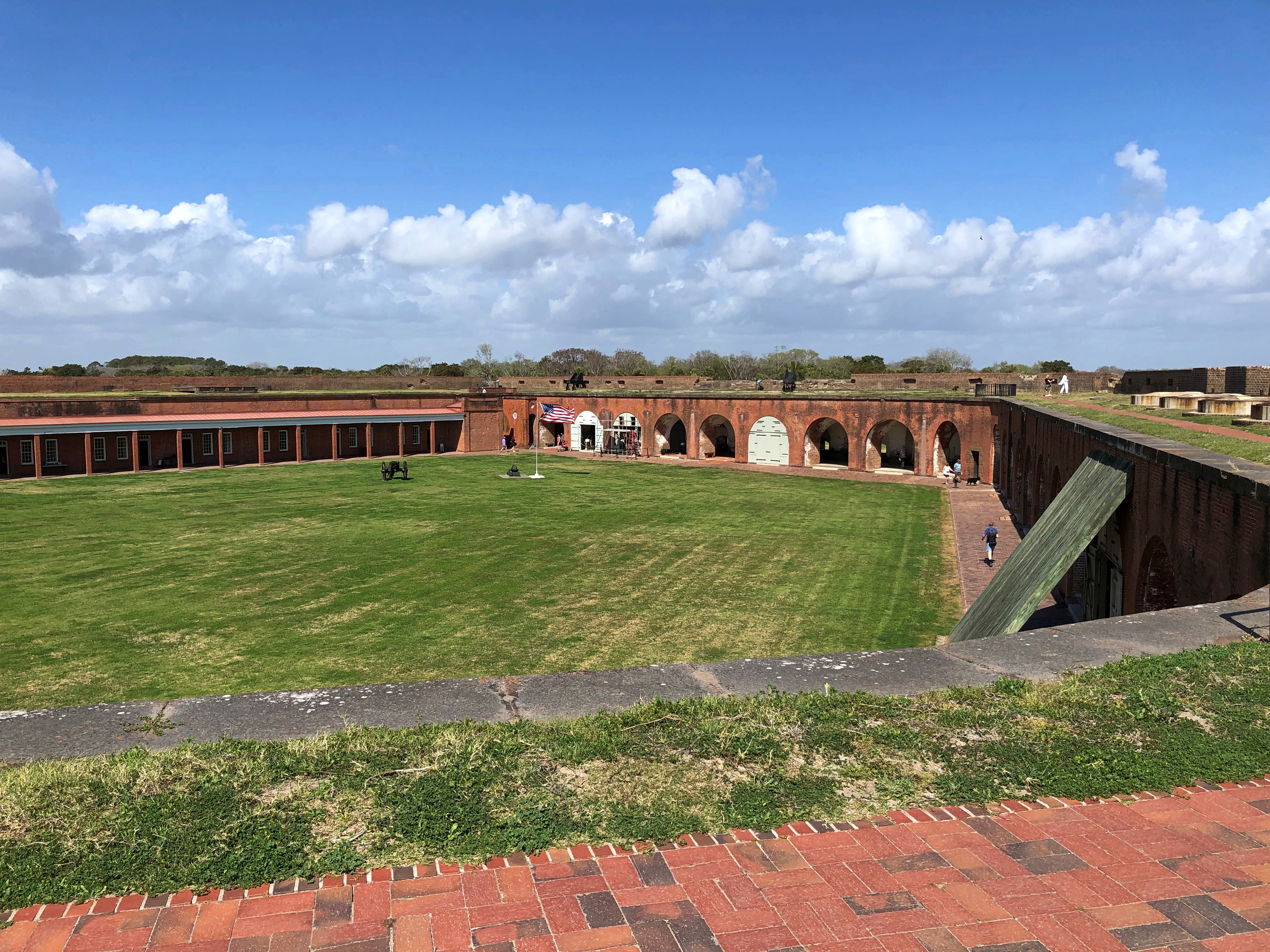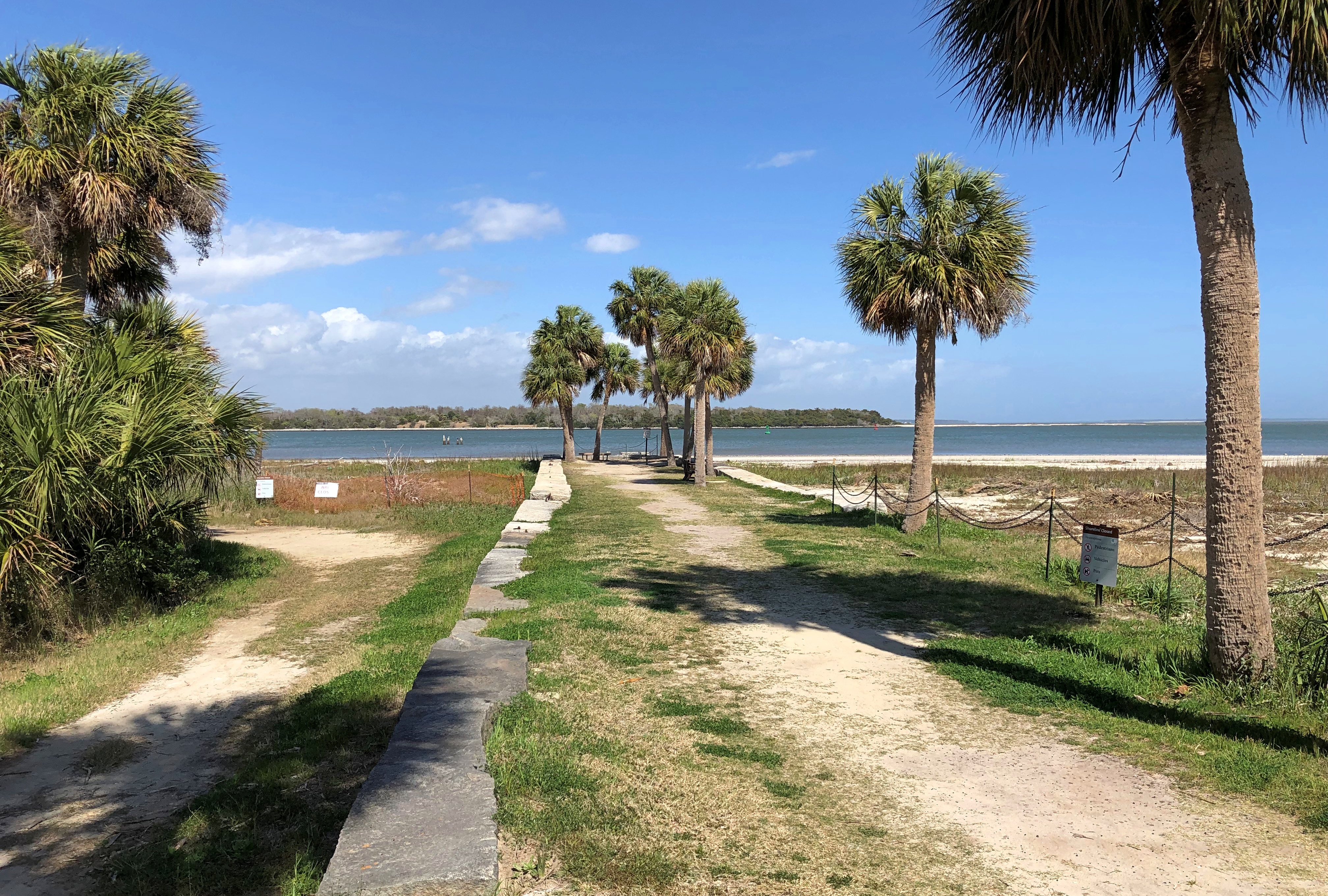Today was probably the last warm day of the year. For the next week and then some, at least, the chill will be on. Lunch and dinner were on our deck.

On the morning of October 15, a warm, clear Saturday in Atlanta, I got up early (for me) and walked from my short-term rental apartment in the Mechanicsville neighborhood to Garnett Station (on Marta’s Red and Gold Lines), mostly via Windsor Street, which was quiet and largely devoid of people.
From the station, I took the train to Peachtree Center, after which I spent time in Centennial Olympic Park.
The CNN Center is adjacent to the park, so I went there for a look too. Also, to find a bathroom, since the management of Centennial Olympic Park, in a gesture I take as hostile to the public at large, hasn’t bothered to re-open the park’s public bathrooms that closed during the pandemic emergency.
CNN employees can ride that tall escalator through a model Earth.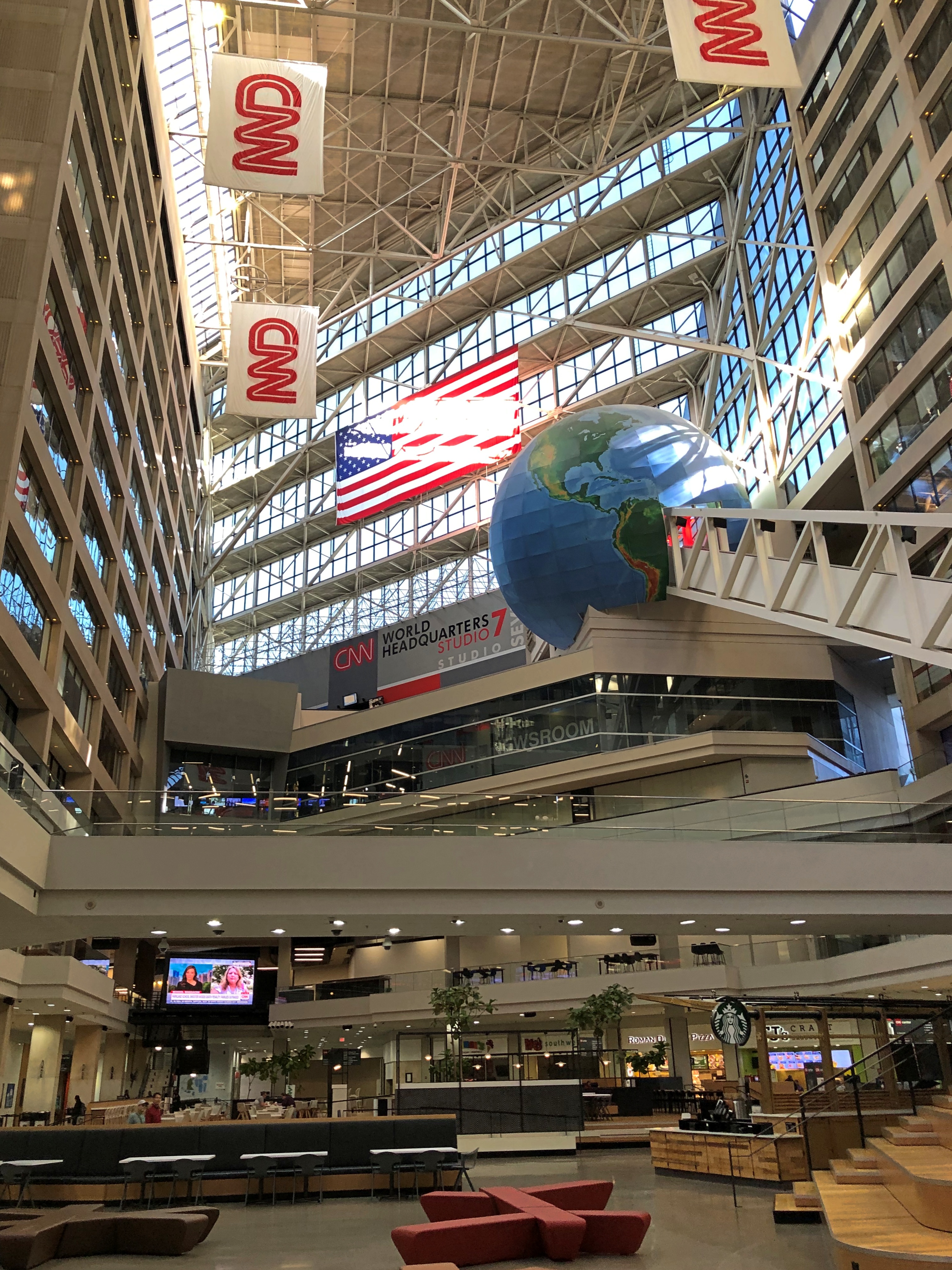
Soon after, I went to catch a streetcar — called a tram on the maps — which stops just outside the park. But I had a little time before the next arrival, so I looked around. In the vicinity of the park, you can see this building, whose name or address I didn’t bother with. Its Pac-Man-ish features, which appear to be the profile of a bold bird, move.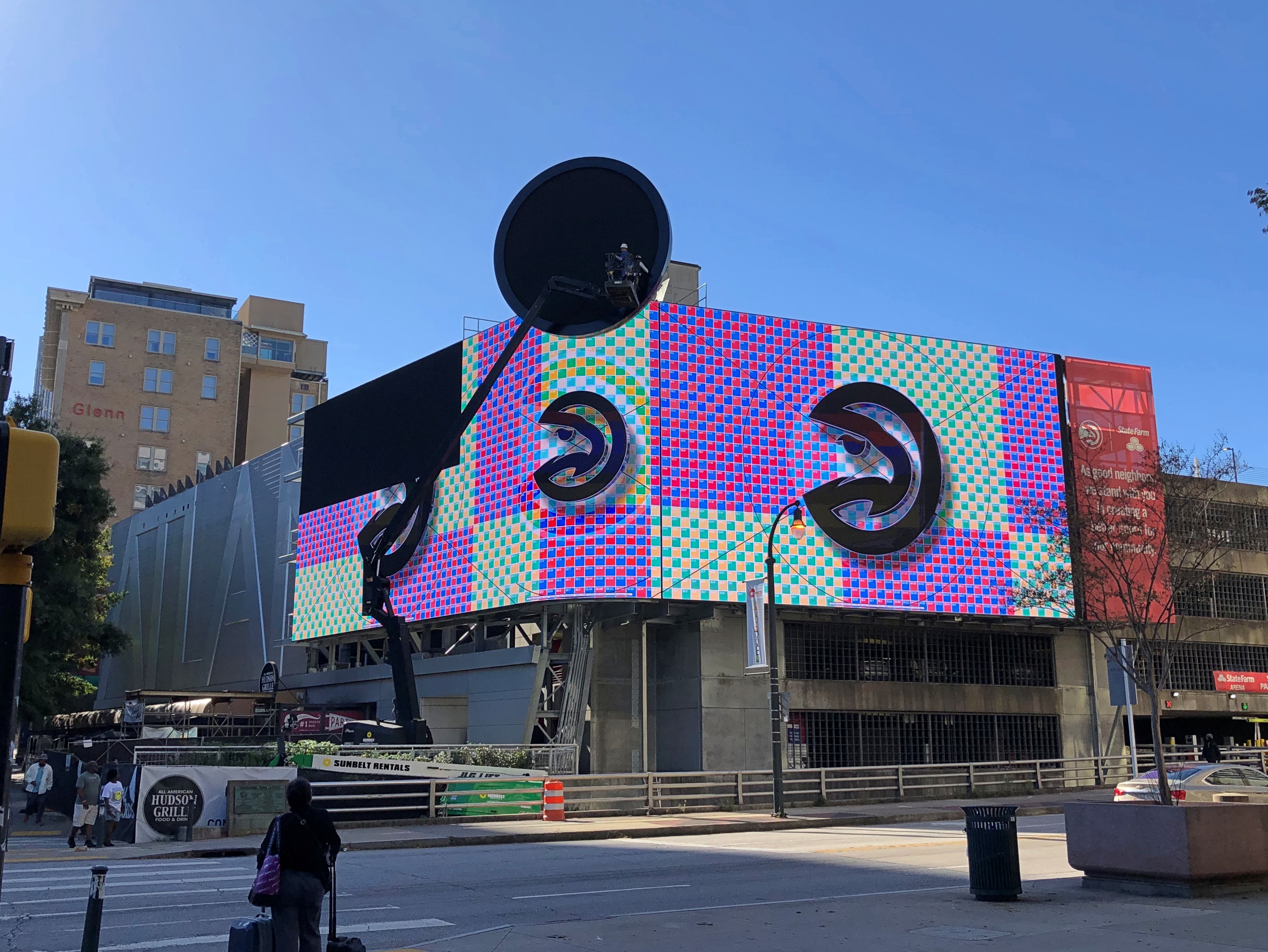
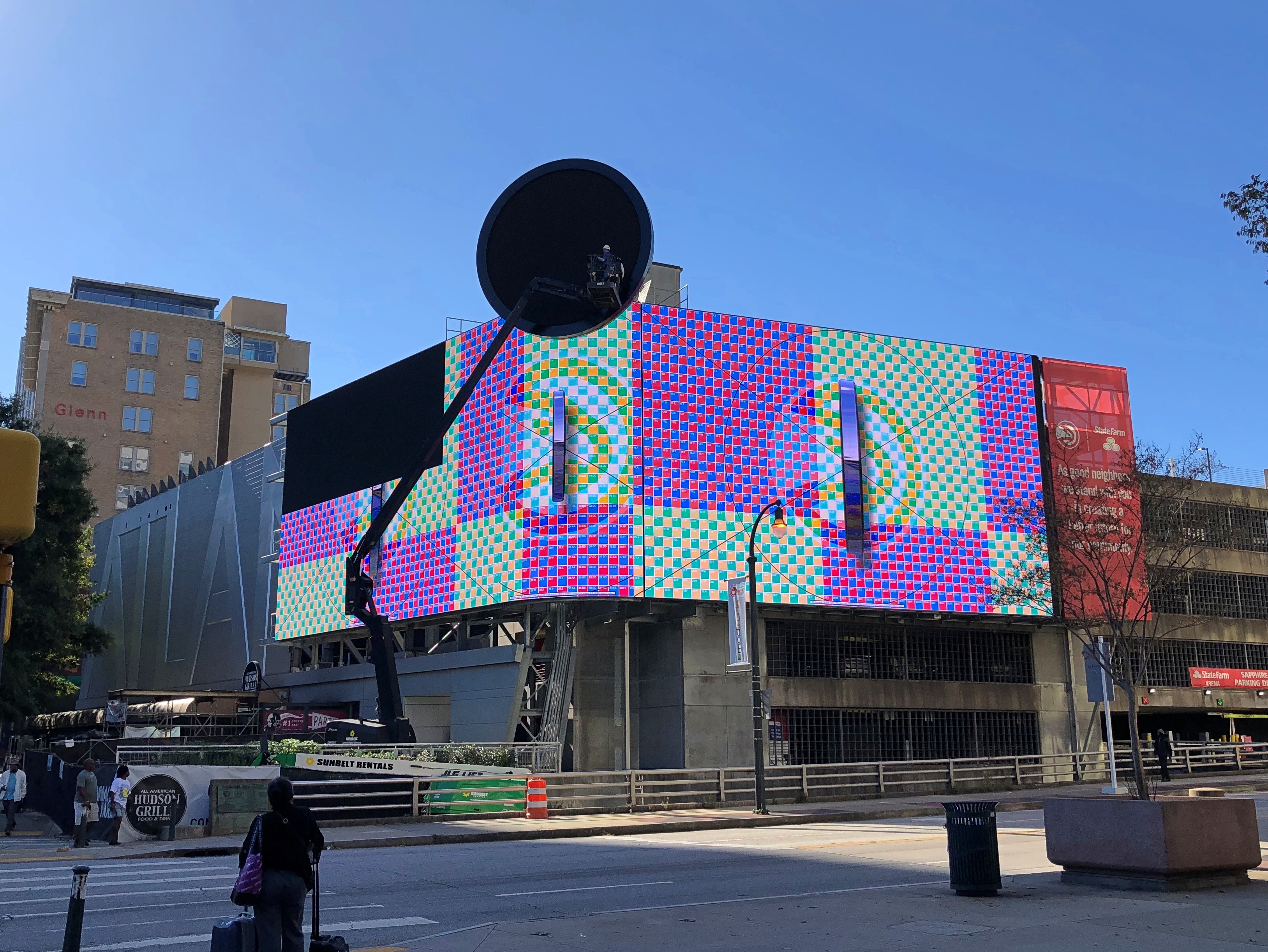
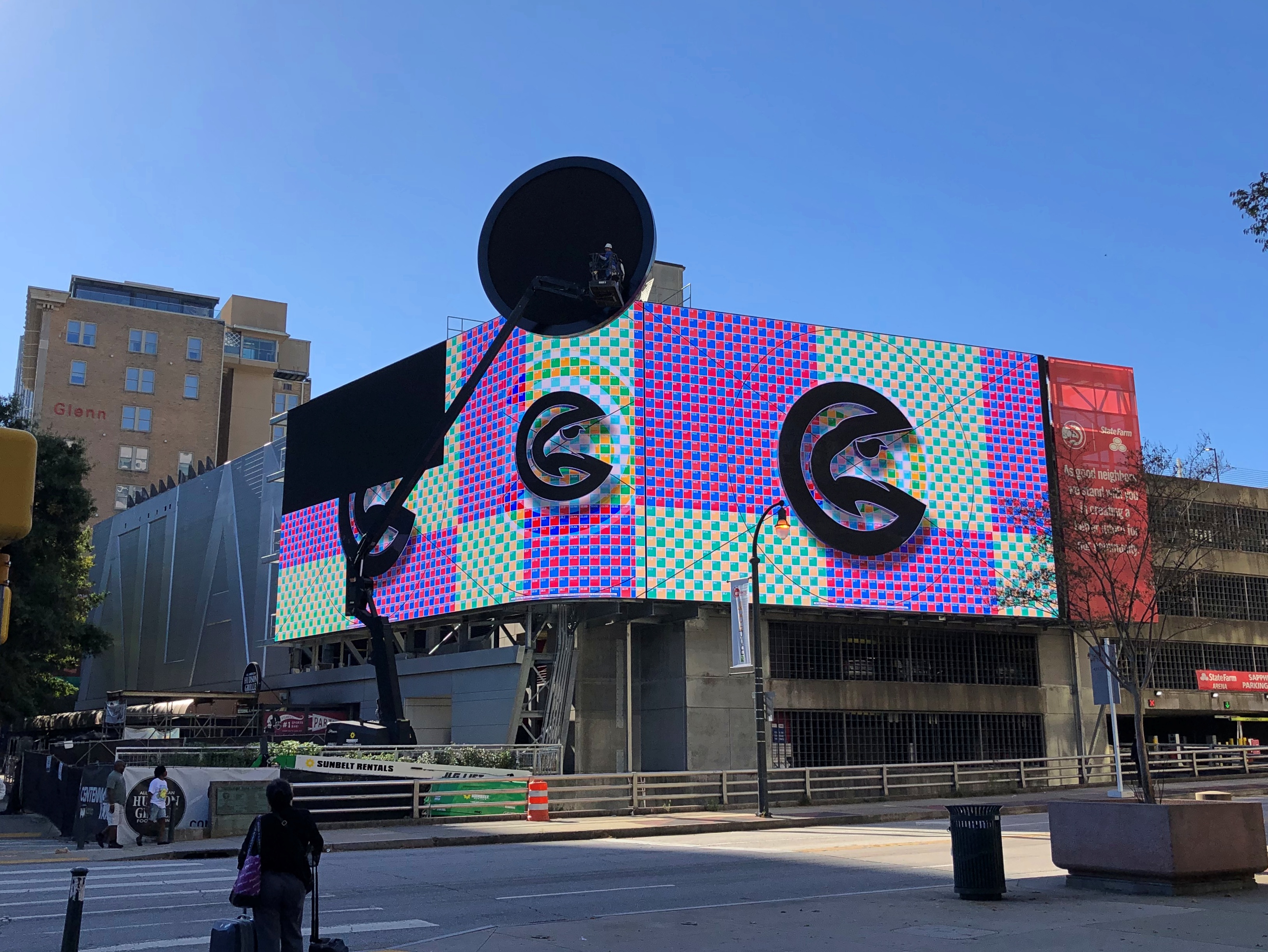
Then it changes its pattern, and they move some more.
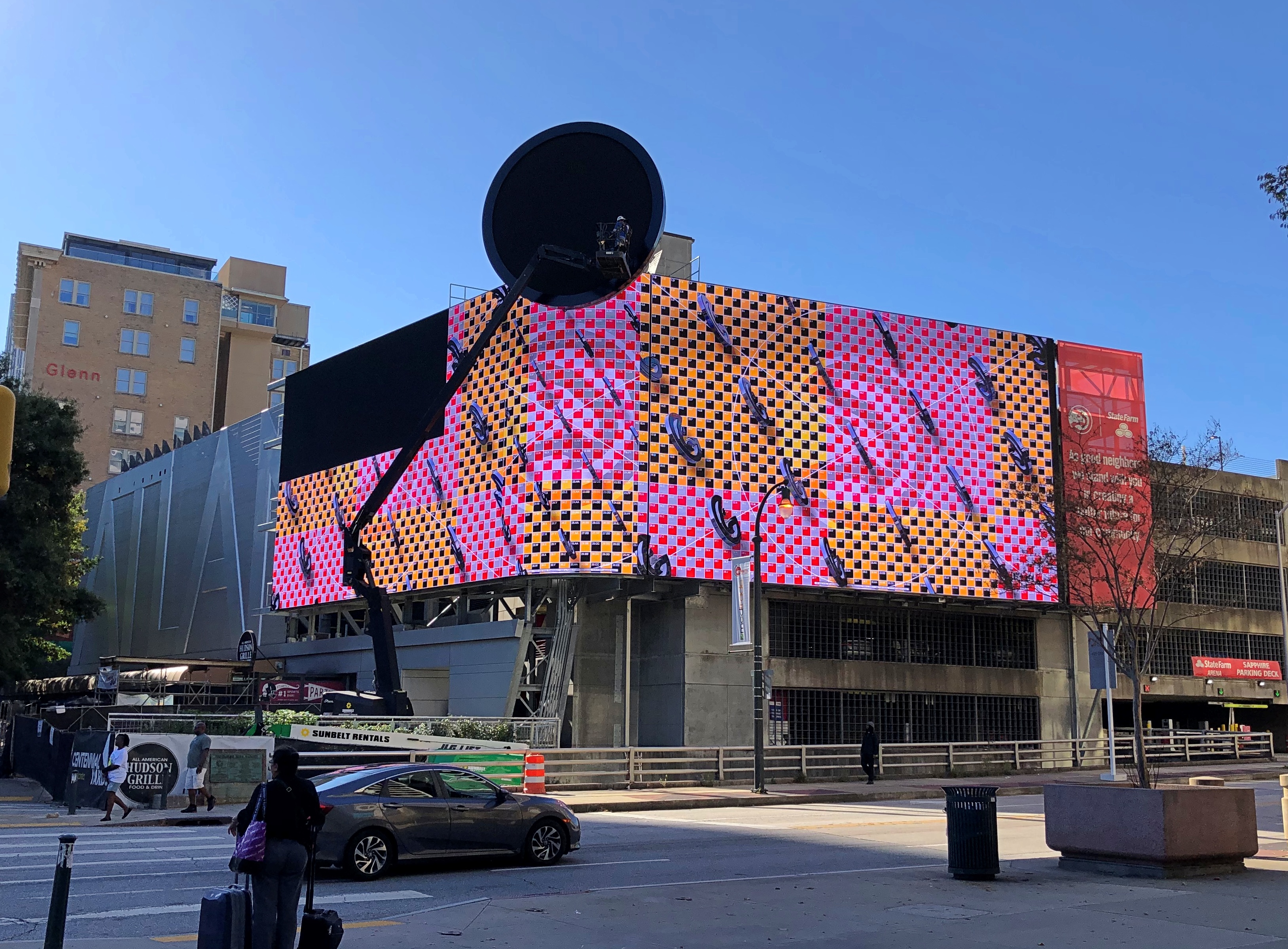
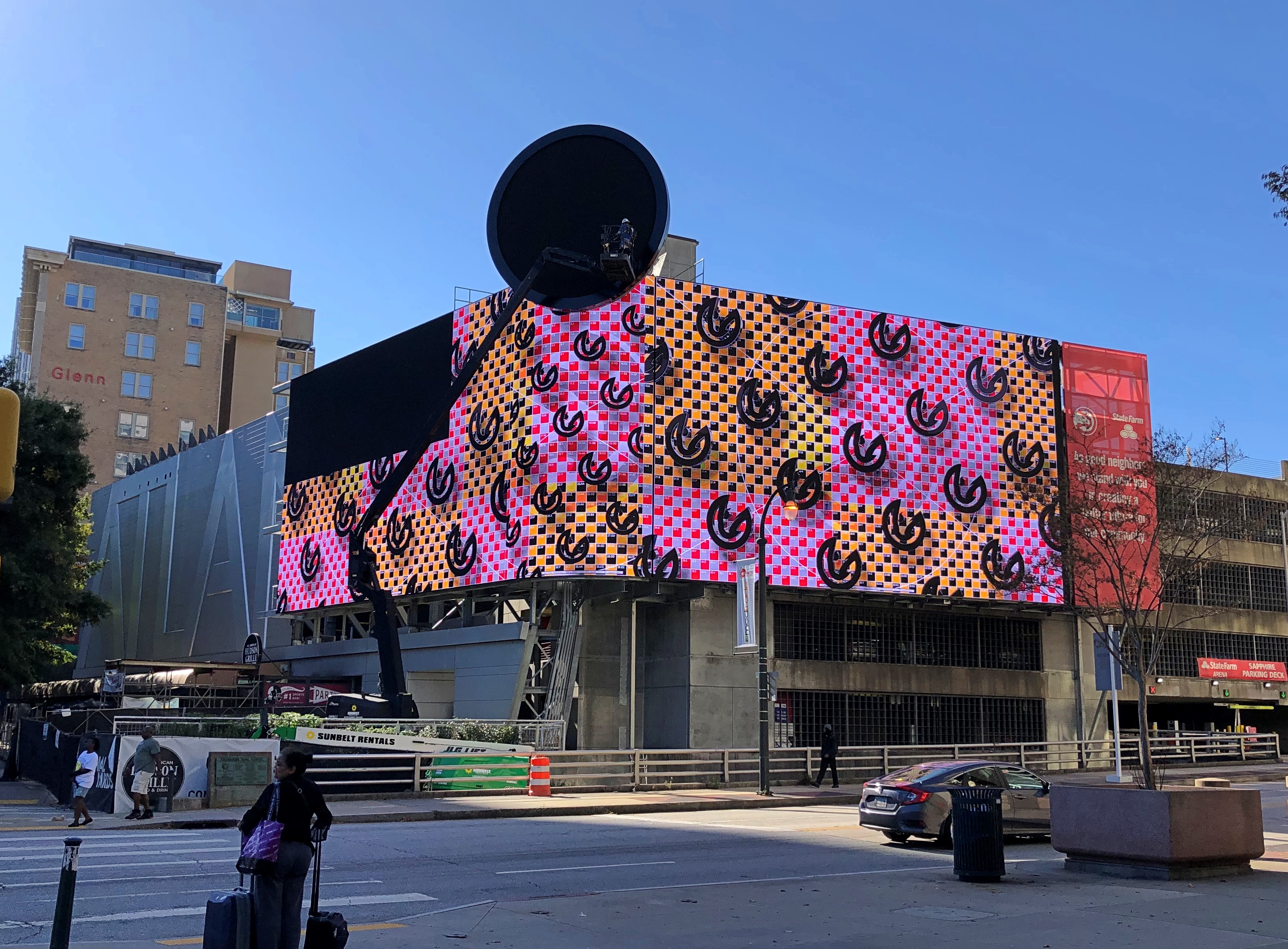
The Ferris wheel Skyview Atlanta, another feature of that part of downtown, wasn’t moving yet.
After a short ride, I arrived at the streetcar stop near the Martin Luther King, Jr. National Historical Park and Preservation District.
I have the MLK park service publication in front of me. Don’t let anyone tell you that QR codes are better, NPS. The paper pamphlet unfolds in a way a smart phone image cannot, and it allows things to jump out at you in a way they can’t.
As soon as I unfolded it completely, the beginning of a sentence jumped out at me.
“In the twelve or so years that Martin Luther King, Jr. led the American Civil Rights Movement…”
Twelve years. Making Martin Luther King Jr. a bright meteor in American history, an illumination of the better angels of our nature, that’s over and done all too soon. Except that his legacy, his ethical bequest to the nation and the world, is hardly over and done.
The park captures the geography of Dr. King’s early life: a line from his birthplace and boyhood home on Auburn Avenue to his church — the church of his father and grandfather — also on Auburn, only blocks away.
When the King family led Ebenezer Baptist Church, it met here, a building now known as Historic Ebenezer Baptist Church, Heritage Sanctuary. It was completed in the 1920s and restored in recent years to look like it did in the 1960s.
Not open. Some kind of maintenance going on, I think. I’d liked to have seen the inside.
This is the Horizon Sanctuary, a 1999 structure, where the church gathers now.
It isn’t part of the park, but on its border, next to the main visitor center and museum devoted to Dr. King and his times. The church isn’t a relic of the past either, its congregation robust these days. Its pastor, Sen. Raphael Warnock, is in the thick of trying to win a full term in the U.S. Senate.
Close to the historic church and also on Auburn, Dr. and Mrs. King repose in a tomb perched on a circular island, the focus of a deep blue reflecting pool running the length of a brick plaza. Promenade might be a better way to put it, considering that people were strolling the length of it.
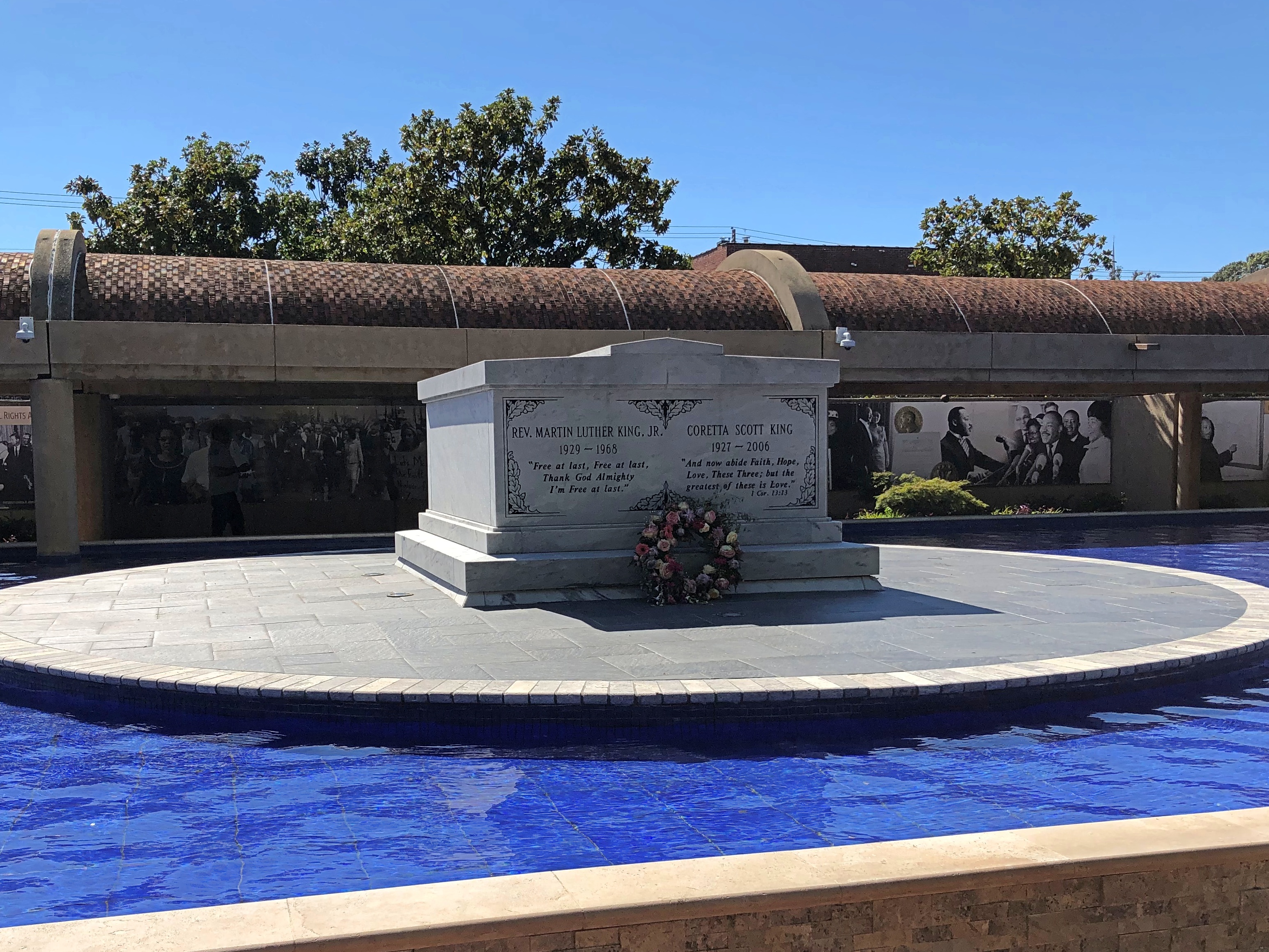

An eternal flame on the grounds.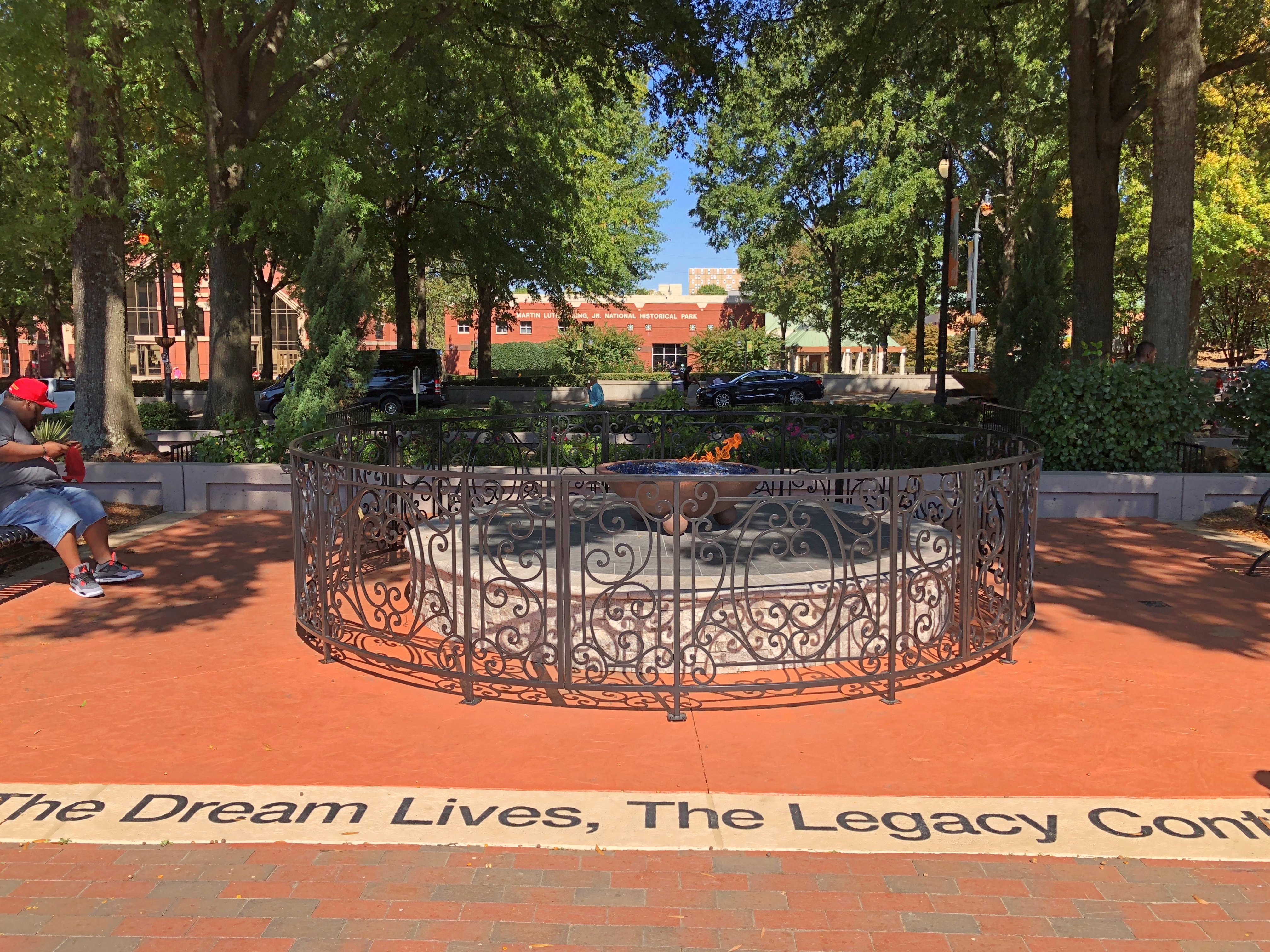

I spent some time in the museum. A fair amount to read and view, but the most poignant artifact was the wagon that carried his coffin.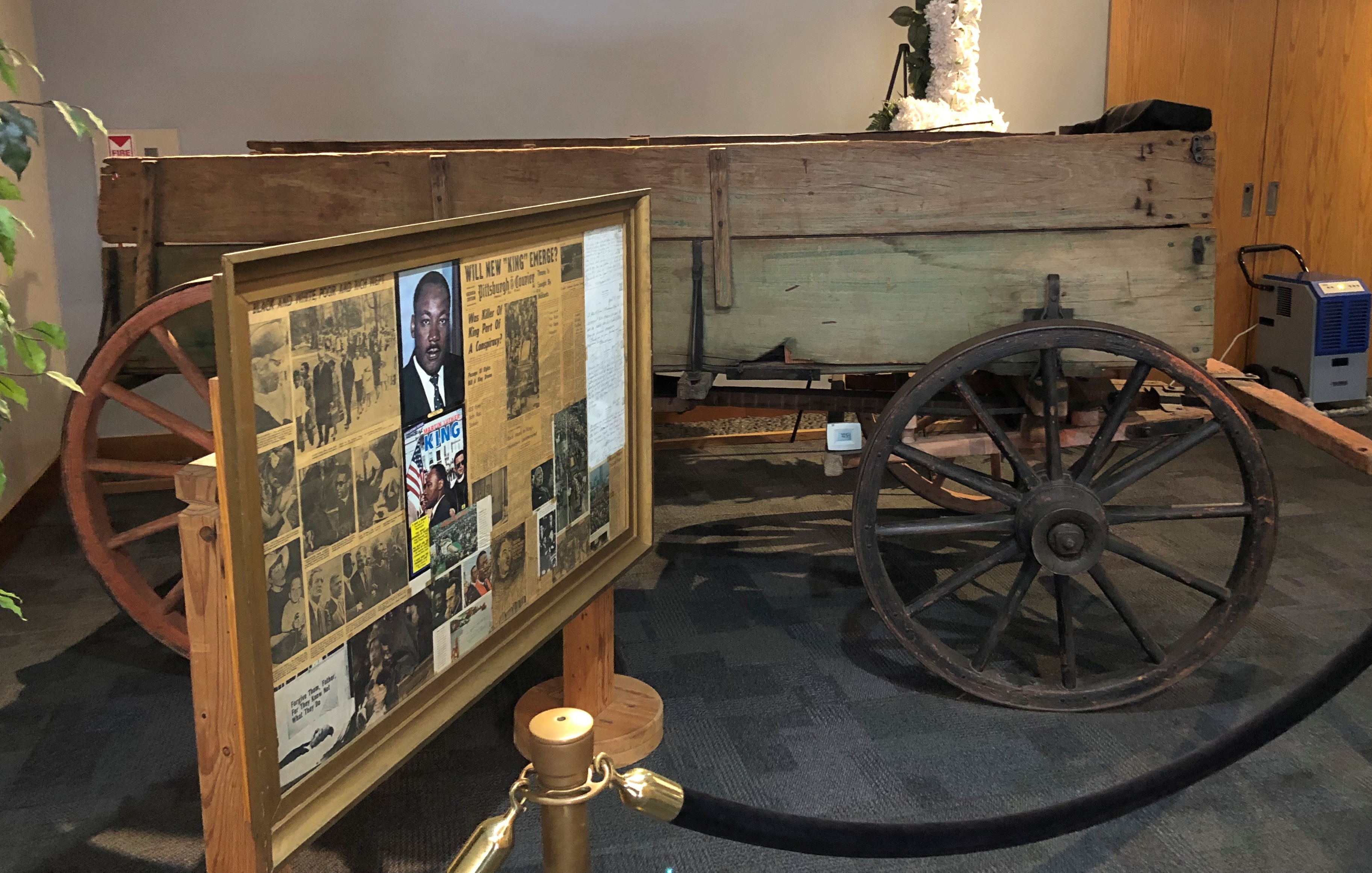

Outside the museum, there’s a garden with a mouthful of a name: The Martin Luther King, Jr. “I Have A Dream” World Peace Rose Garden.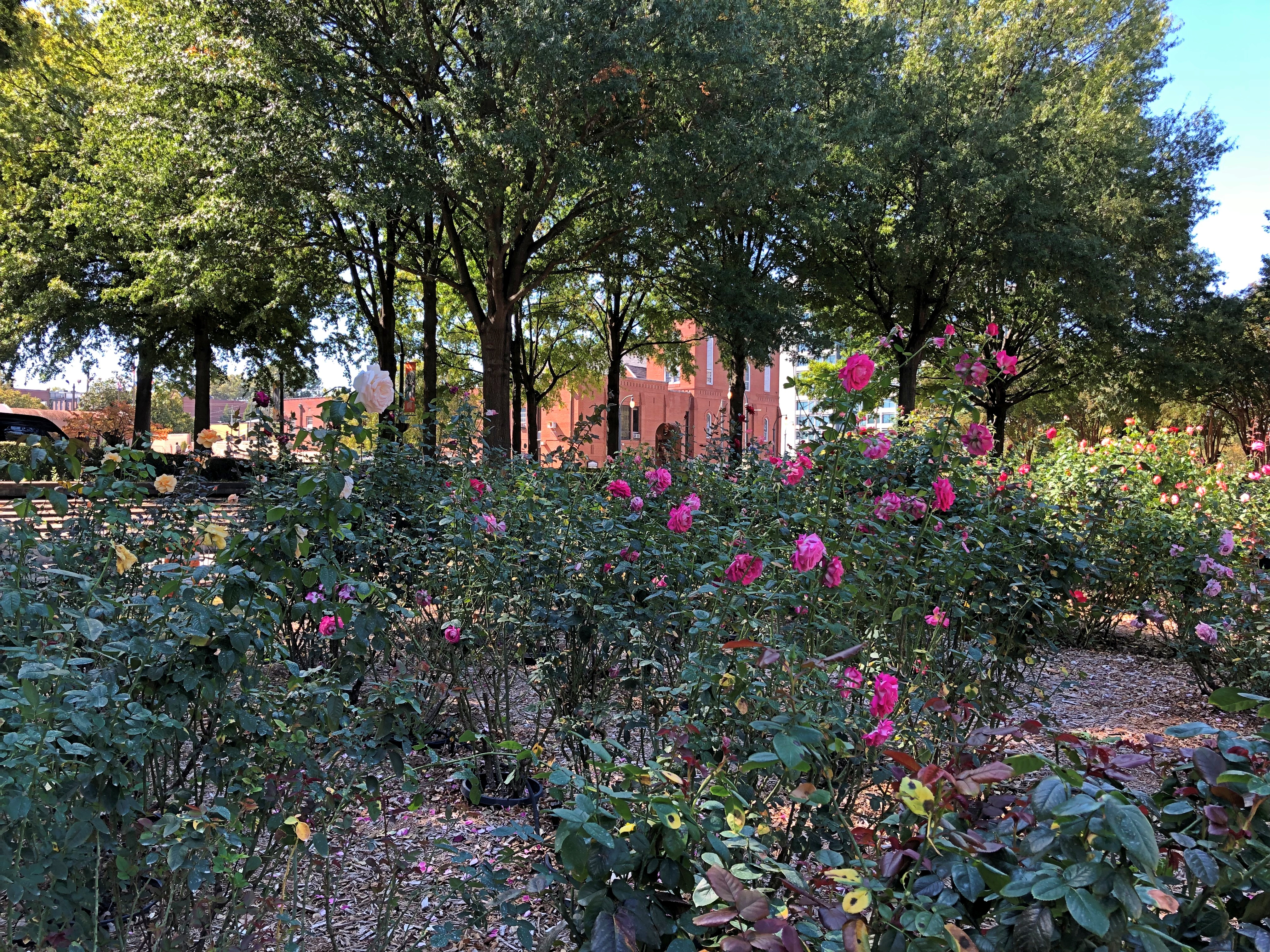

Also on Auburn, his birth house.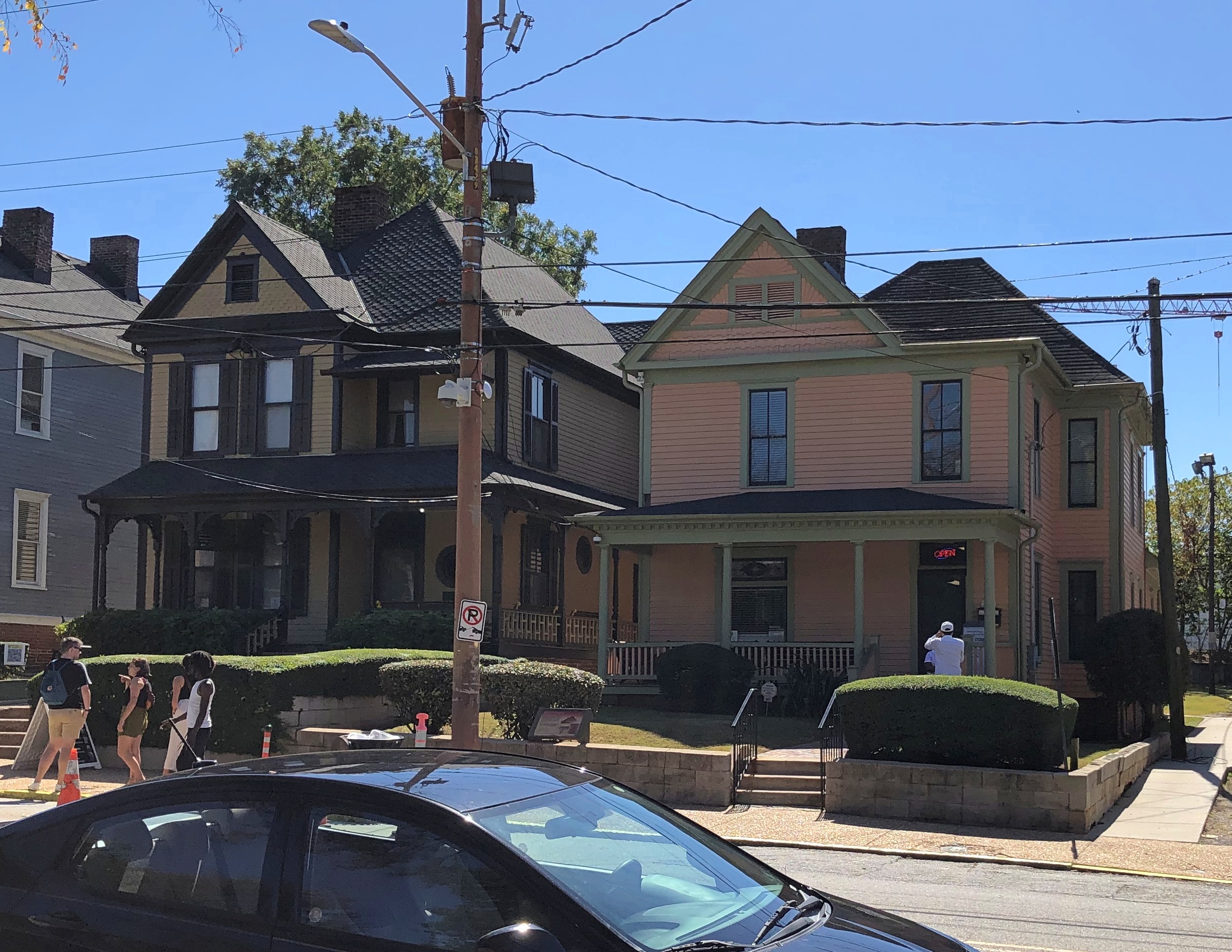
It’s on the left. On the right is a book store and the museum shop. Tours of the birth house were already booked for the day.
“Auburn Avenue was the commercial, cultural, and spiritual center of African American life in Atlanta prior to the civil rights movement,” says the New Georgia Encyclopedia. ” ‘Sweet Auburn’ boasted a concentration of Black-owned businesses, entertainment venues, and churches that was unrivaled elsewhere in the South.”
The street had been renamed Auburn in 1893; originally it had been Wheat Street.
“During the next two decades, as restrictive Jim Crow legislation was codified into law, the city’s African American population became confined to the area between downtown and Atlanta University and to neighborhoods on the city’s east side, known today as the Old Fourth Ward,” the encyclopedia notes.
“It was during this period that Auburn Avenue first achieved prominence as a commercial corridor and became home to the city’s emerging Black middle class.
“Ironically, Auburn’s civic activism led to its undoing. As the NAACP and local voting-rights organizations, from their Sweet Auburn offices, lobbied state and local governments for an end to segregation, and as native son Martin Luther King Jr… led the crusade for civil rights before a national audience, the street began its steep decline. With the legal barriers to integration removed, many Auburn shopkeepers moved their businesses to other areas of the city, and residents began migrating to Atlanta’s west side.”
Historic No. 6 Fire Station, which is part of the park.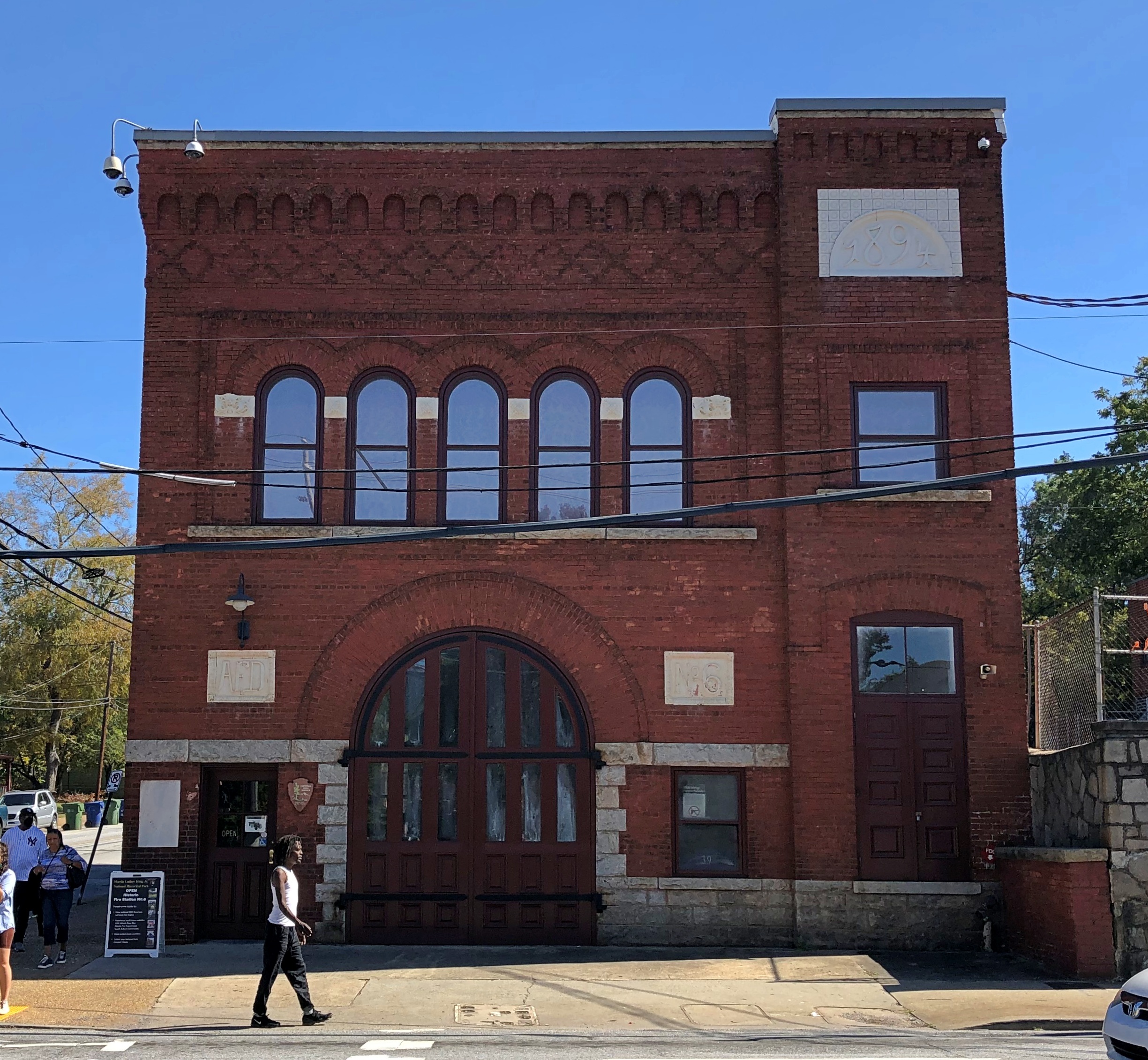
The NPS says: Built in 1894 in Romanesque Revival style, the fire station stood guard over the city for nearly 100 years. In the 1960s, it became one of Atlanta’s first racially integrated firehouses. It closed in 1991.
So before the ’60s, Atlanta firehouses were segregated. How nuts is that?
Besides sites associated with Dr. King, Auburn still features some shotgun houses, which mostly aren’t part of the park.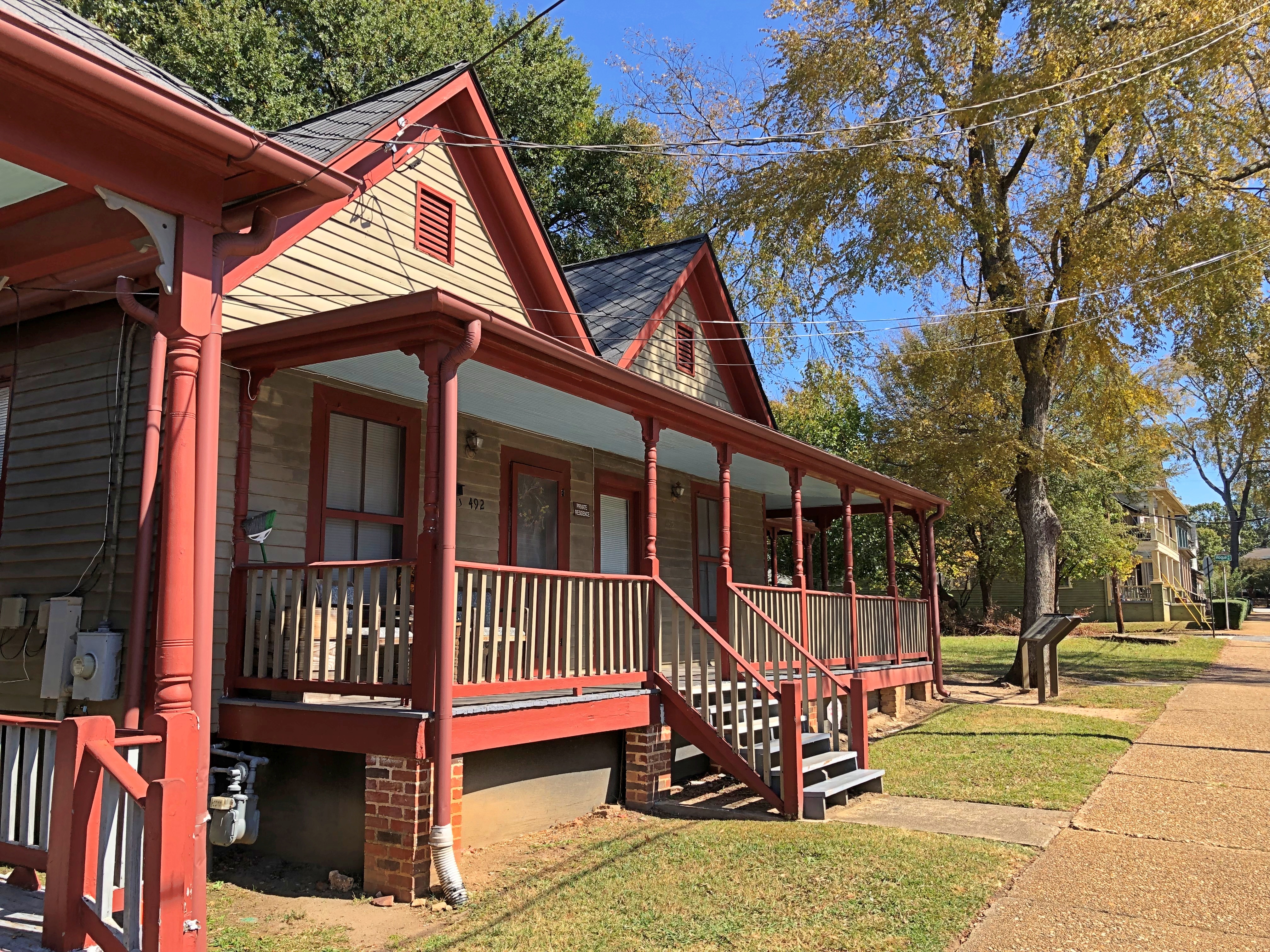

Plus some larger houses. This one is home to the Historic District Development Corp.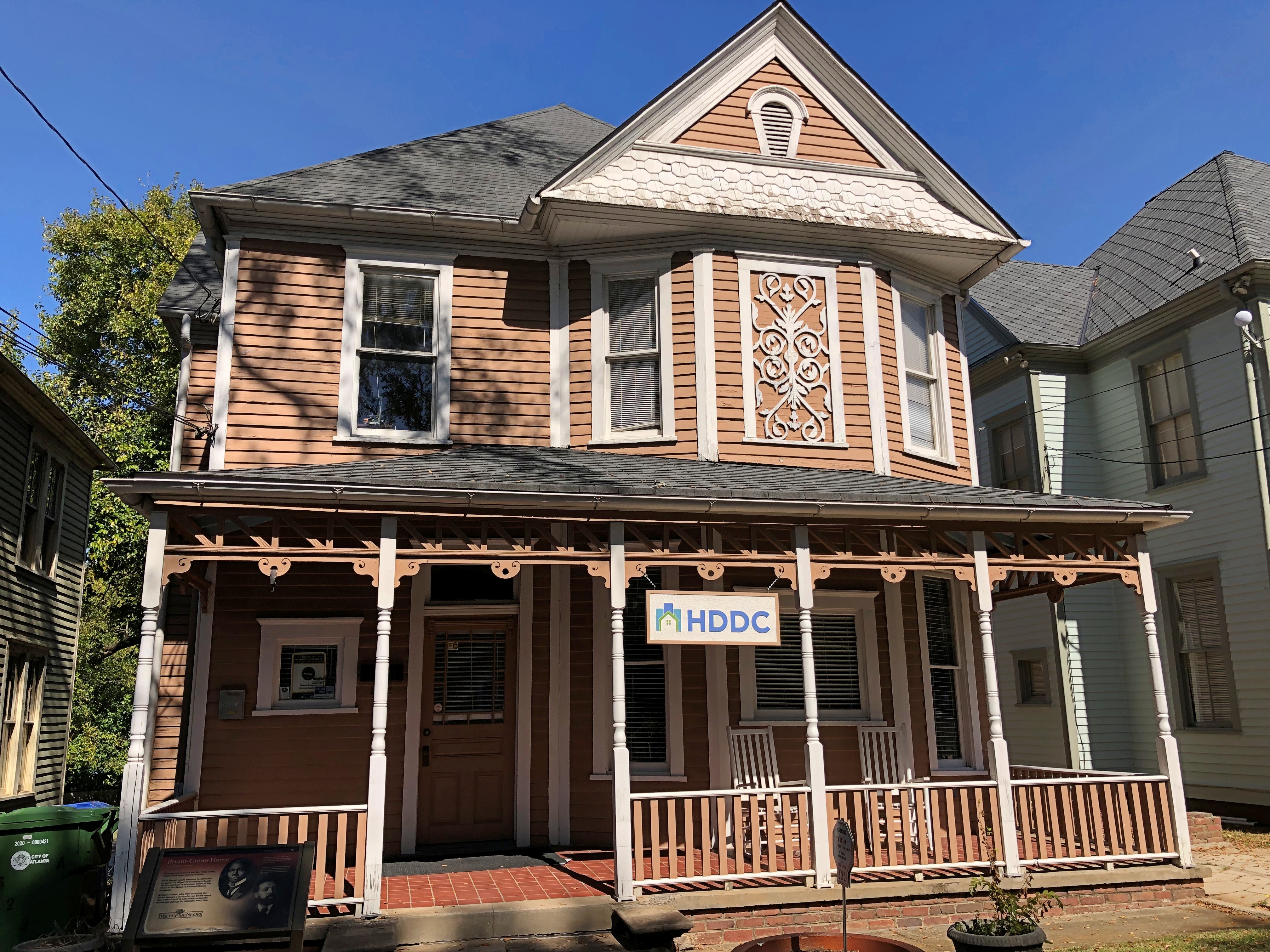
Eventually, I wandered beyond Auburn to a parallel street, Edgewood Avenue. It’s an active commercial street in our time, with various establishments.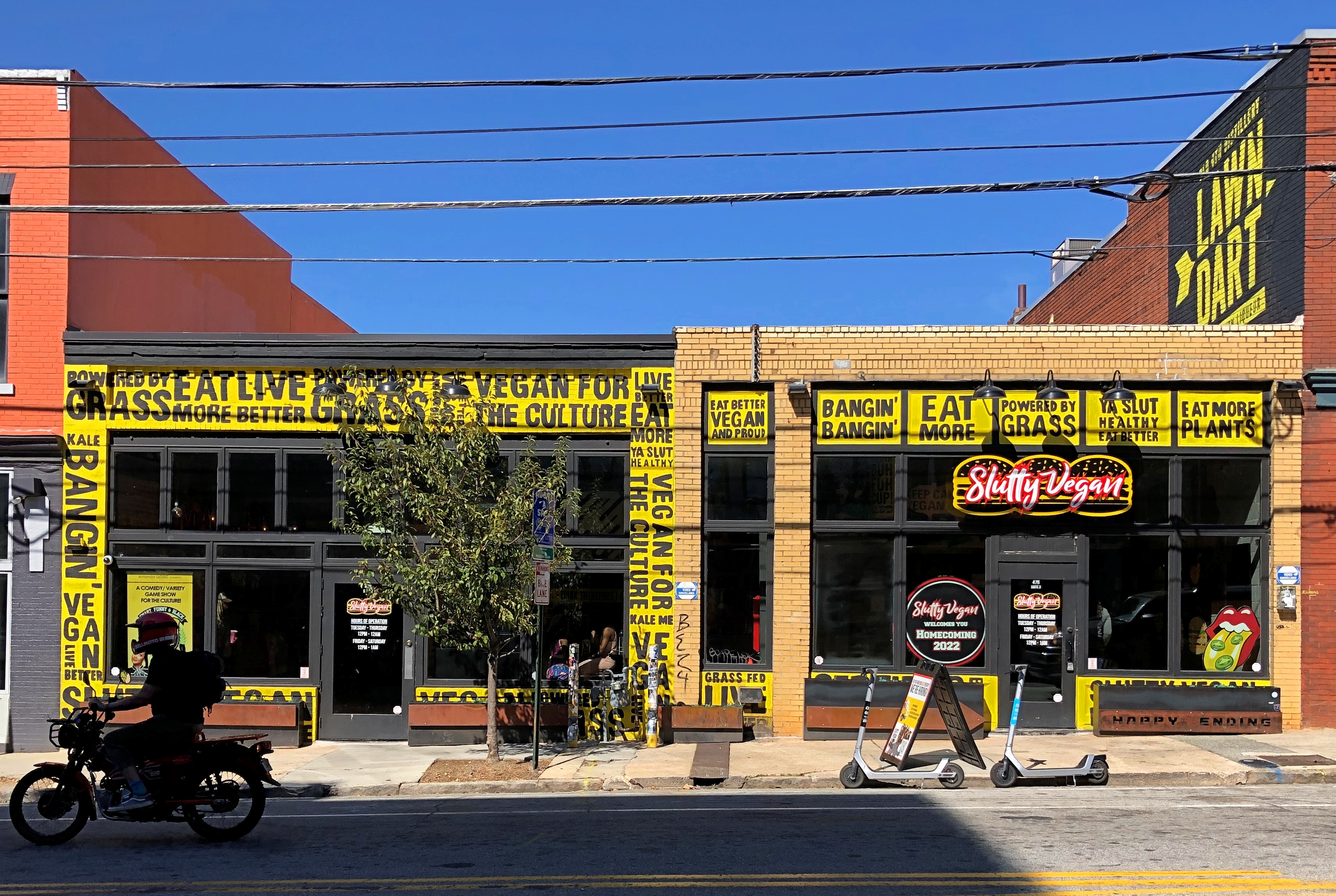
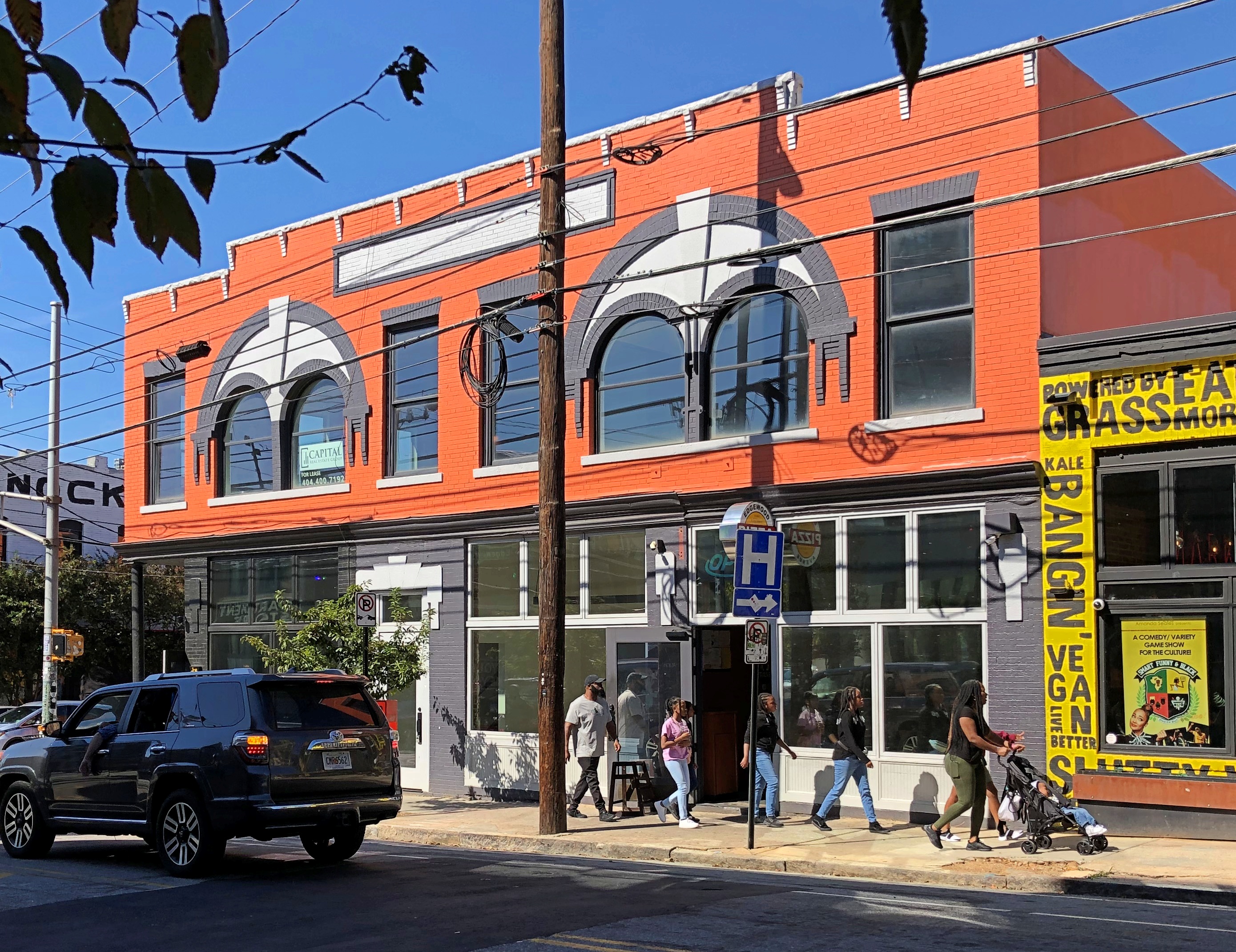

Plus murals.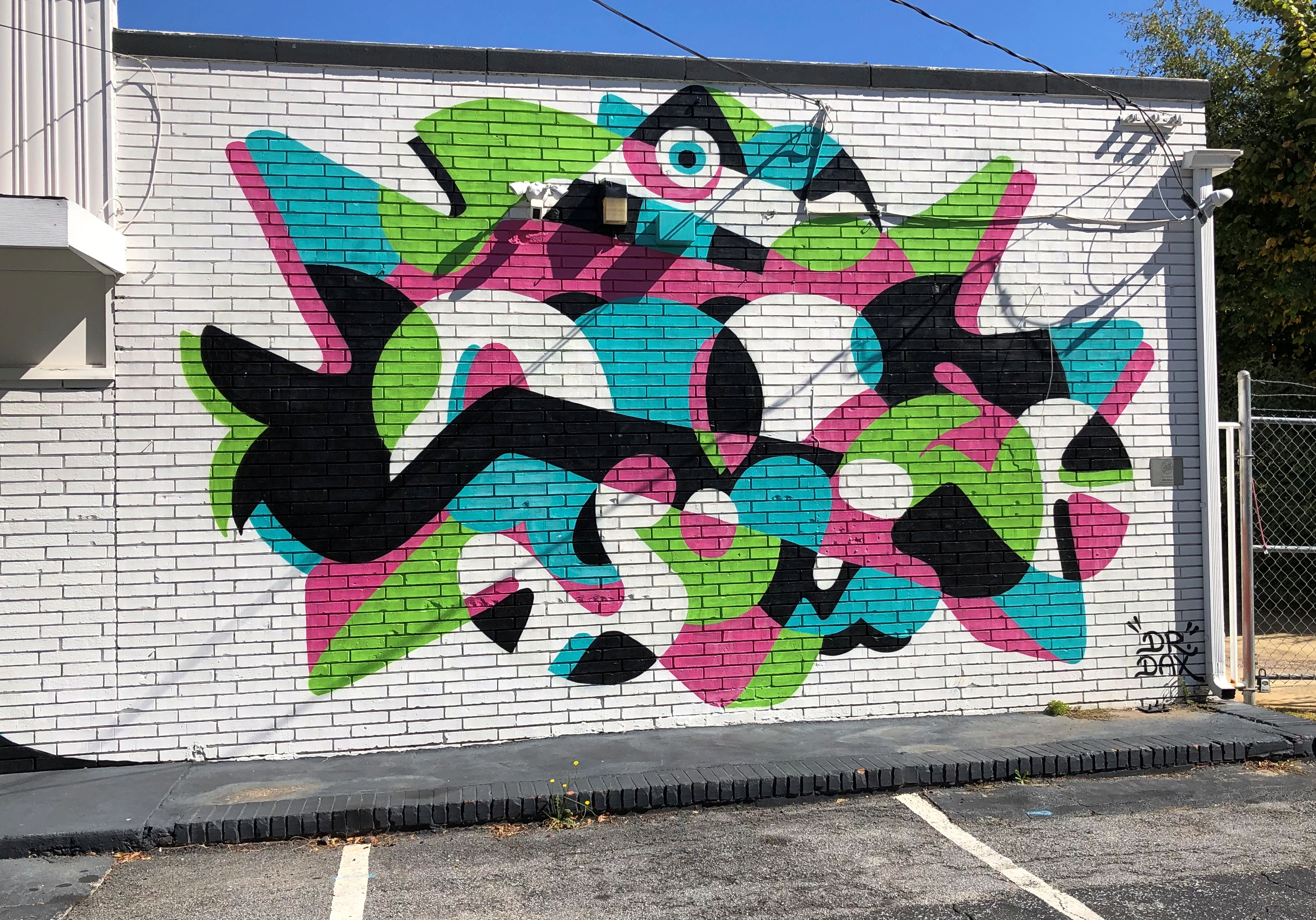


I had a late lunch of breakfast food at Thumbs Up, a diner. Its outside wall.
Eggs and pancakes, done up right. Worth the half-hour wait sitting outside.
